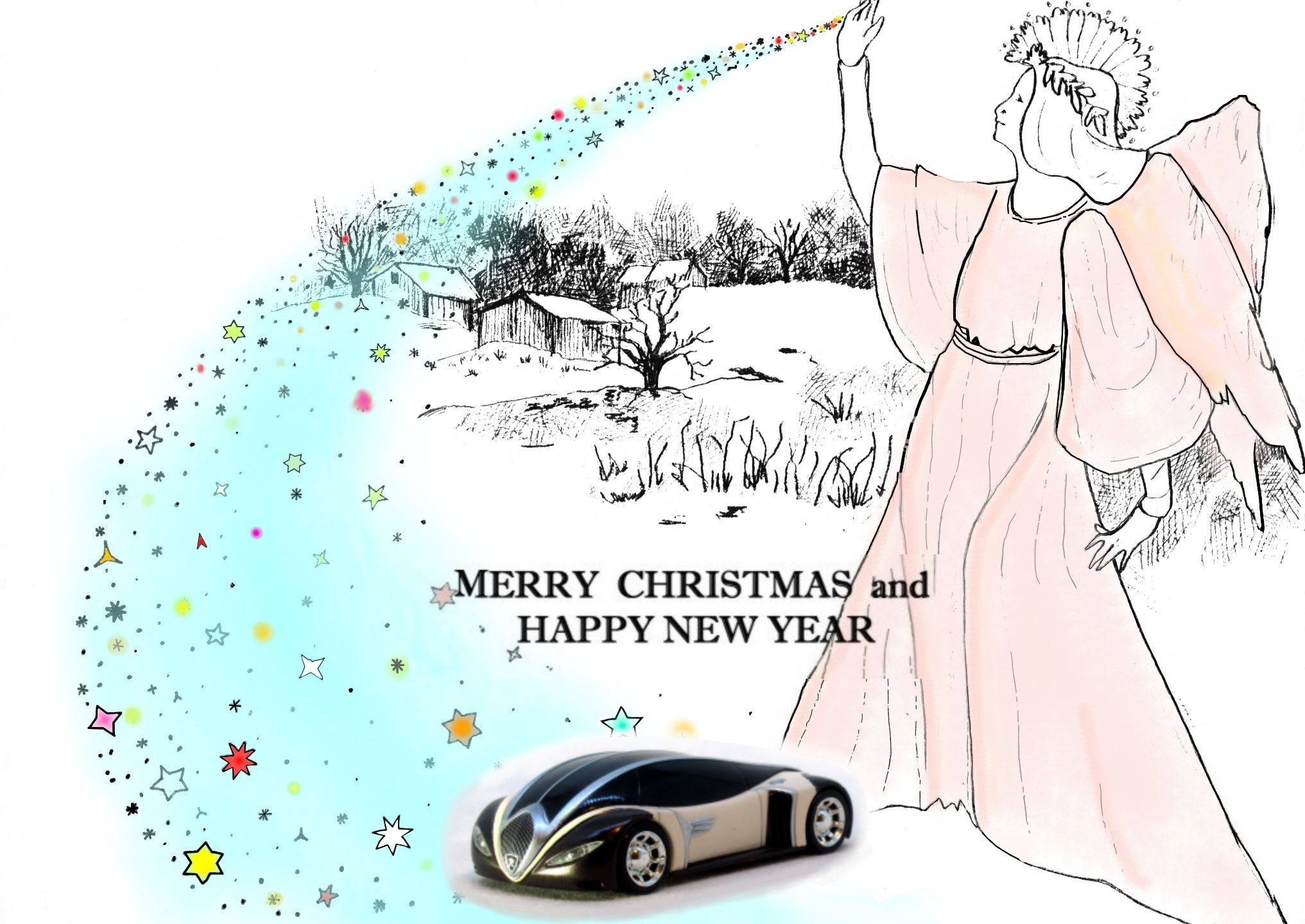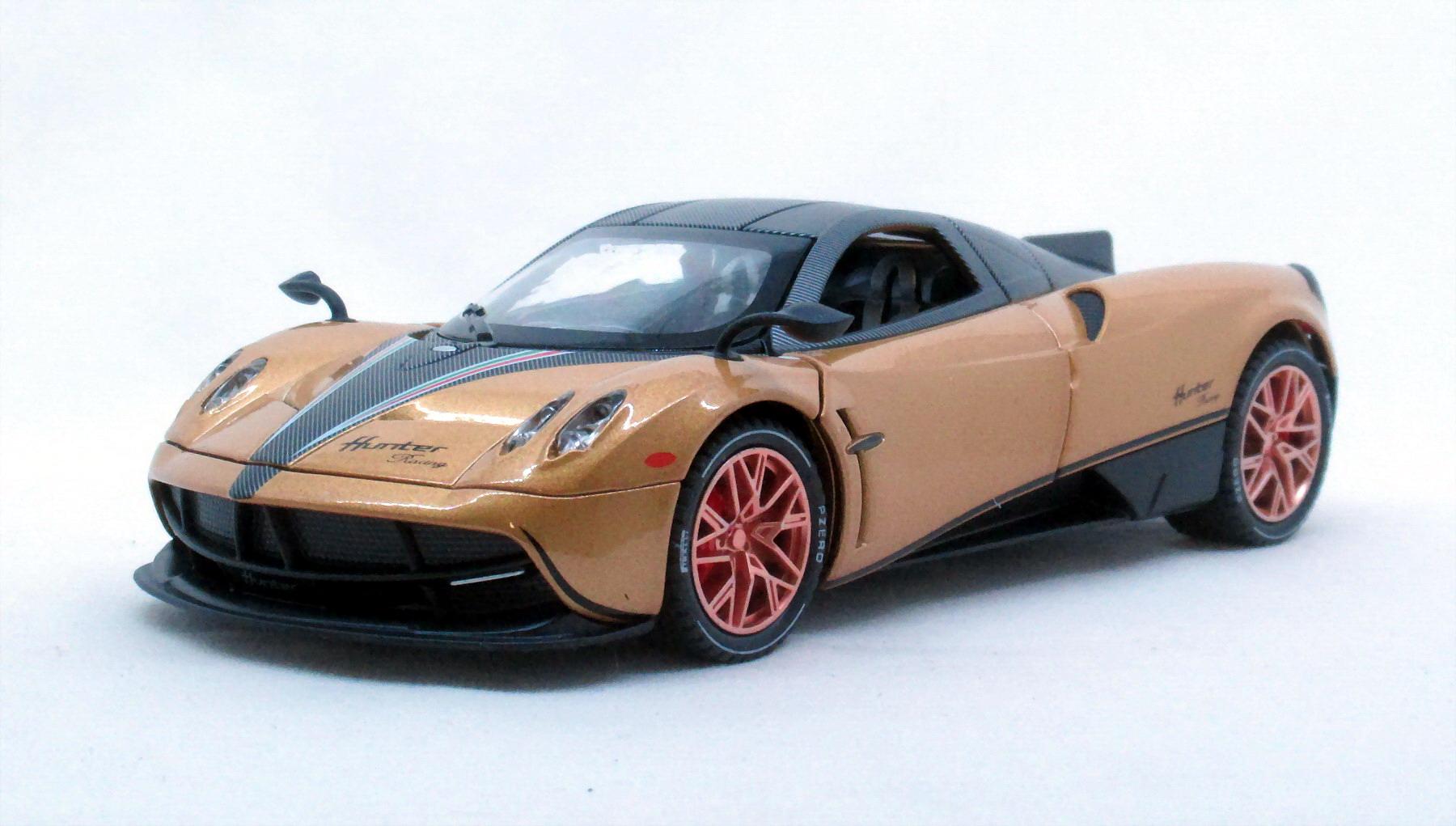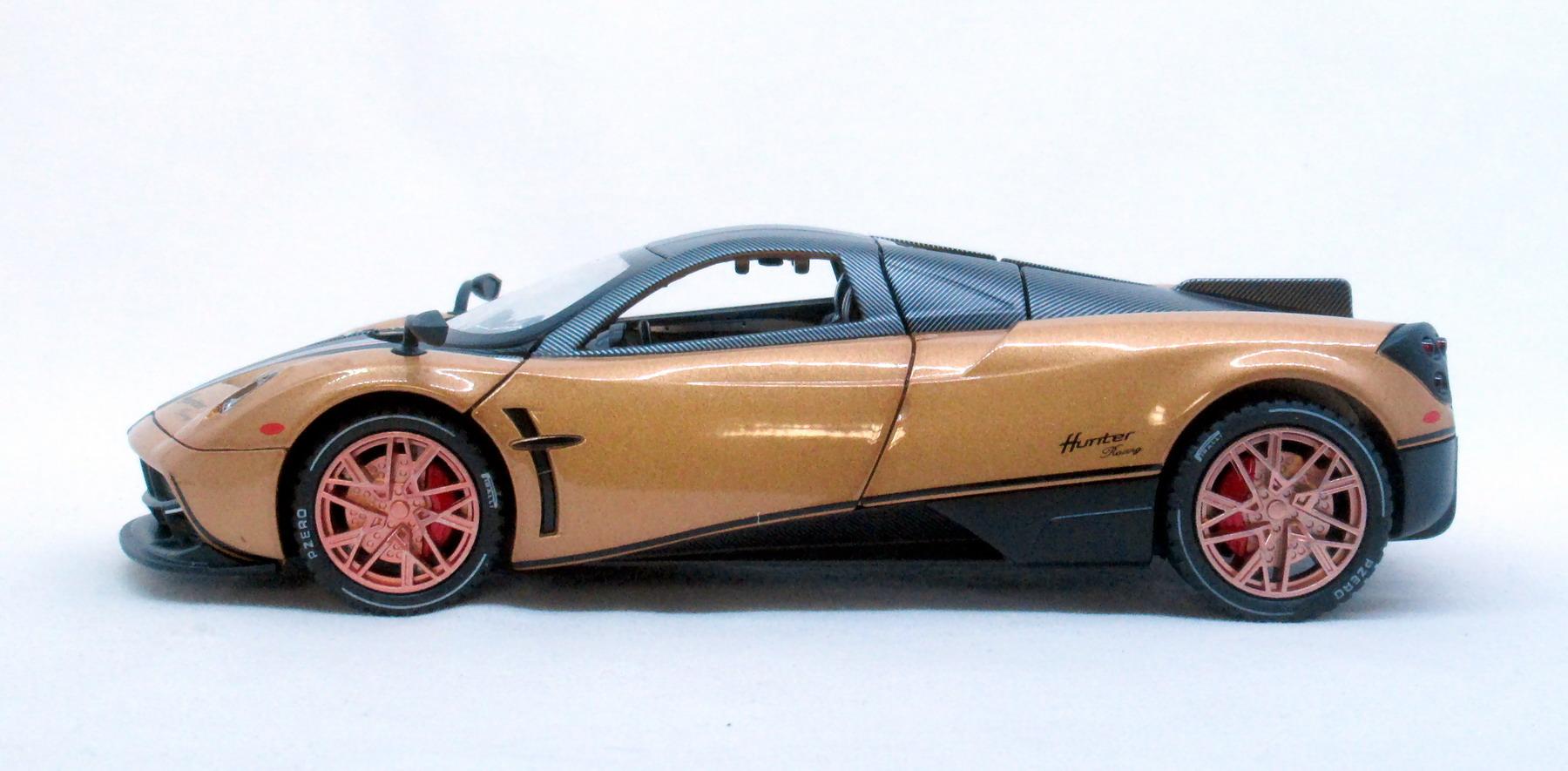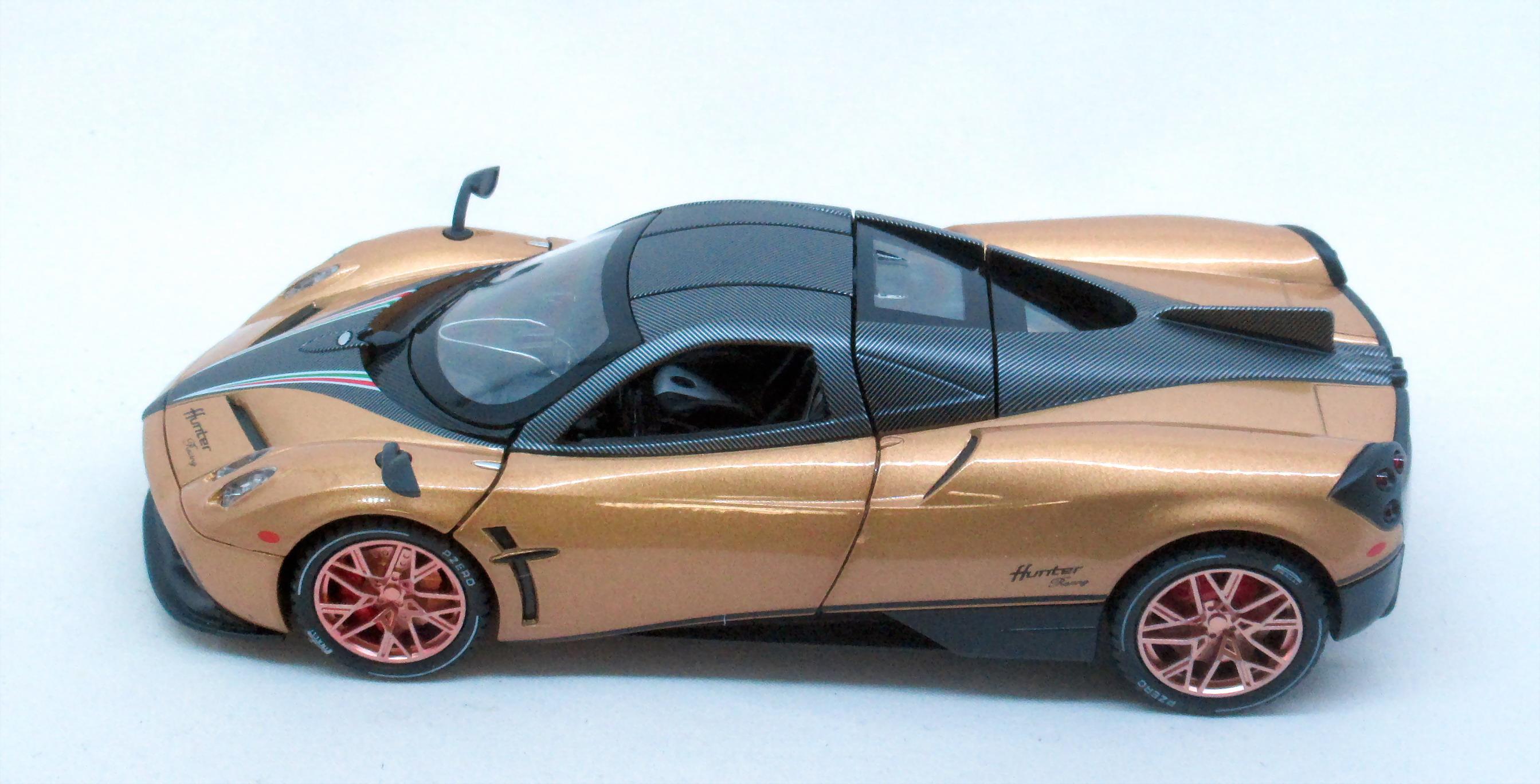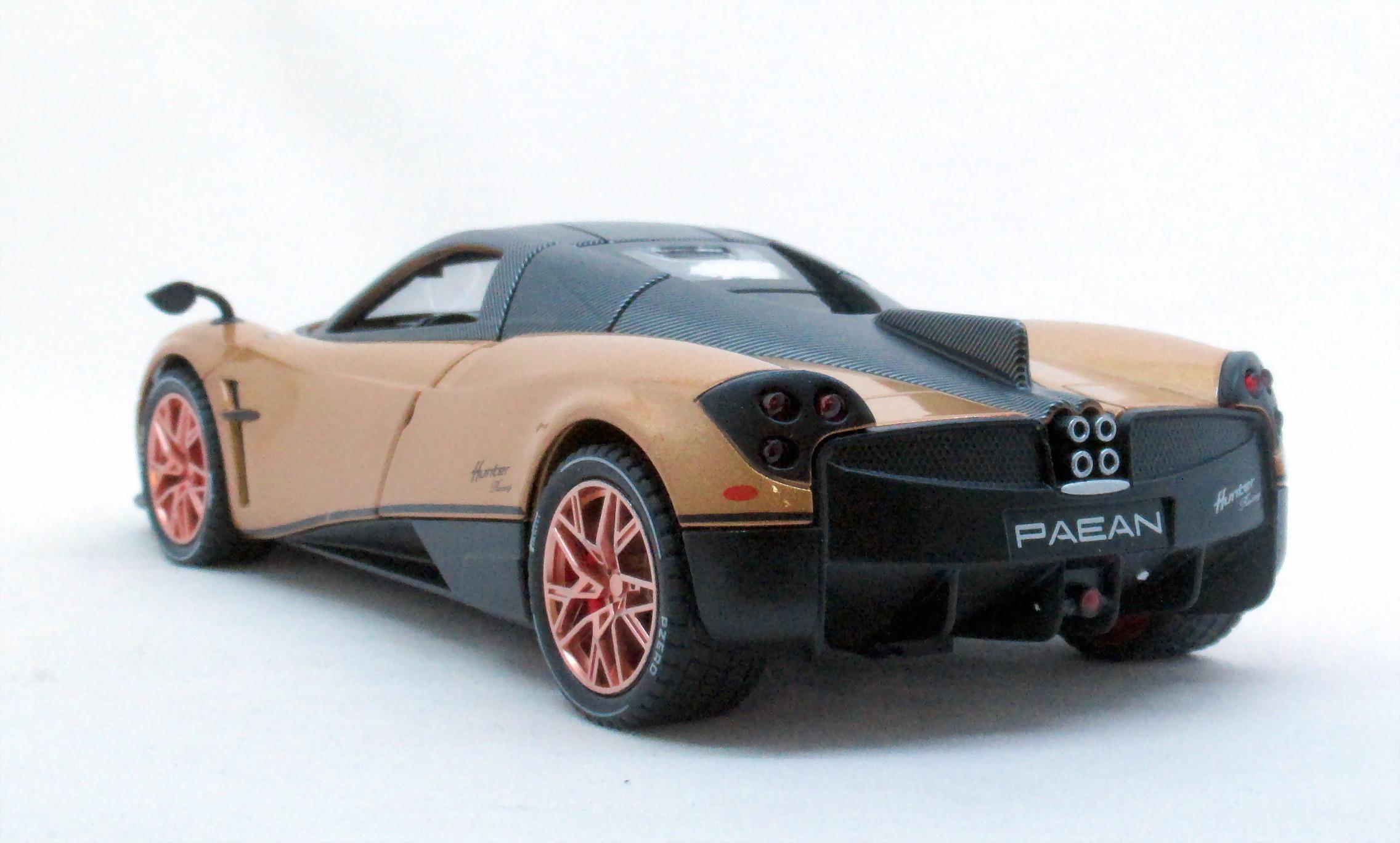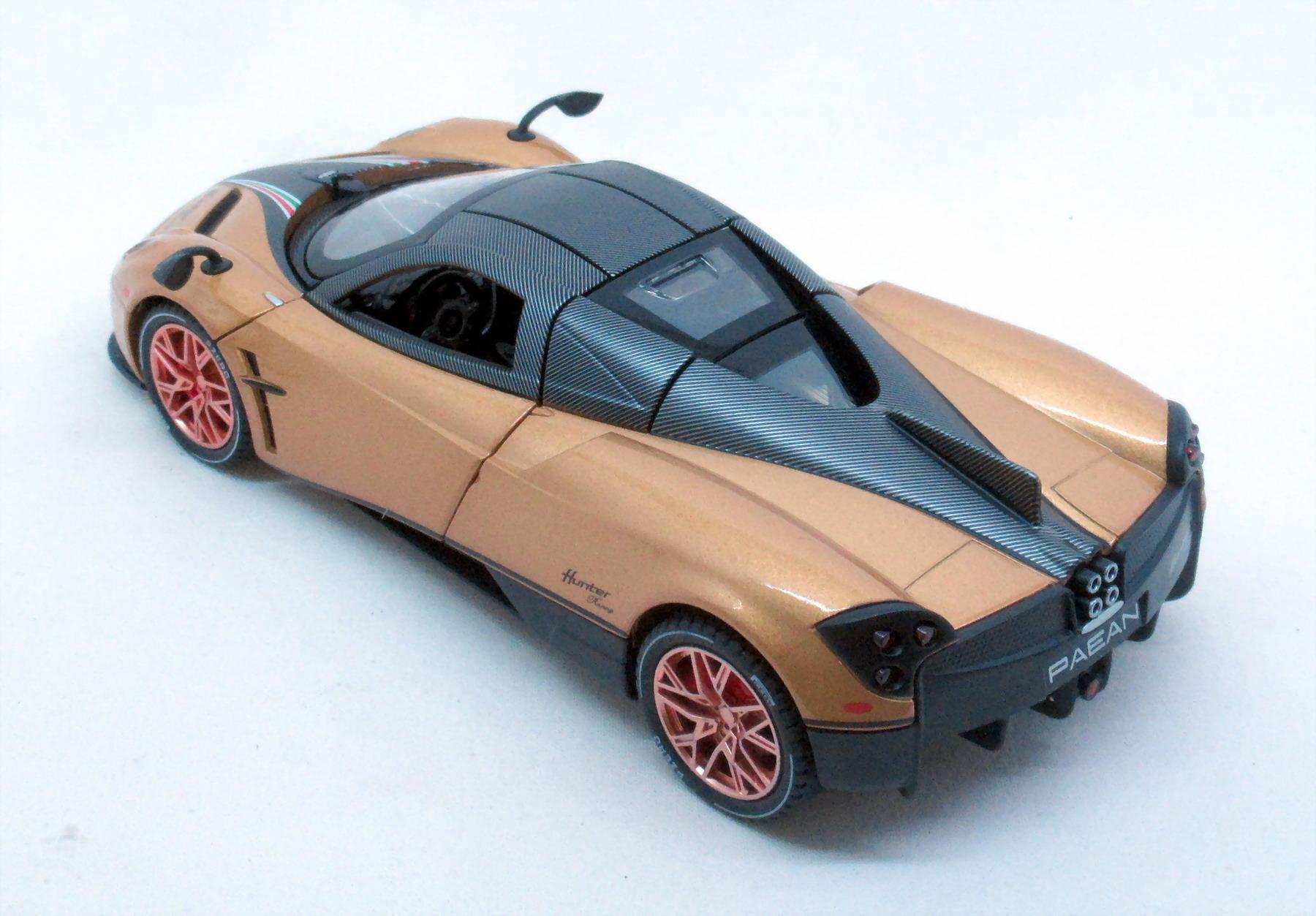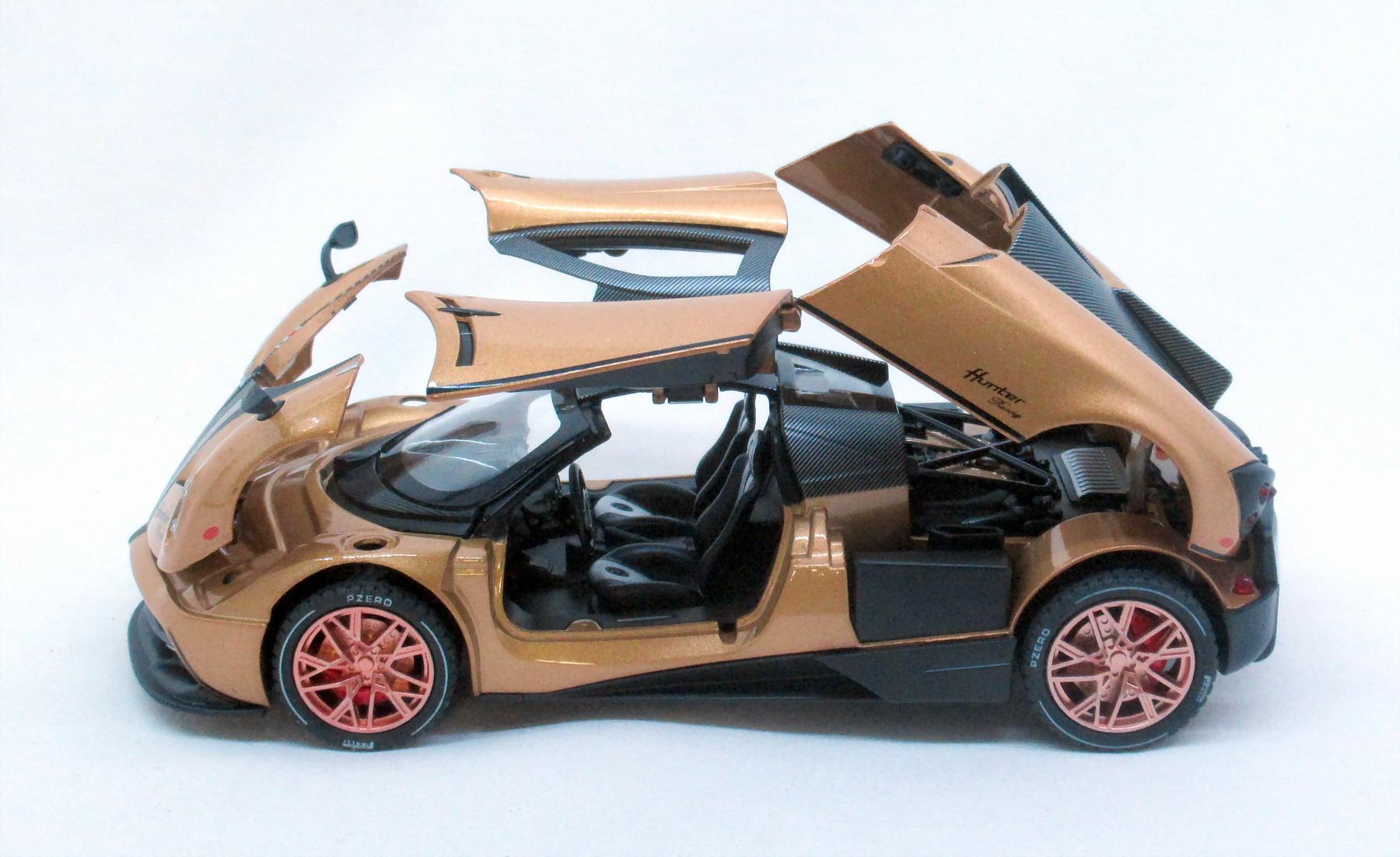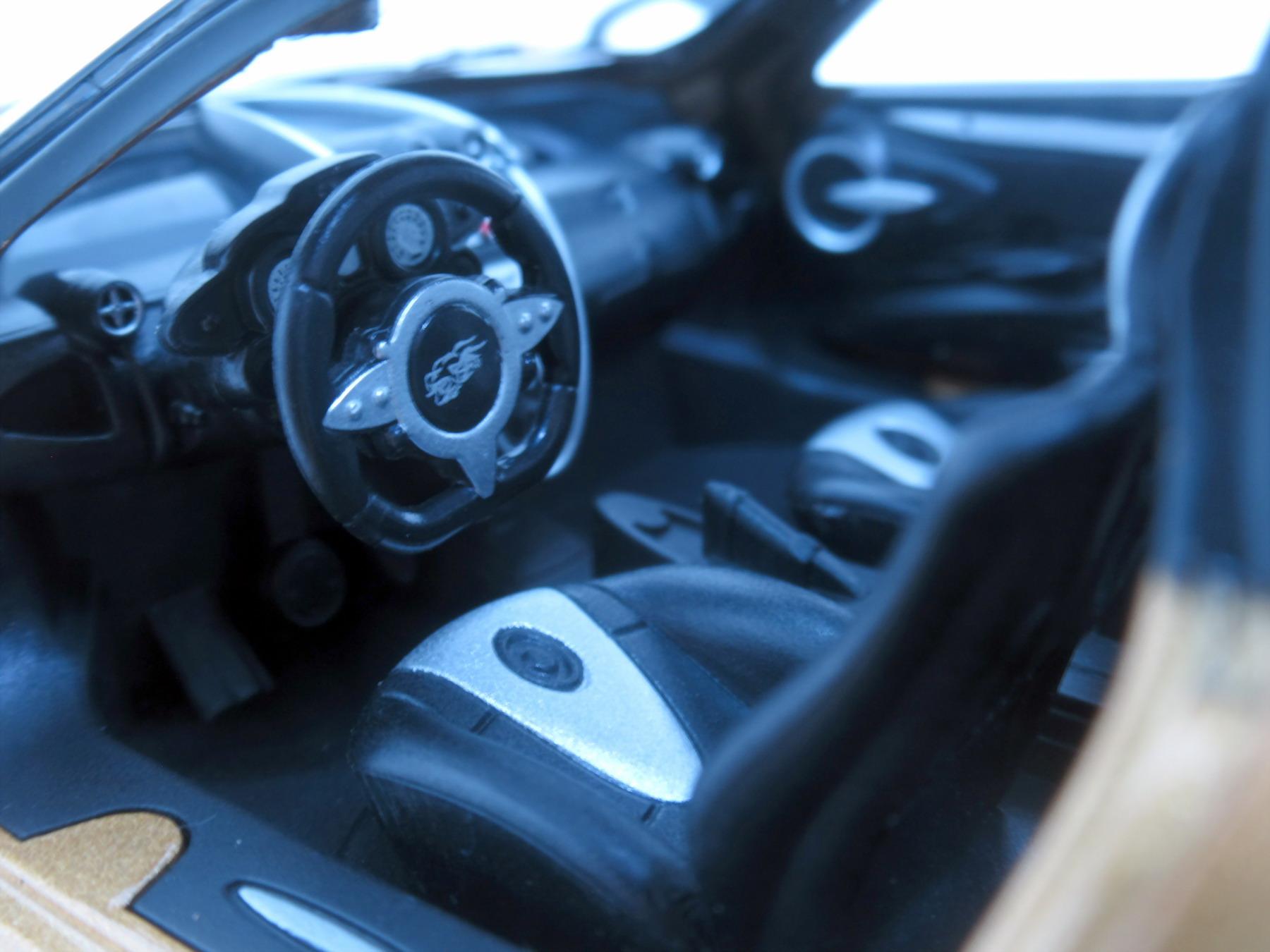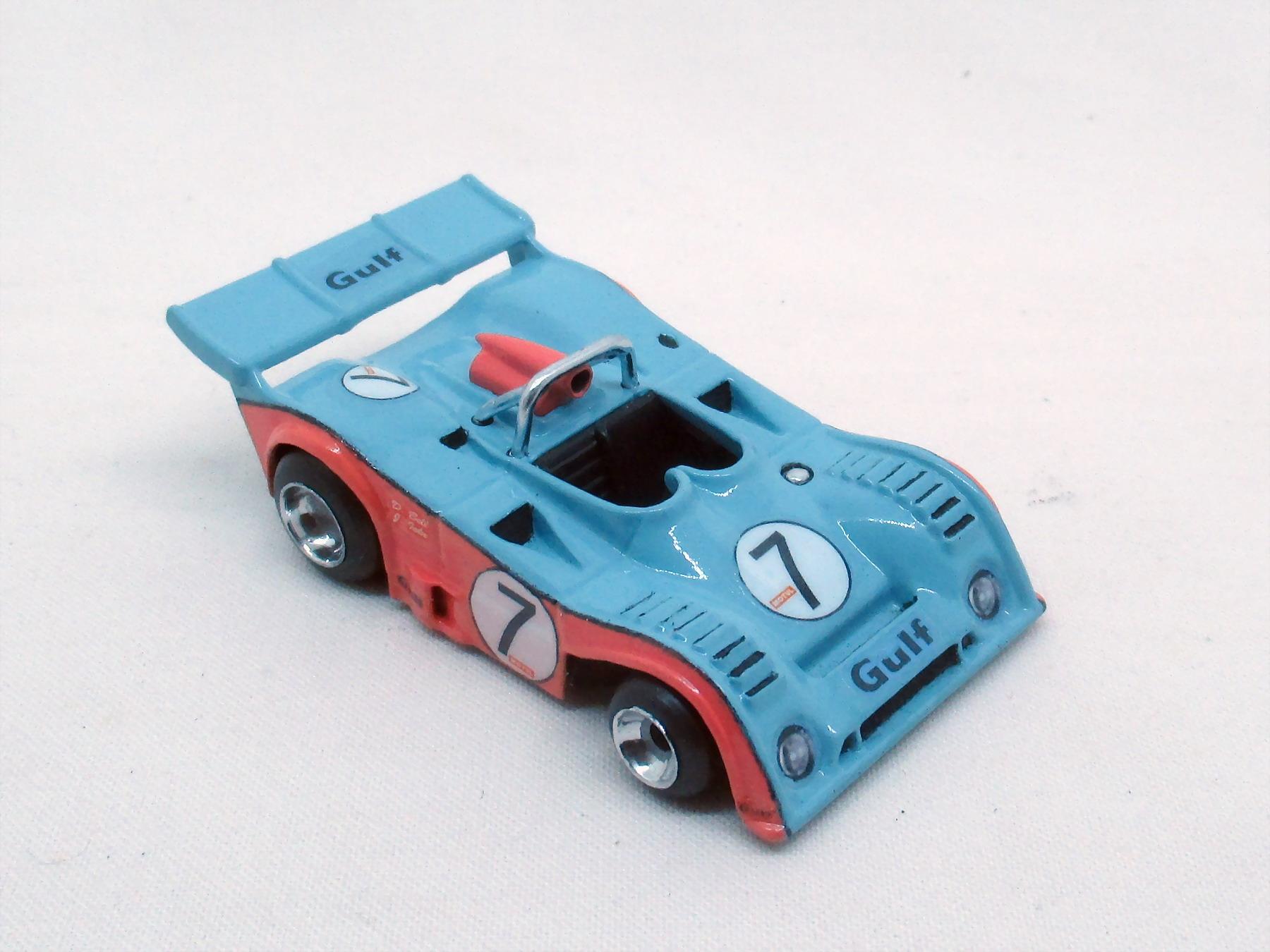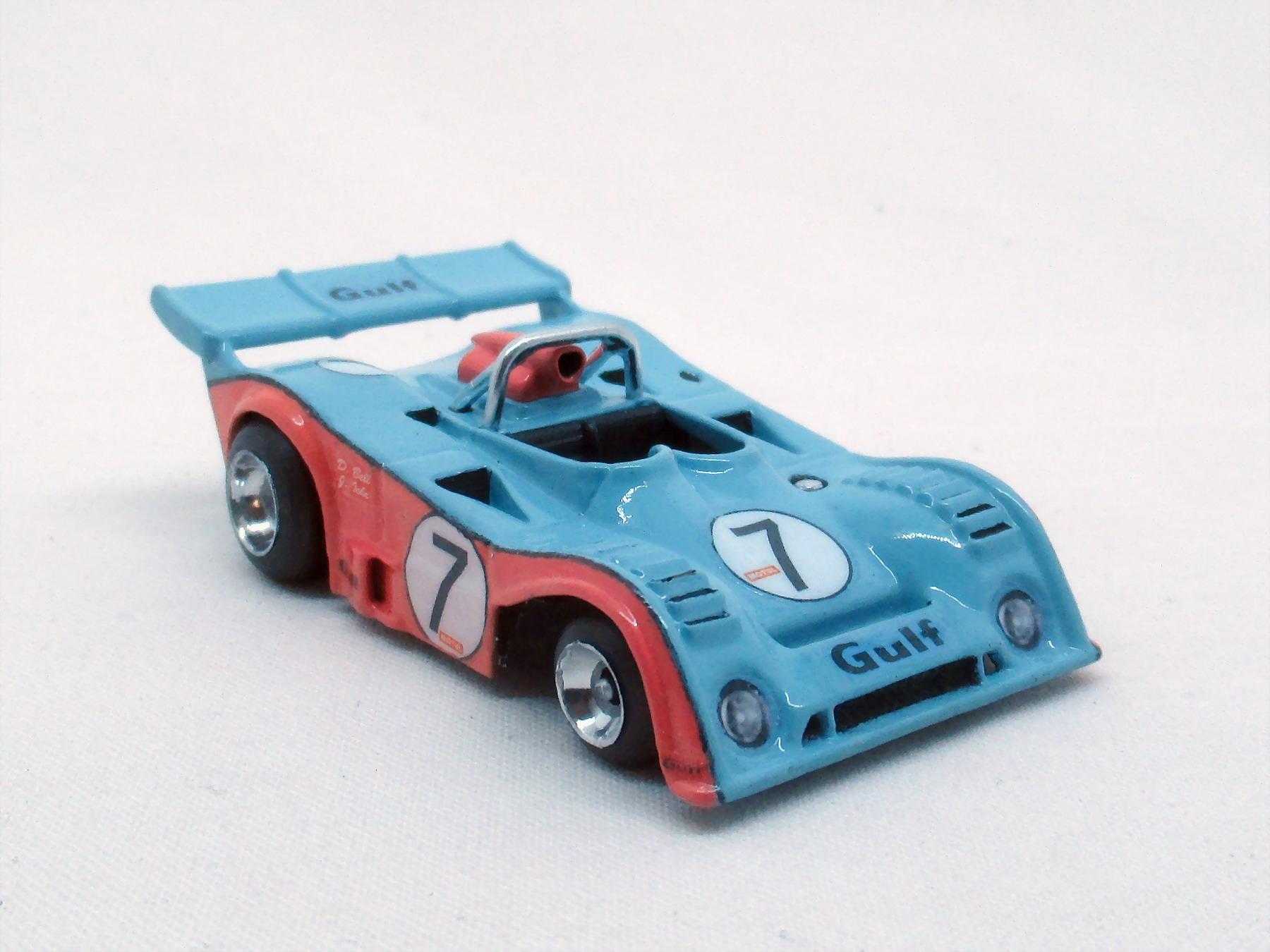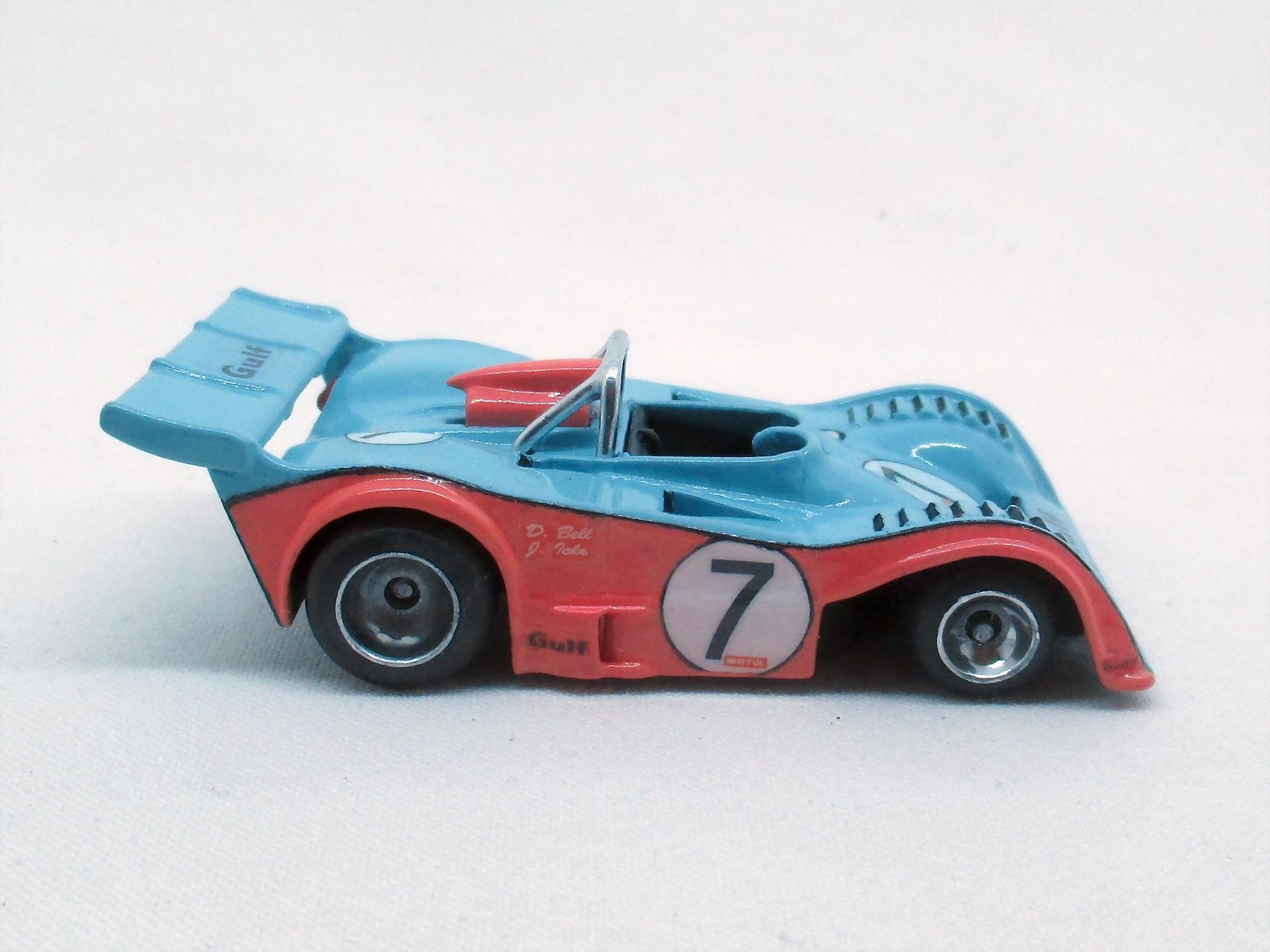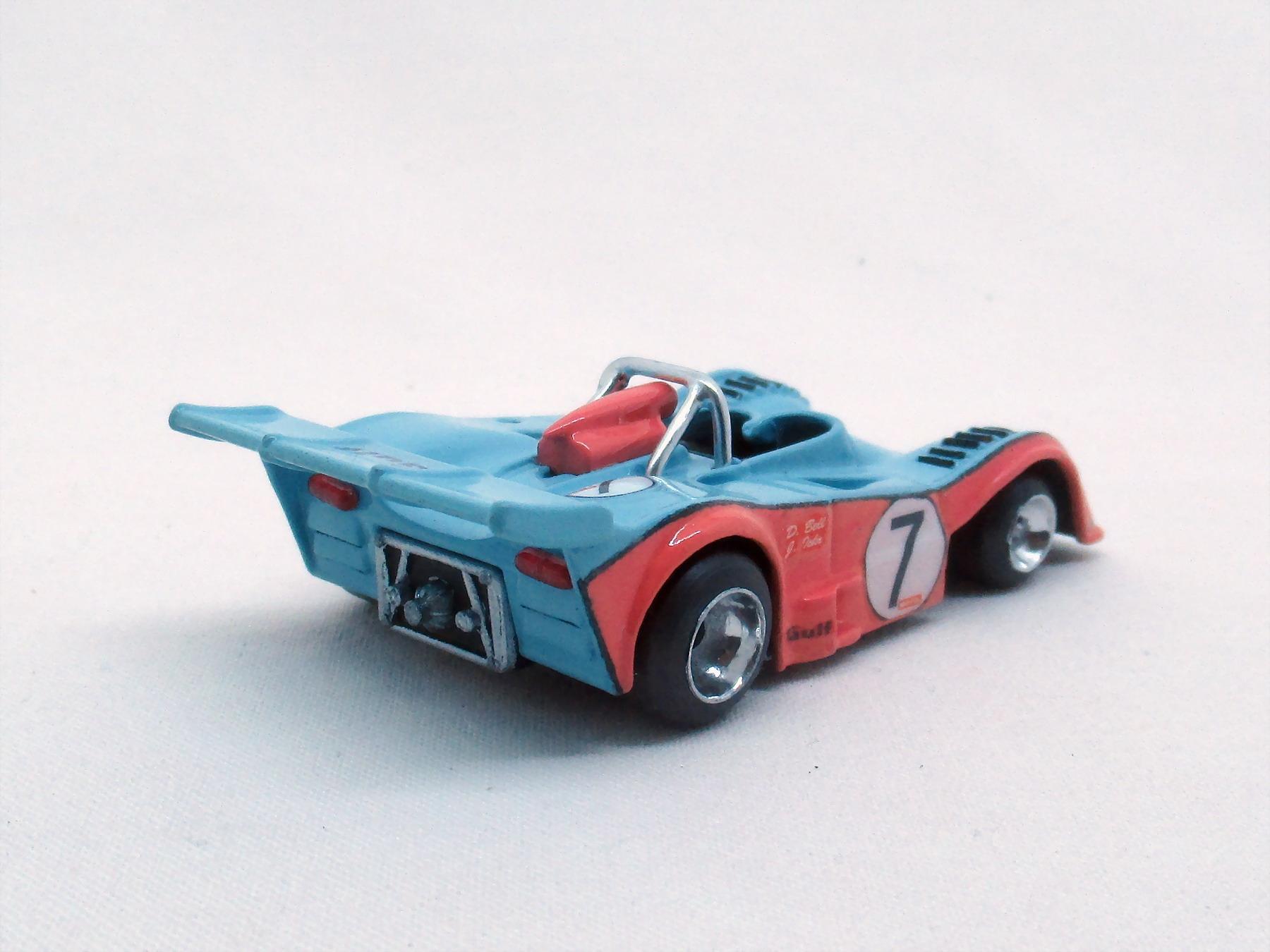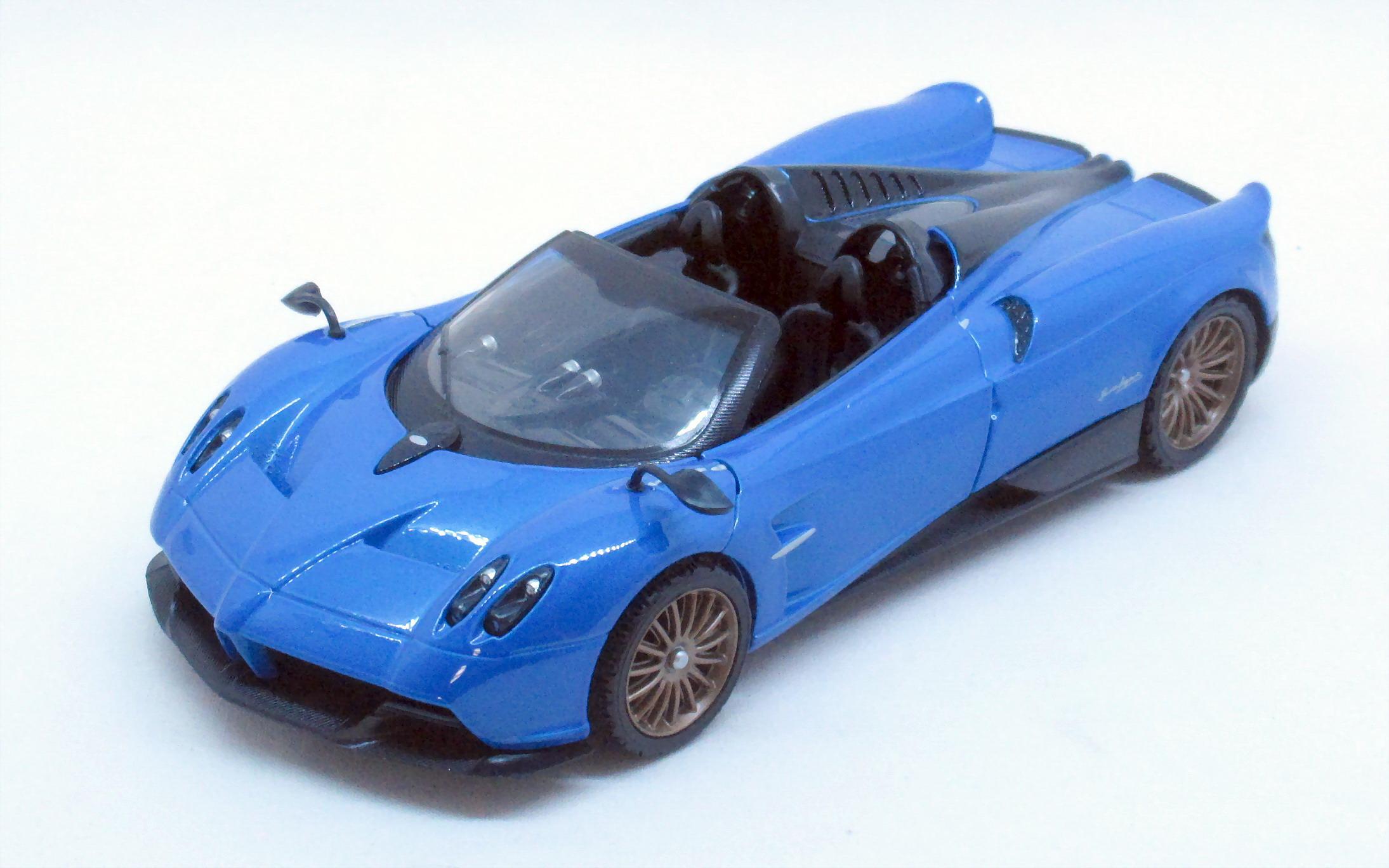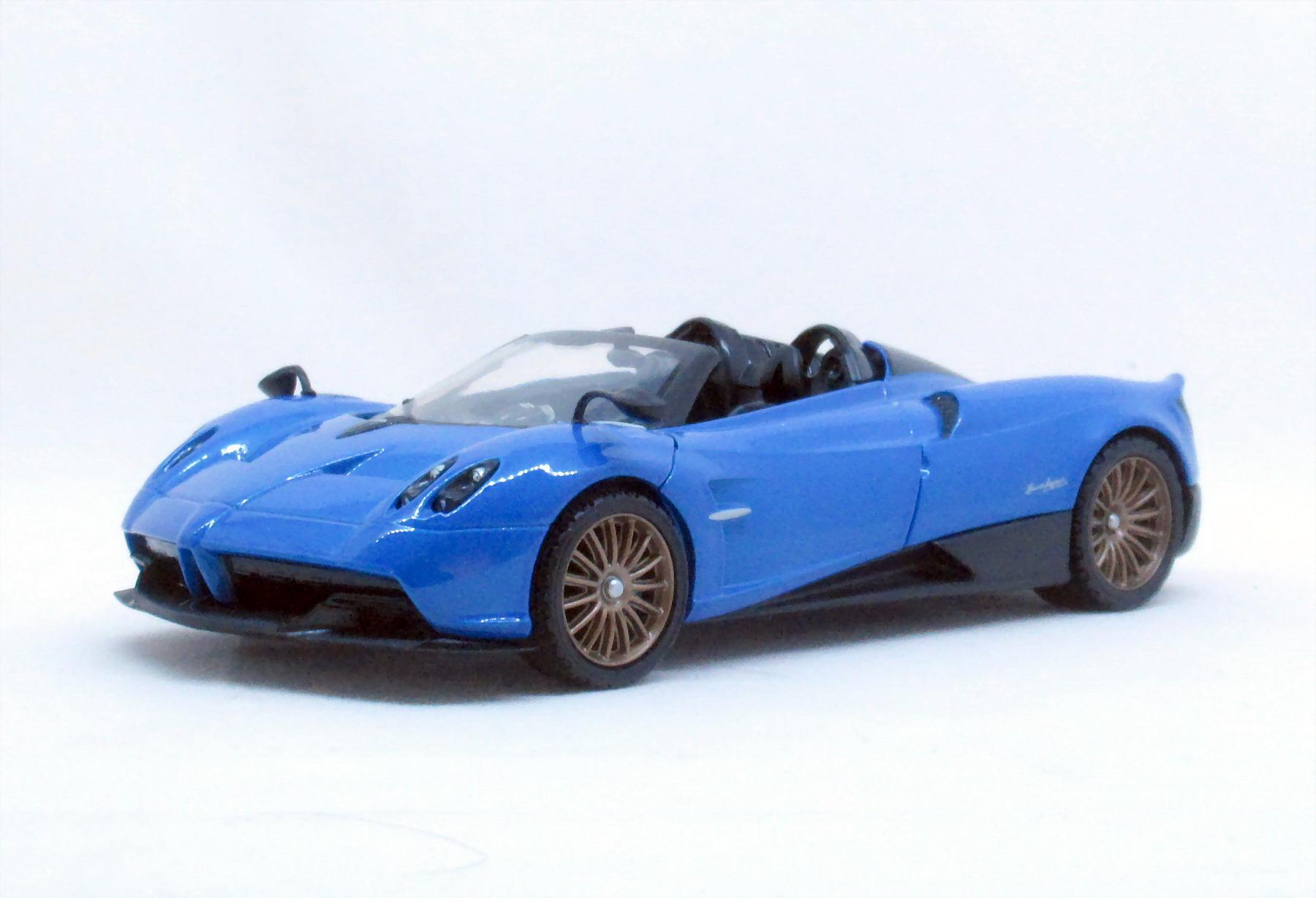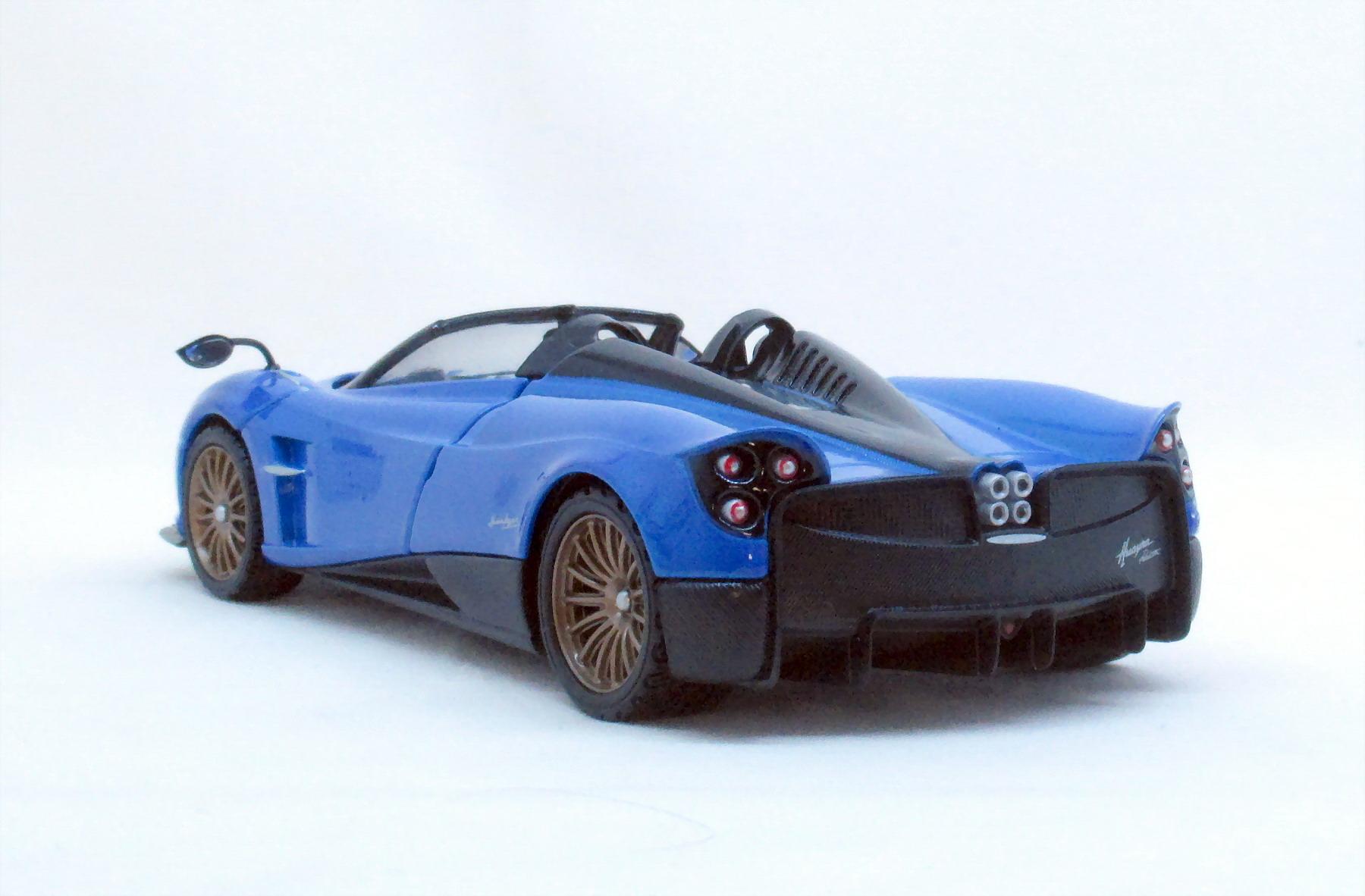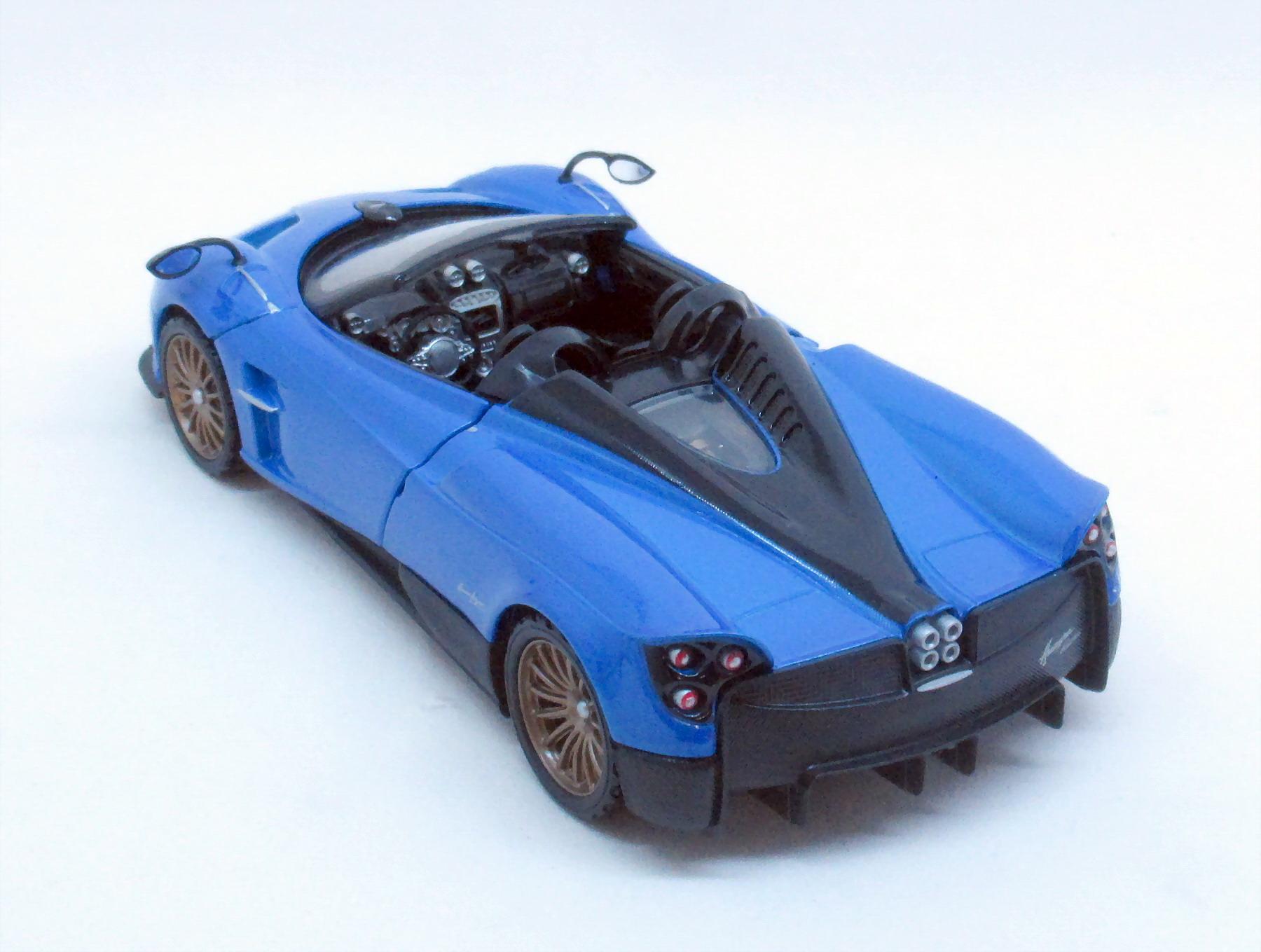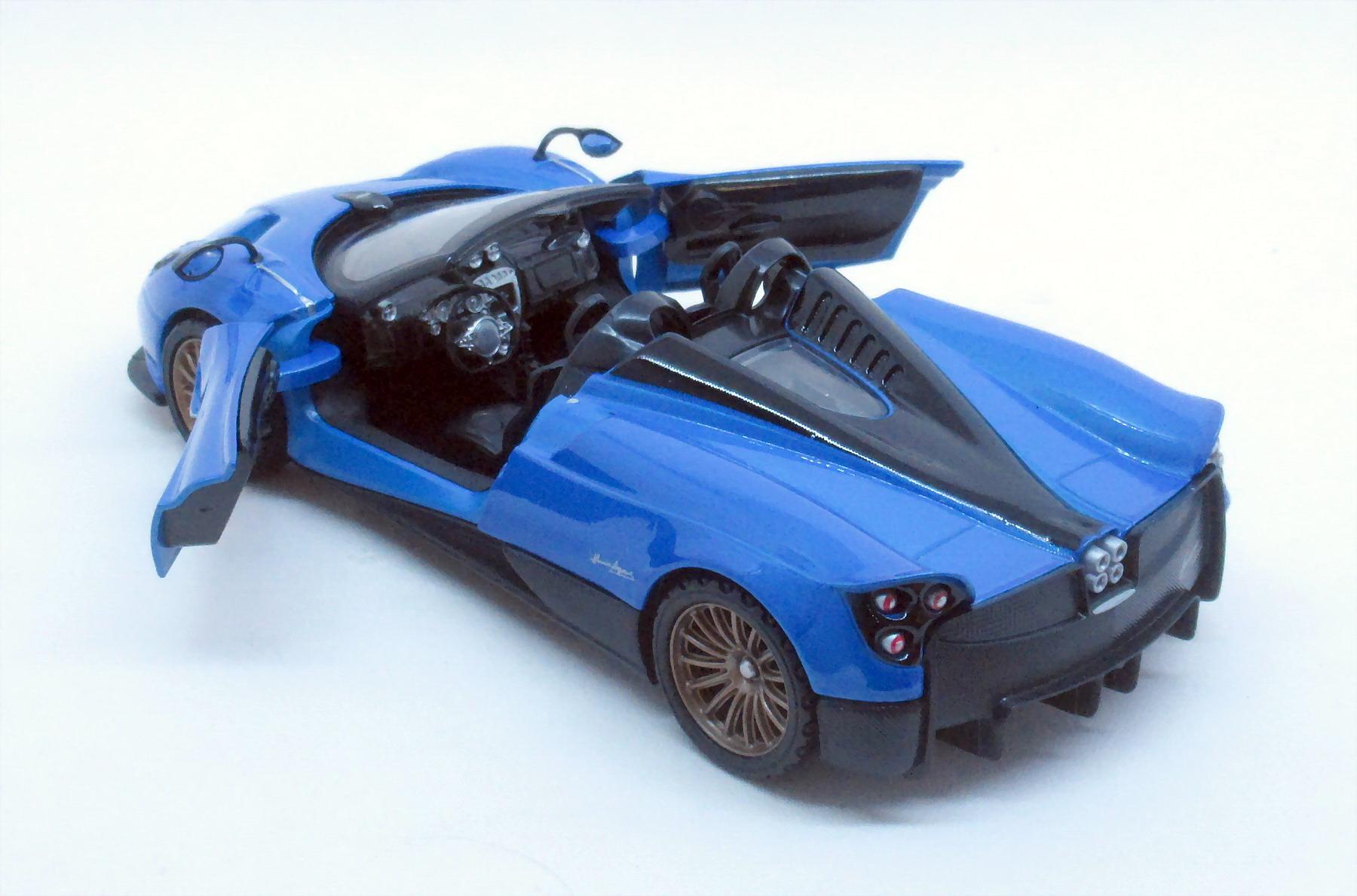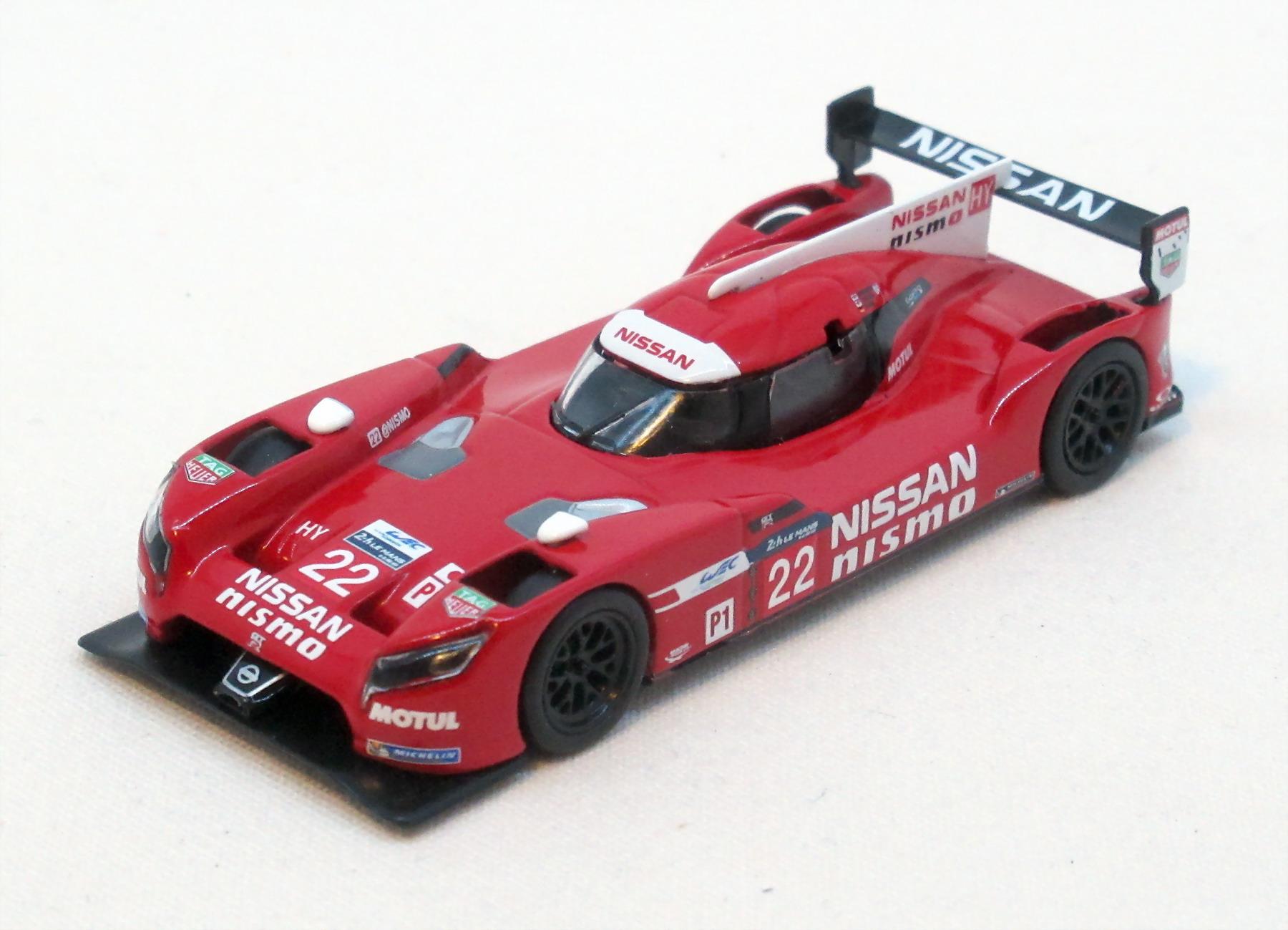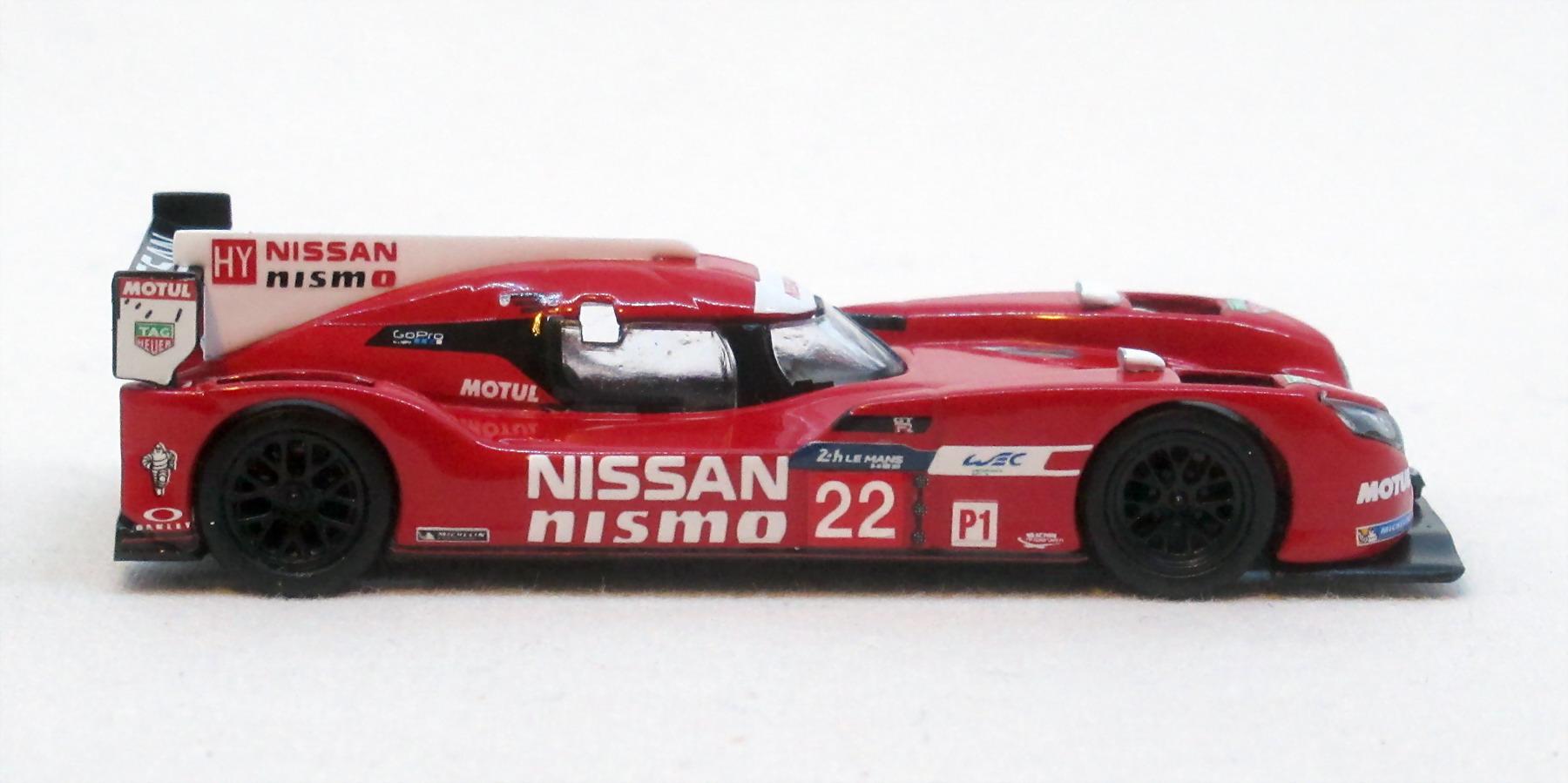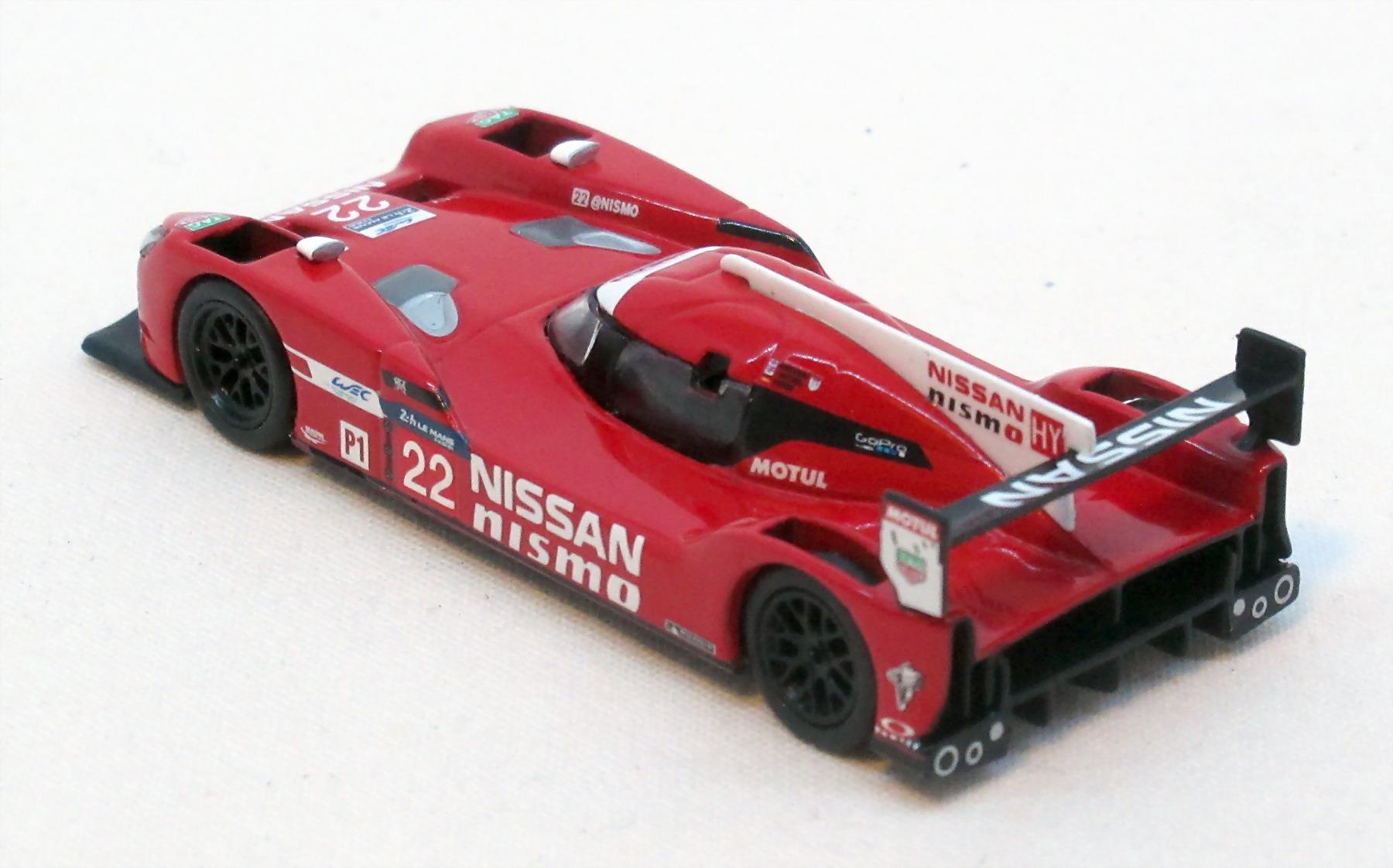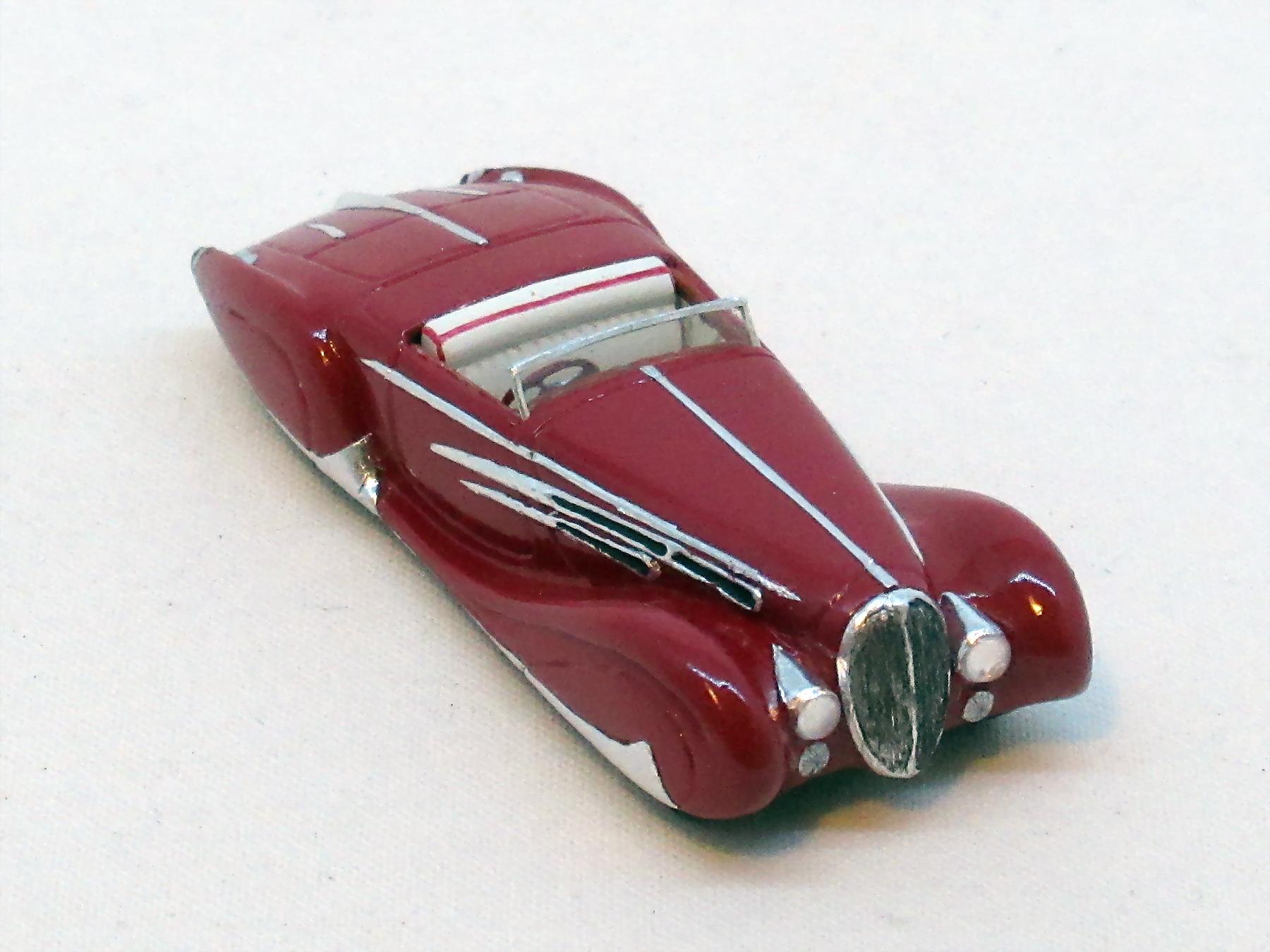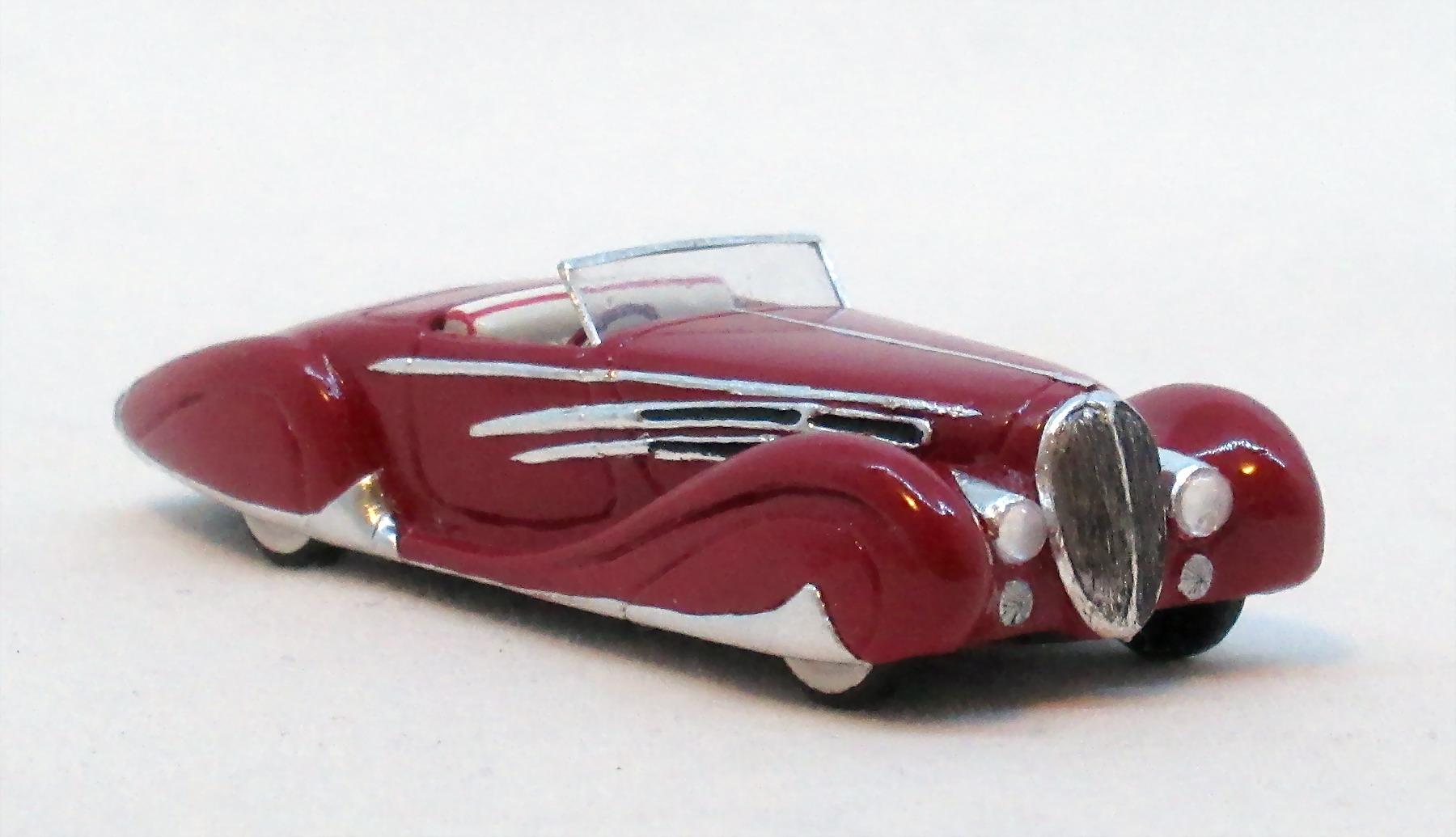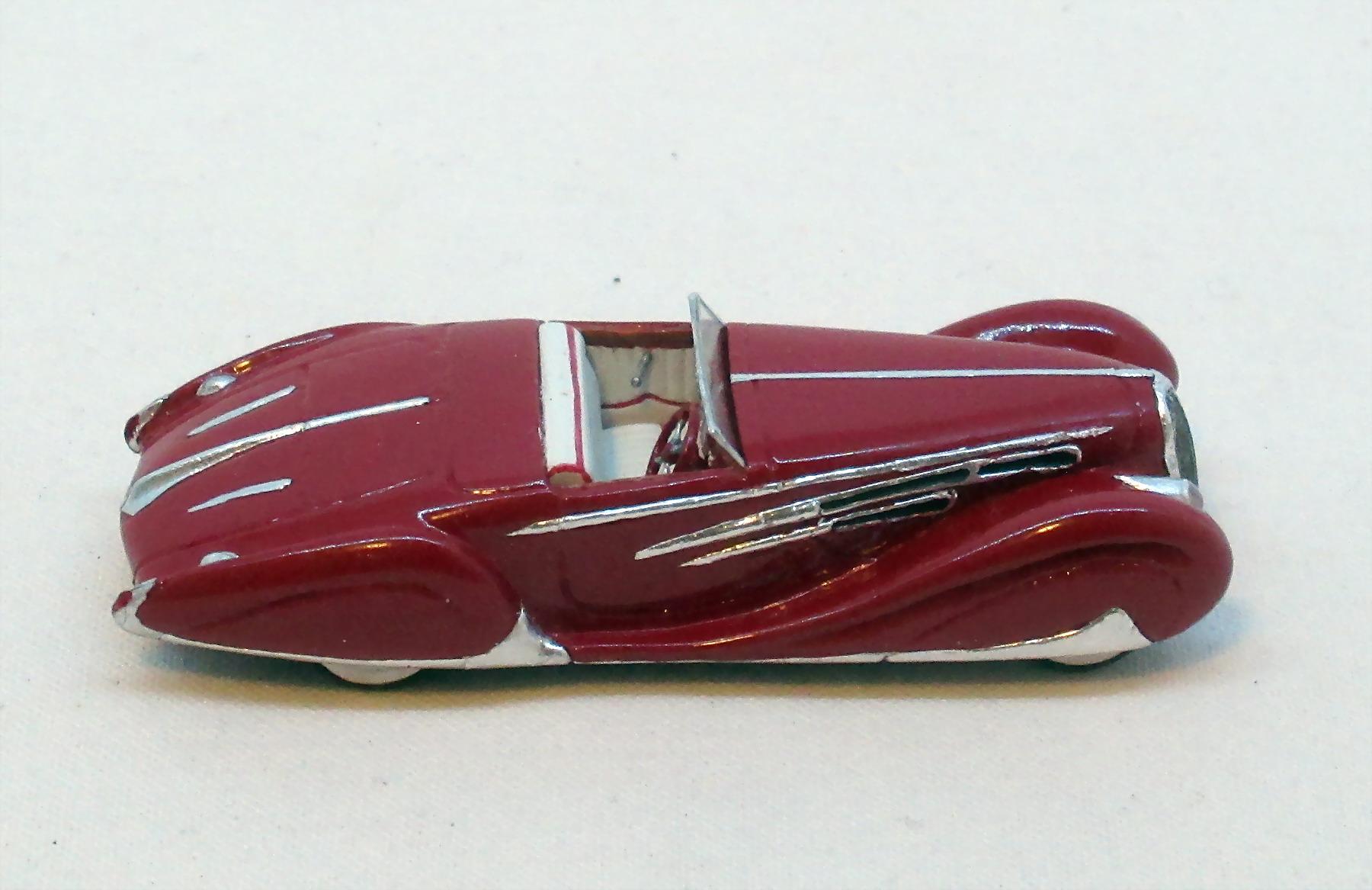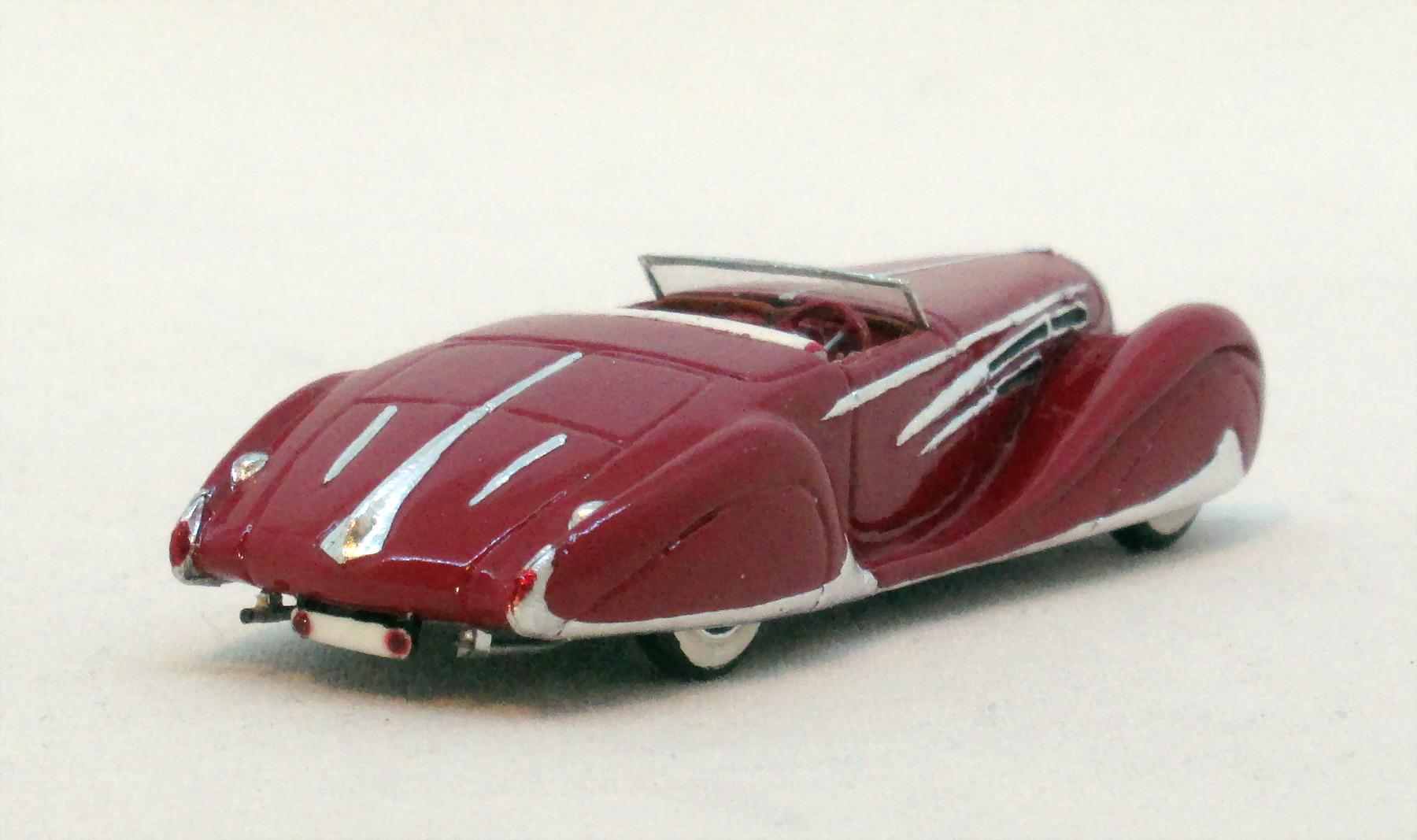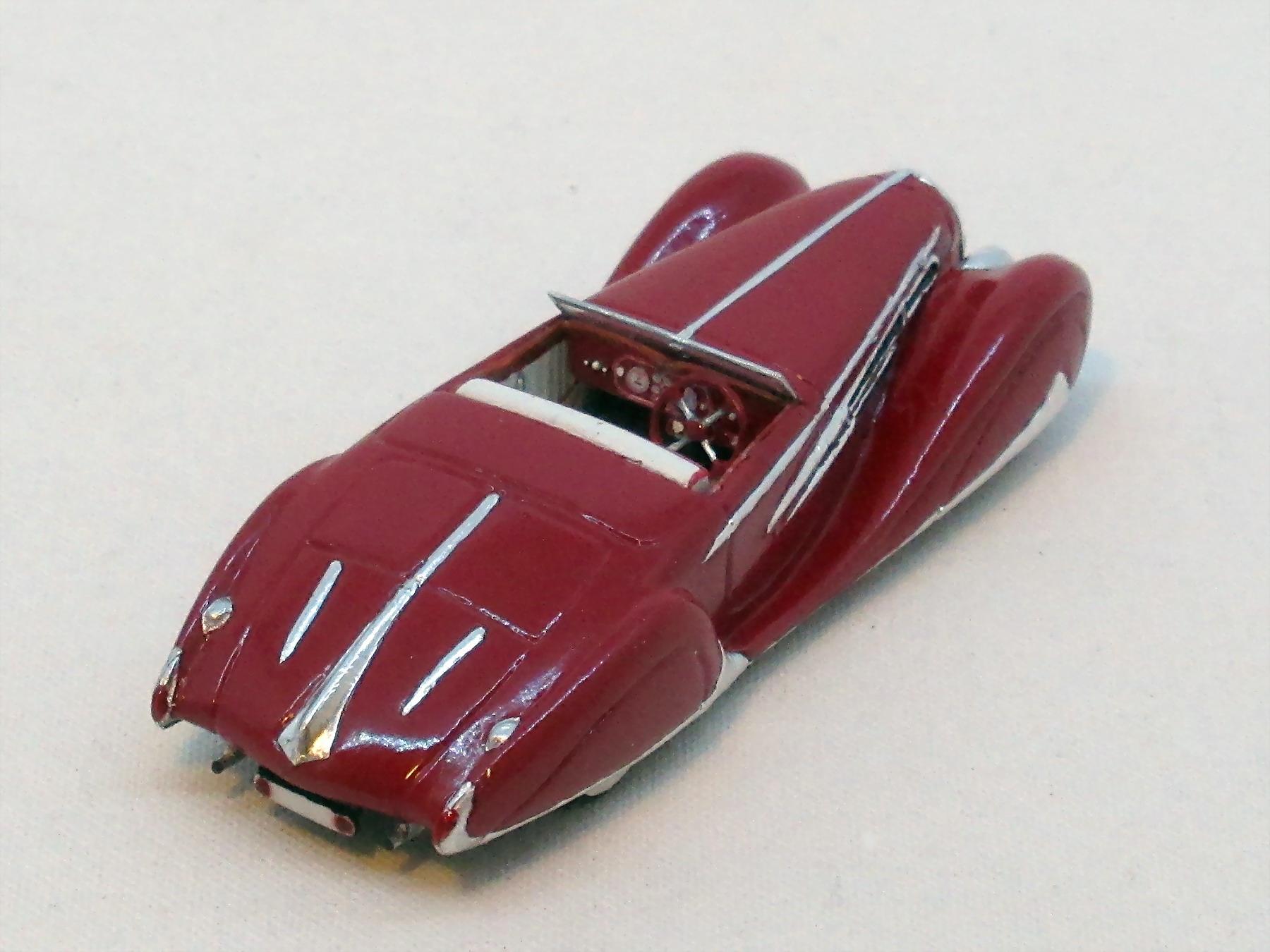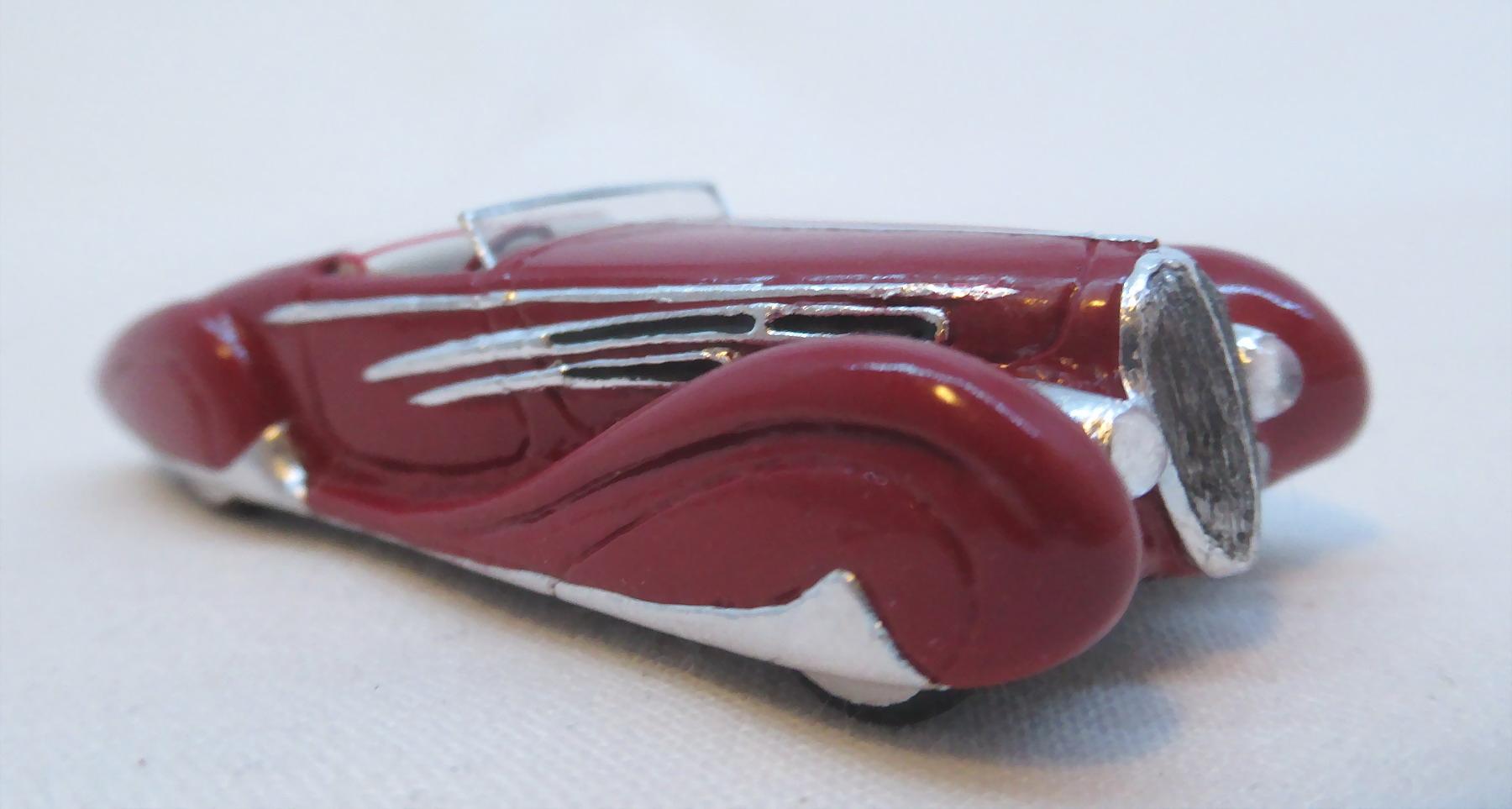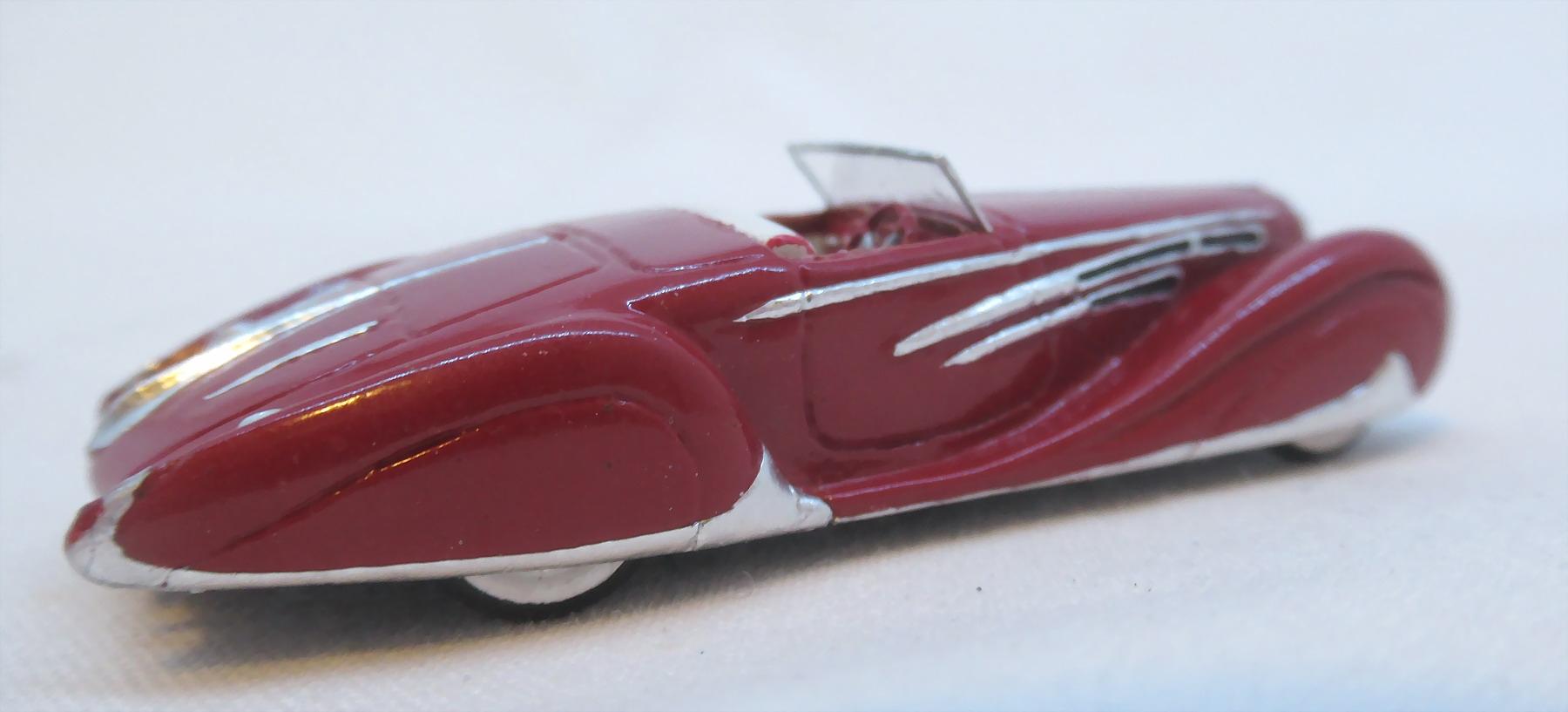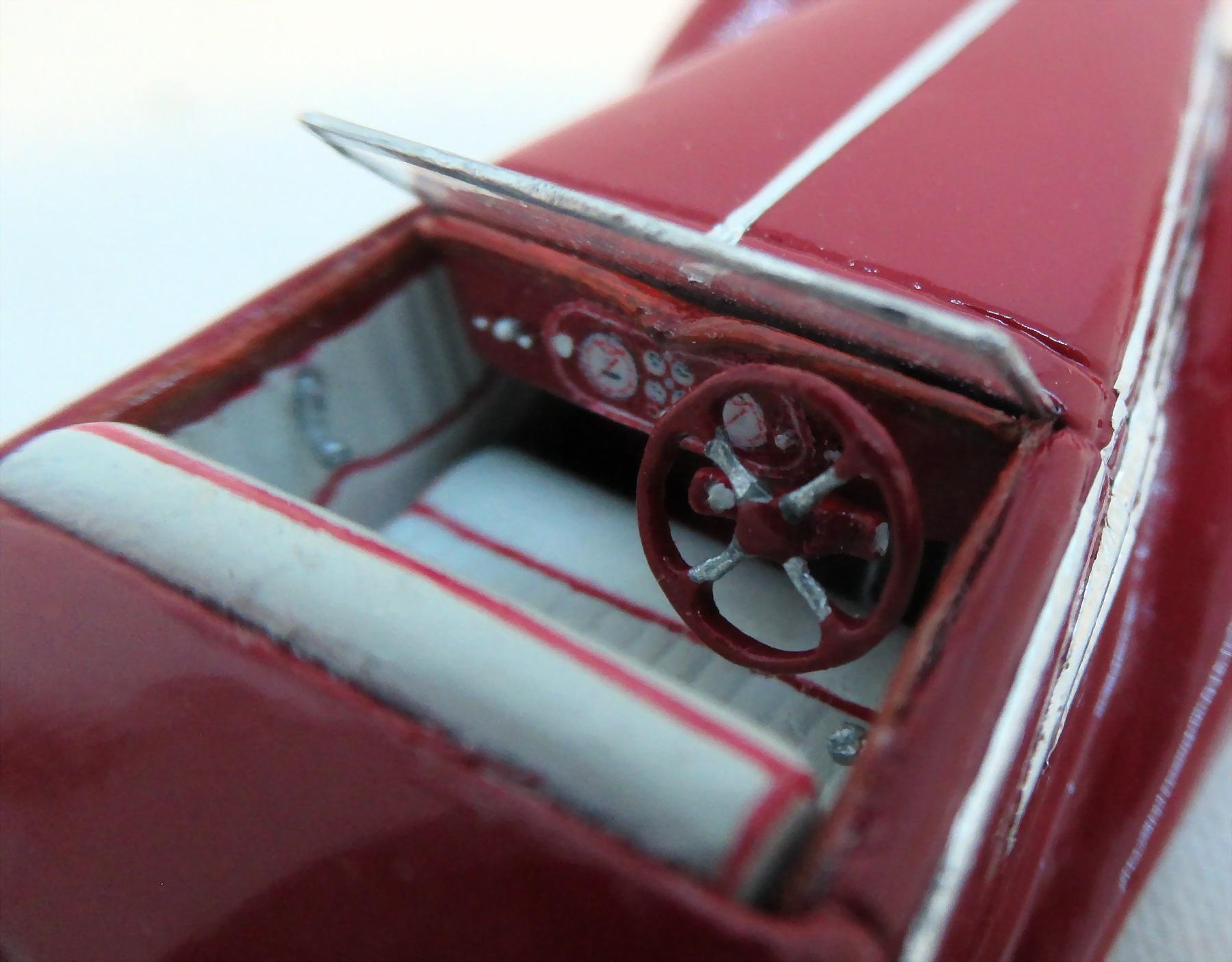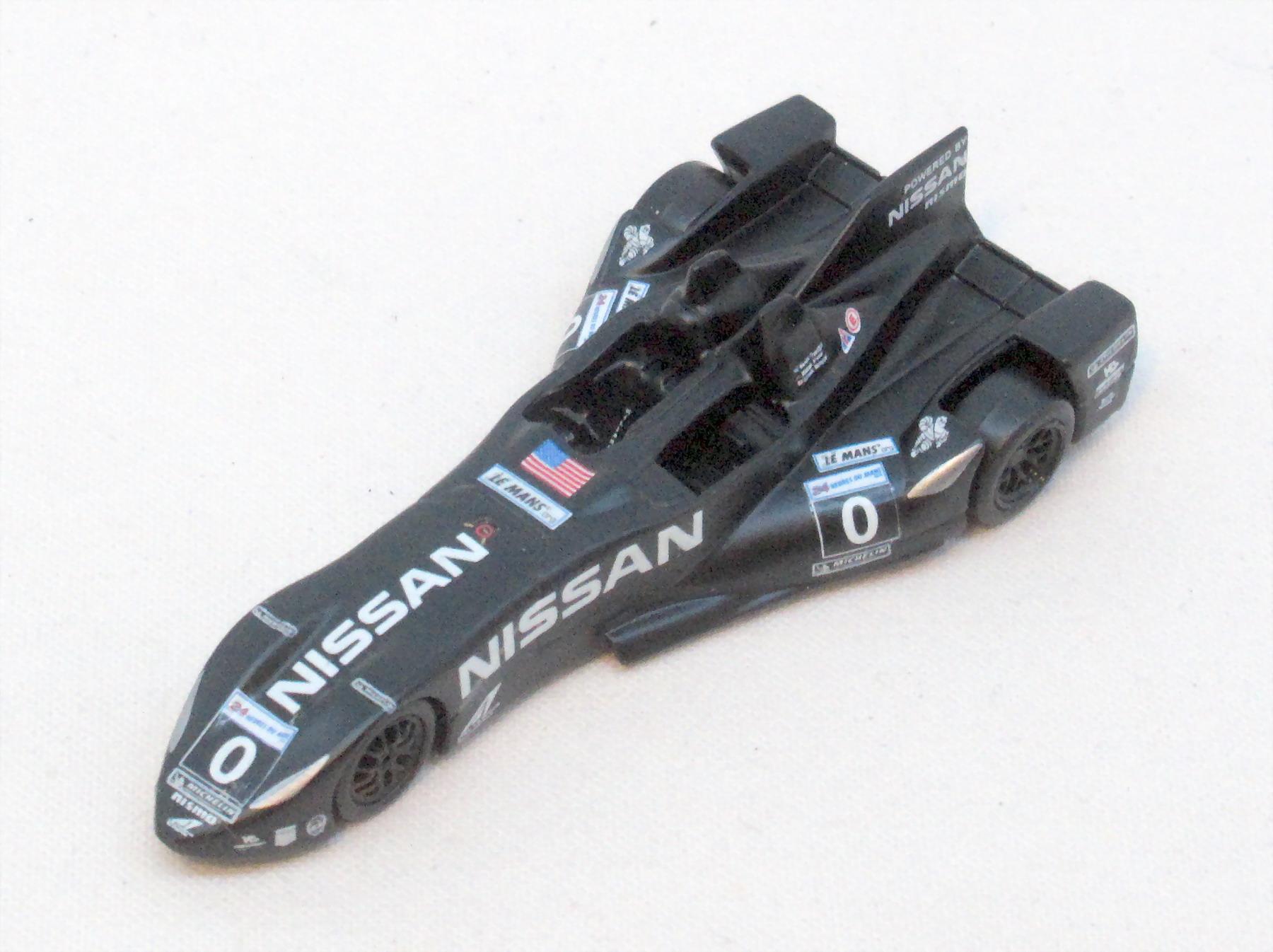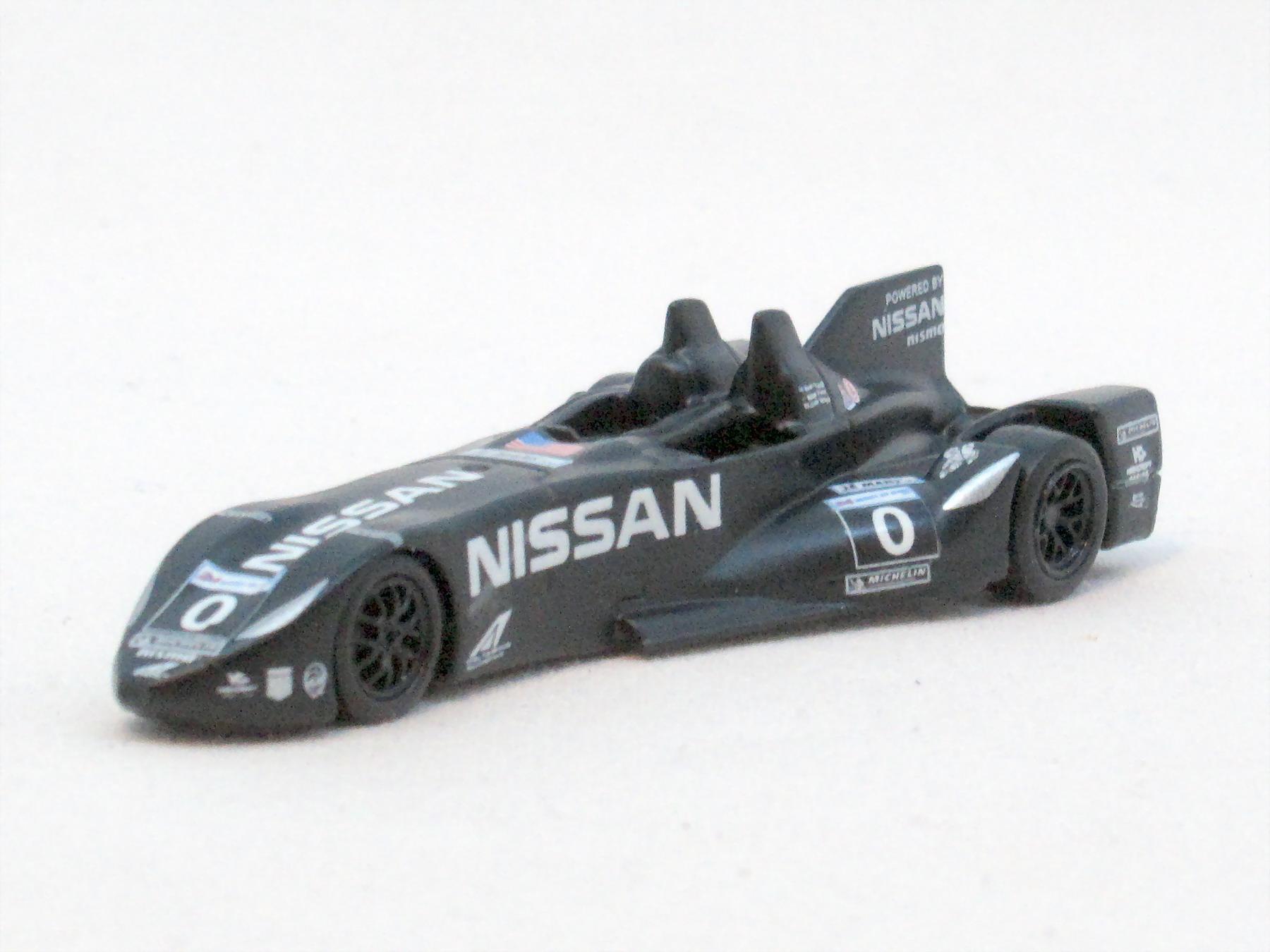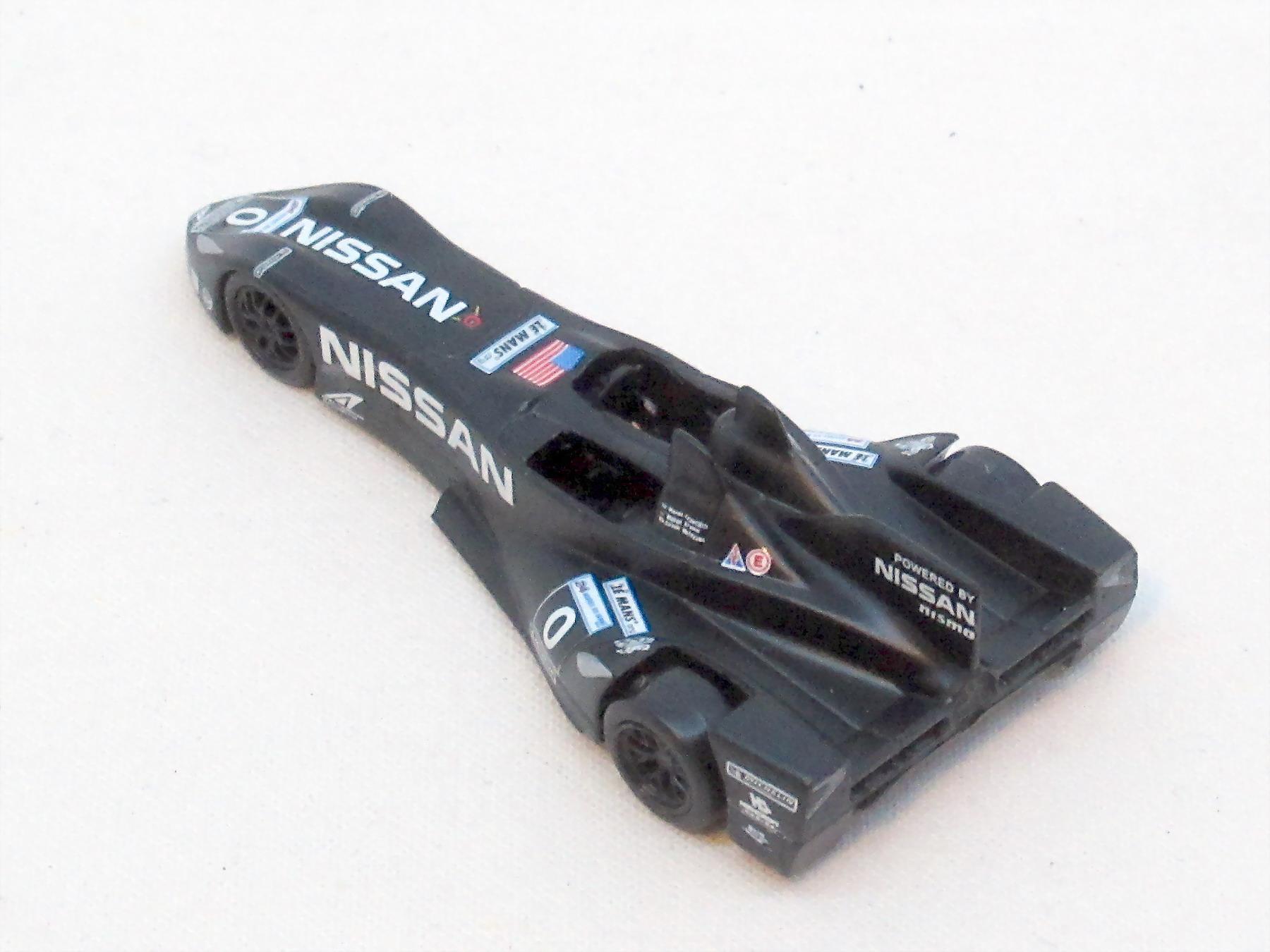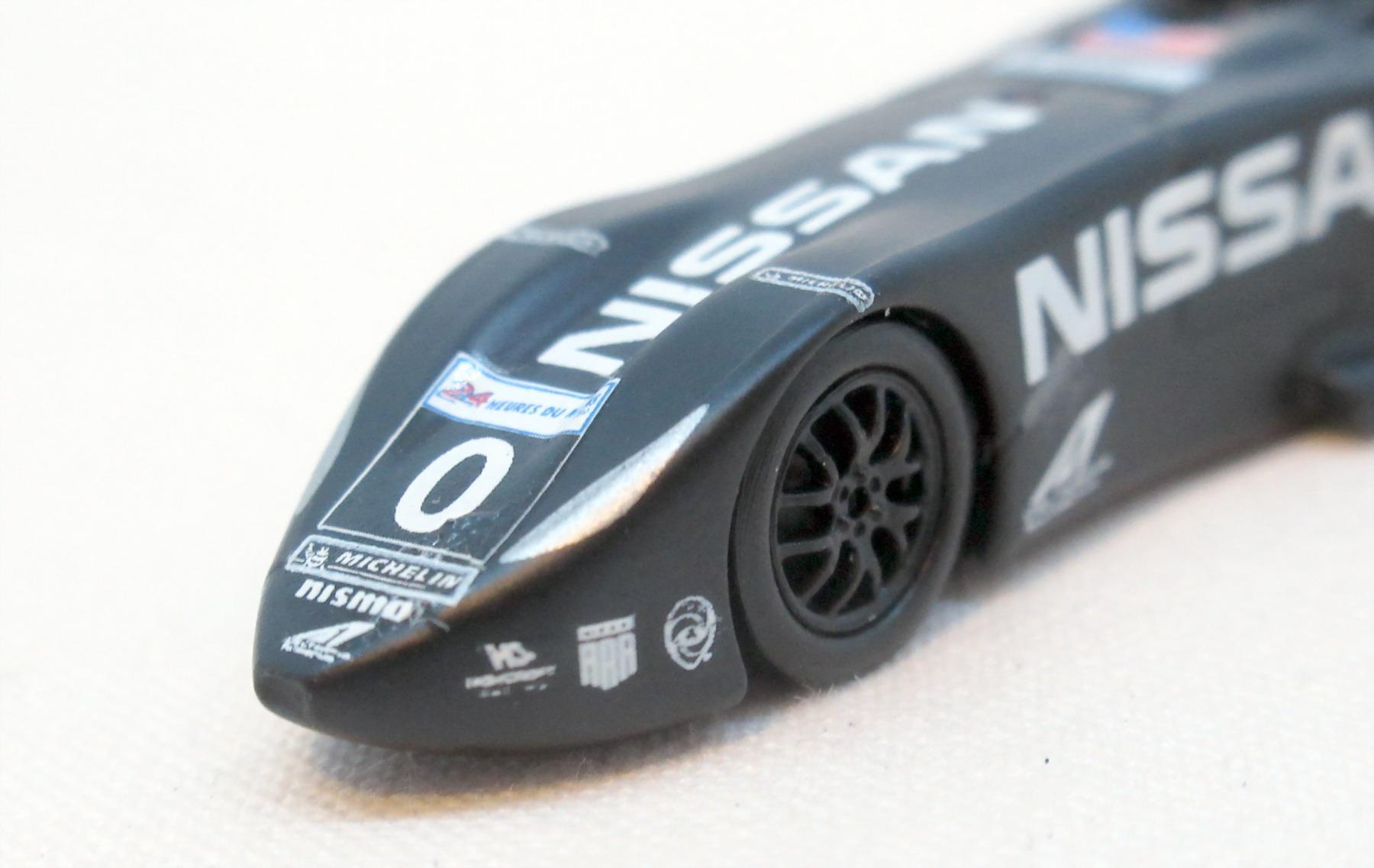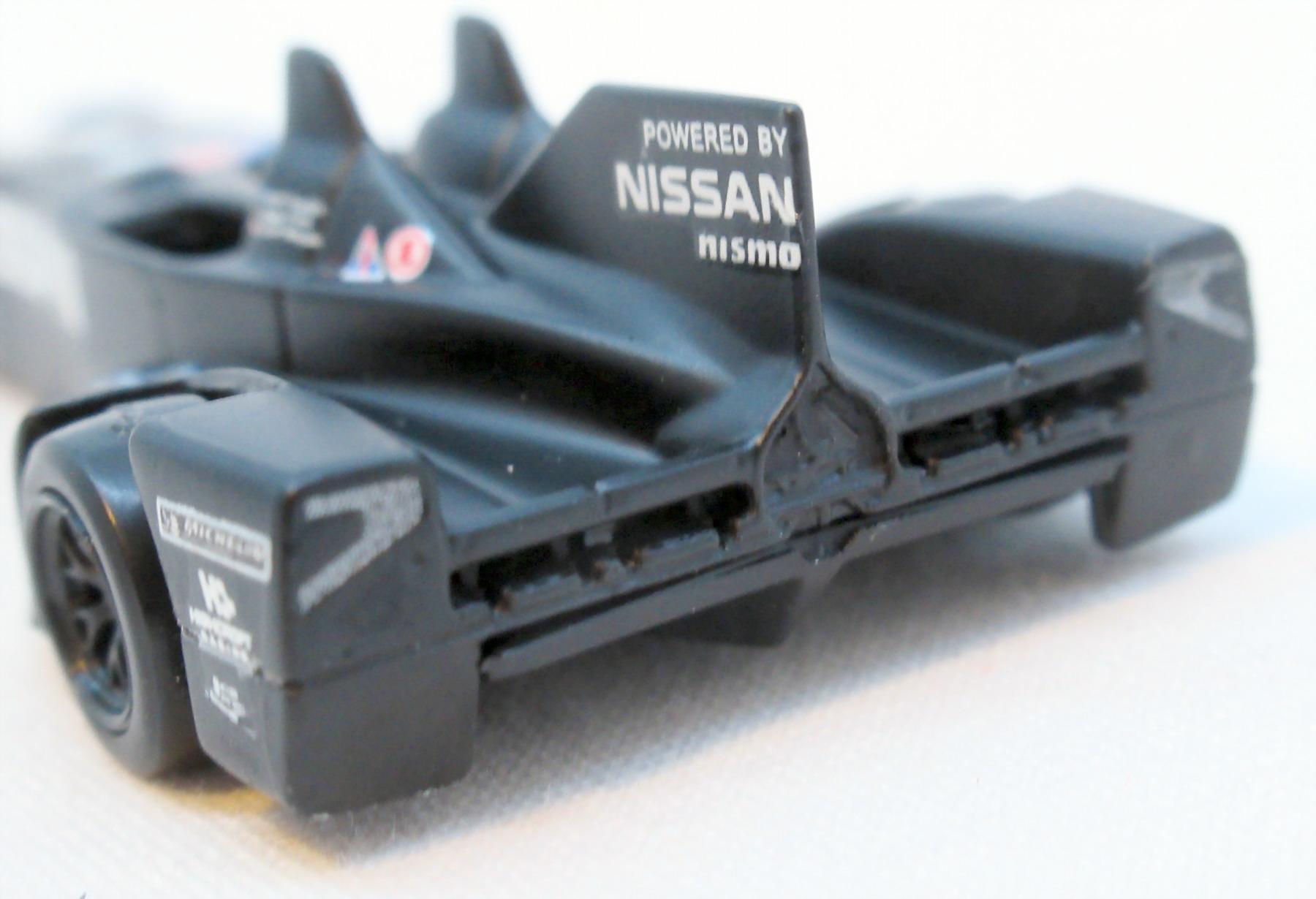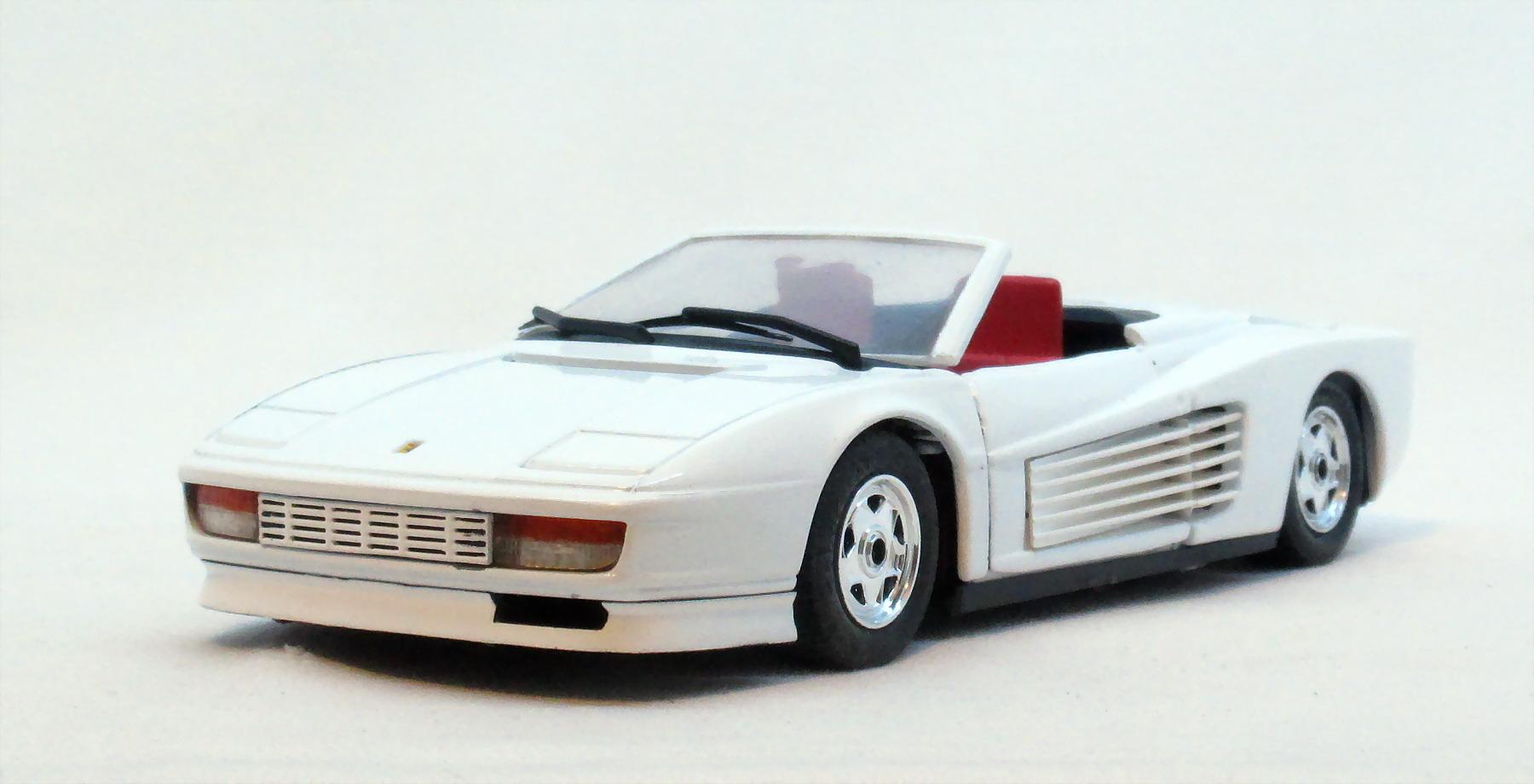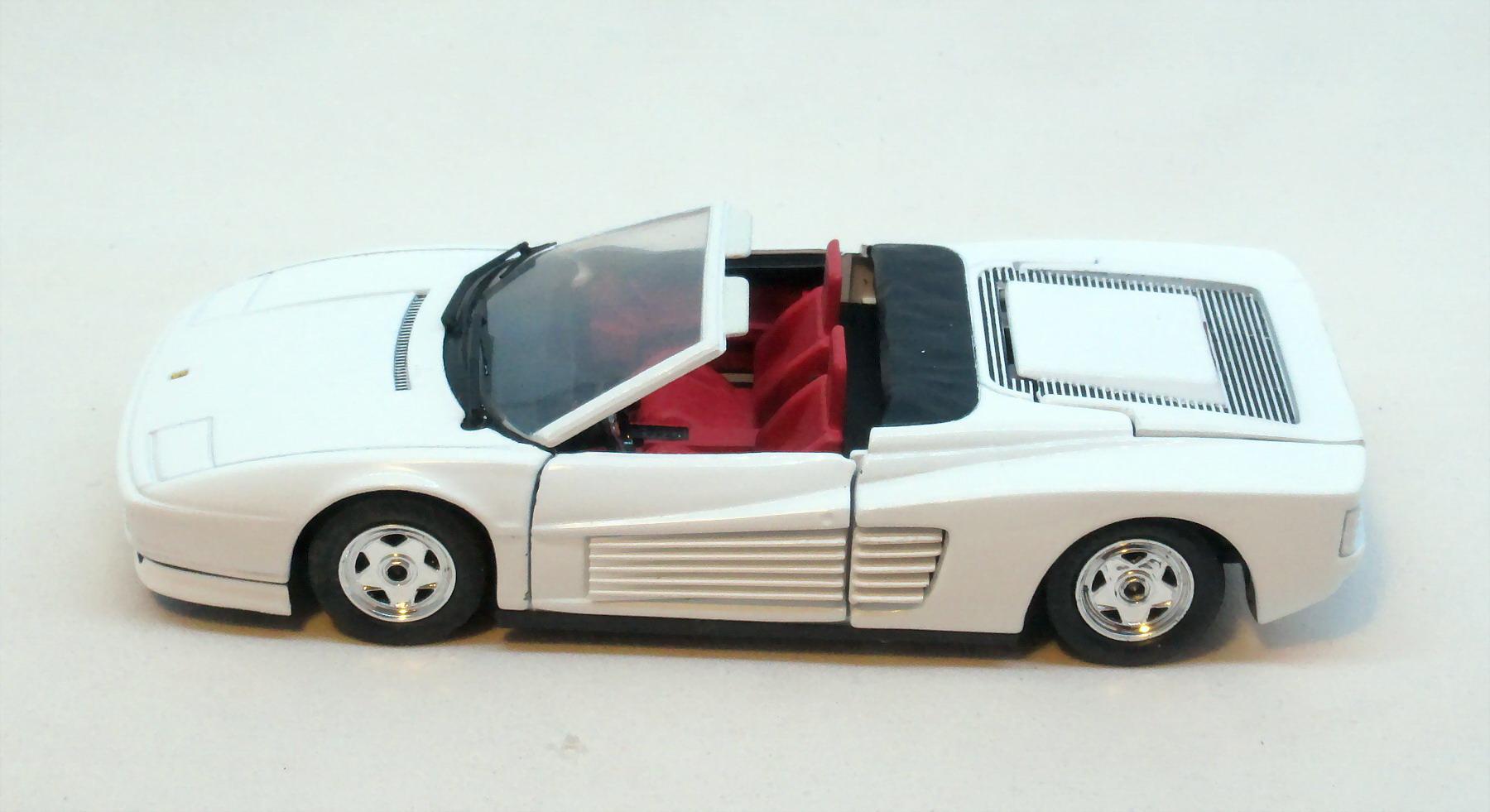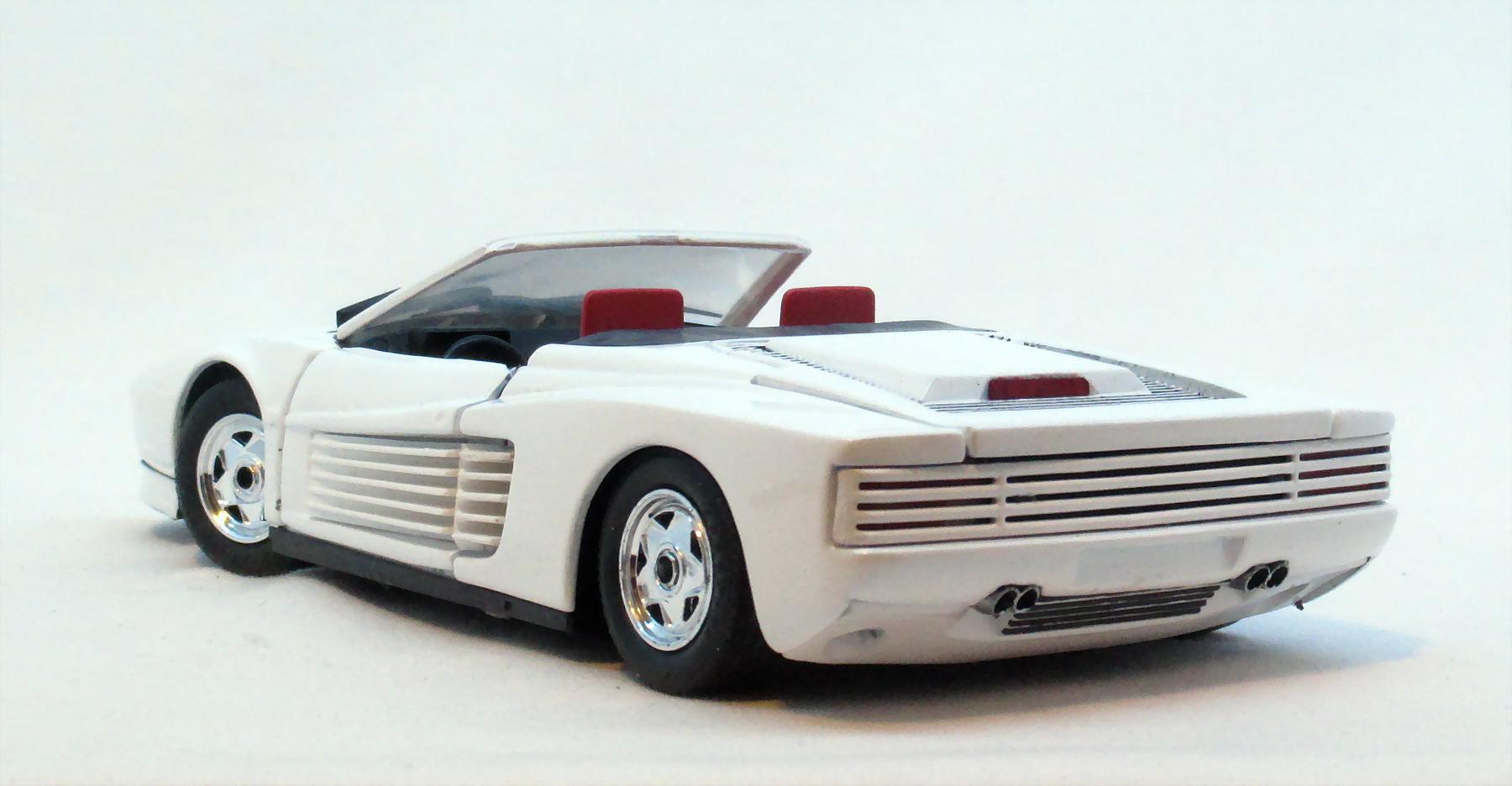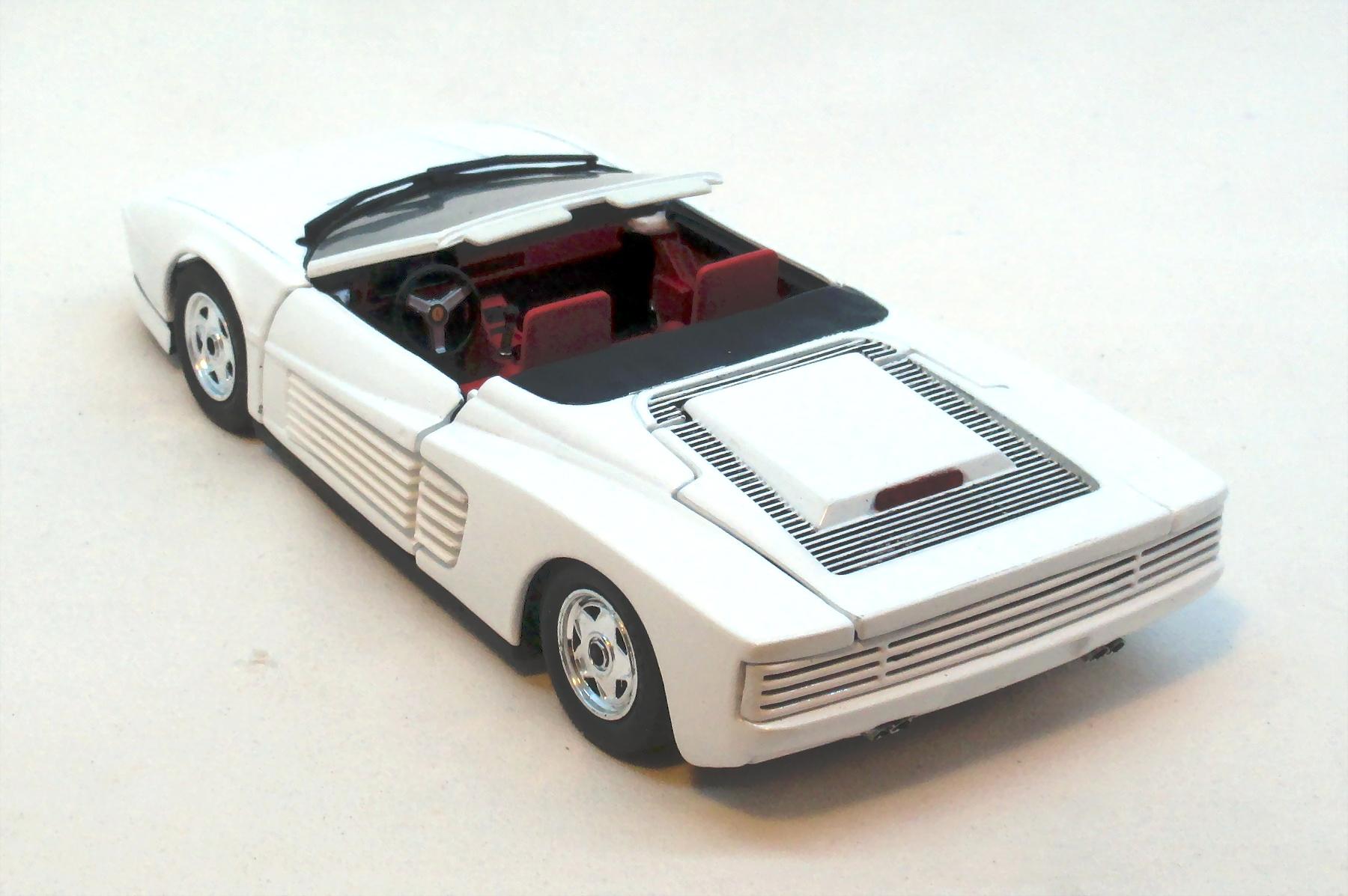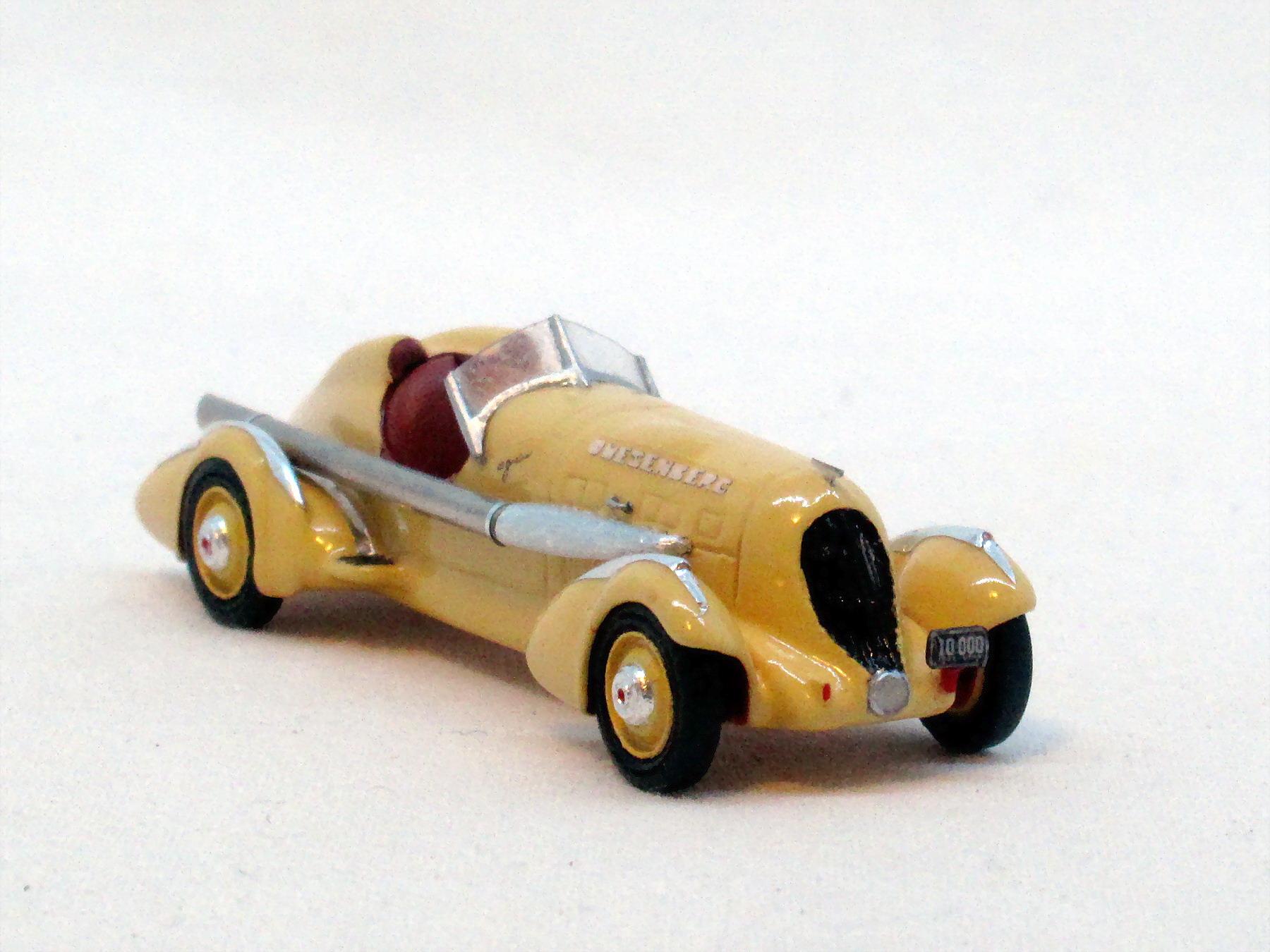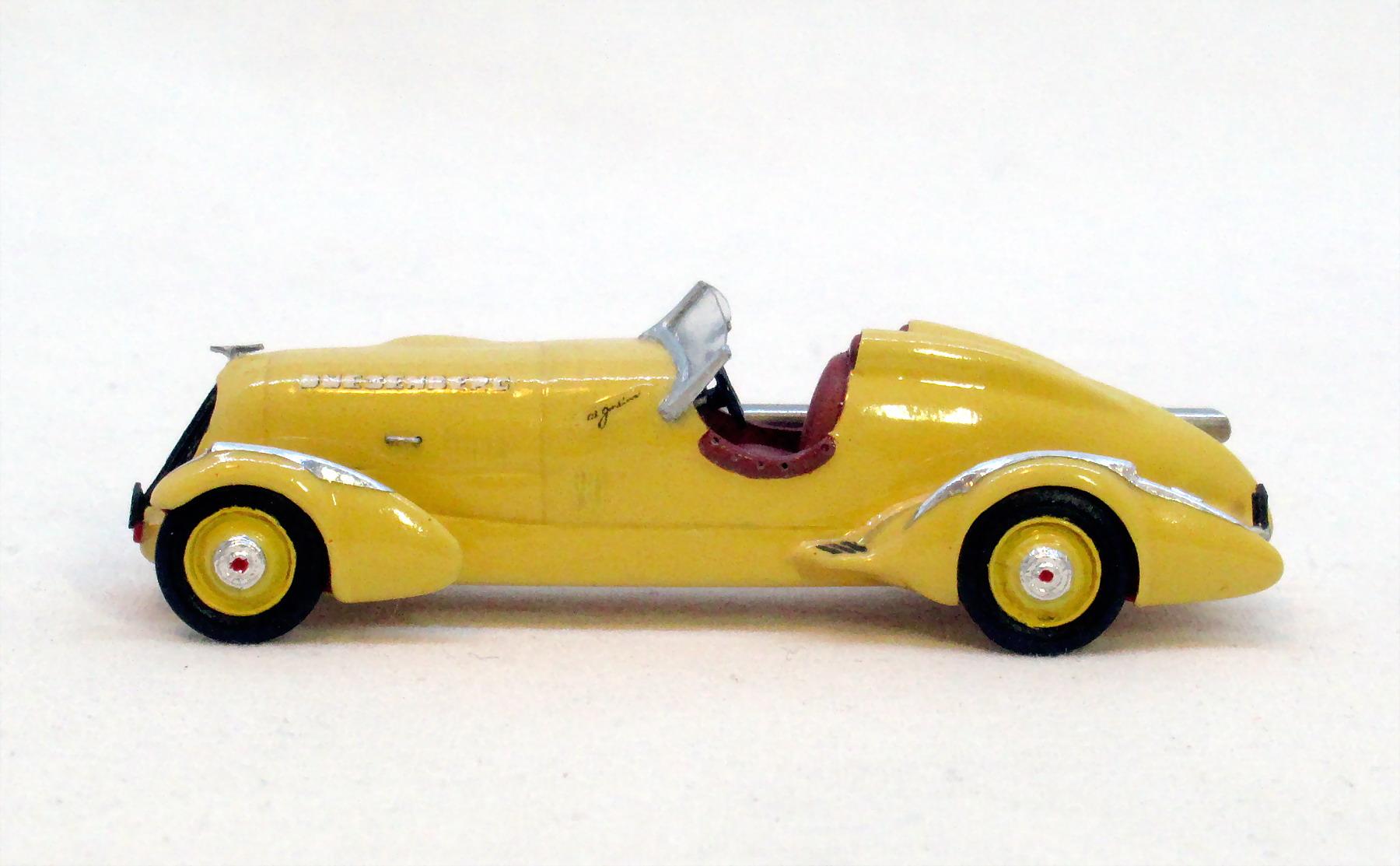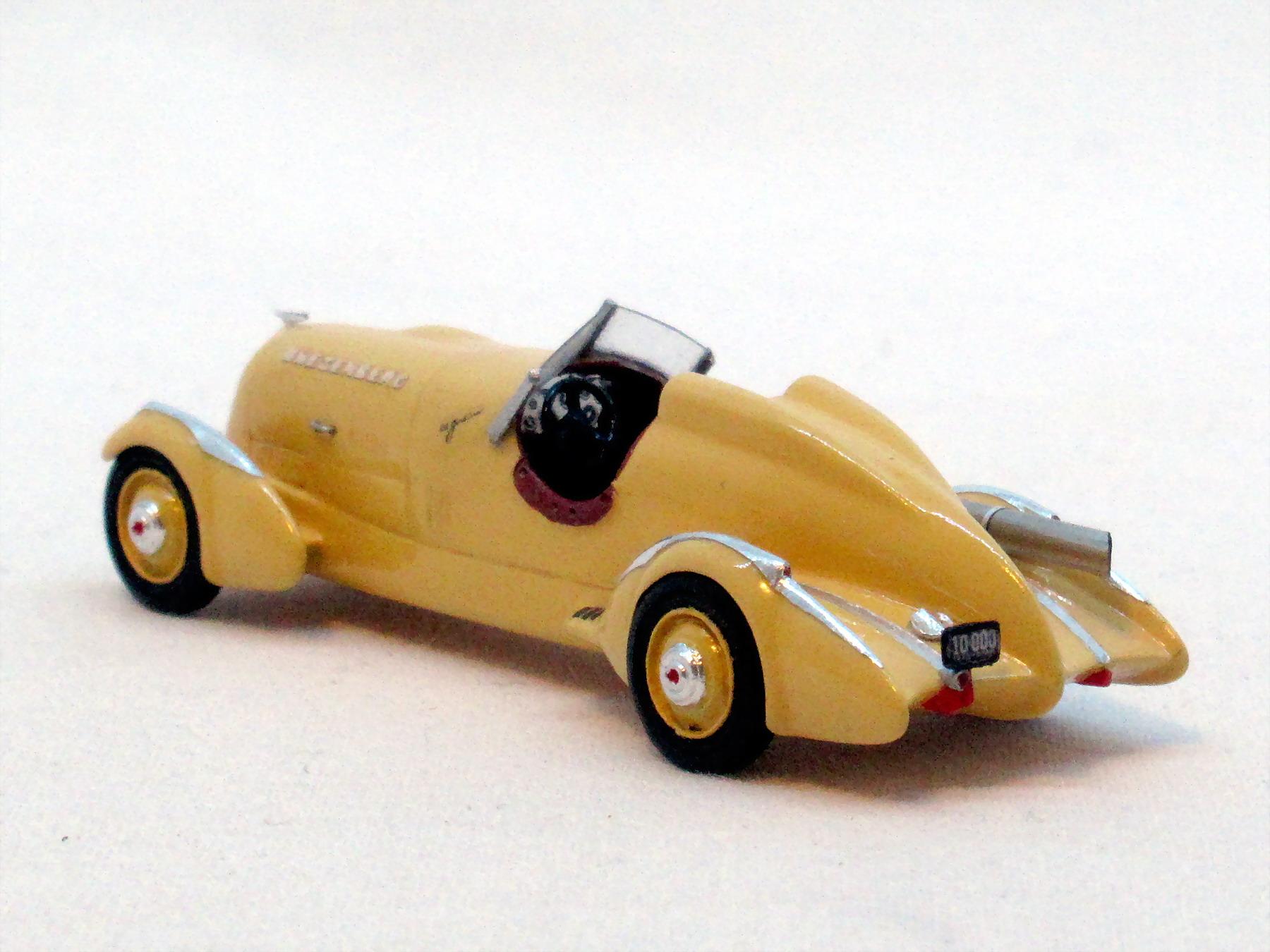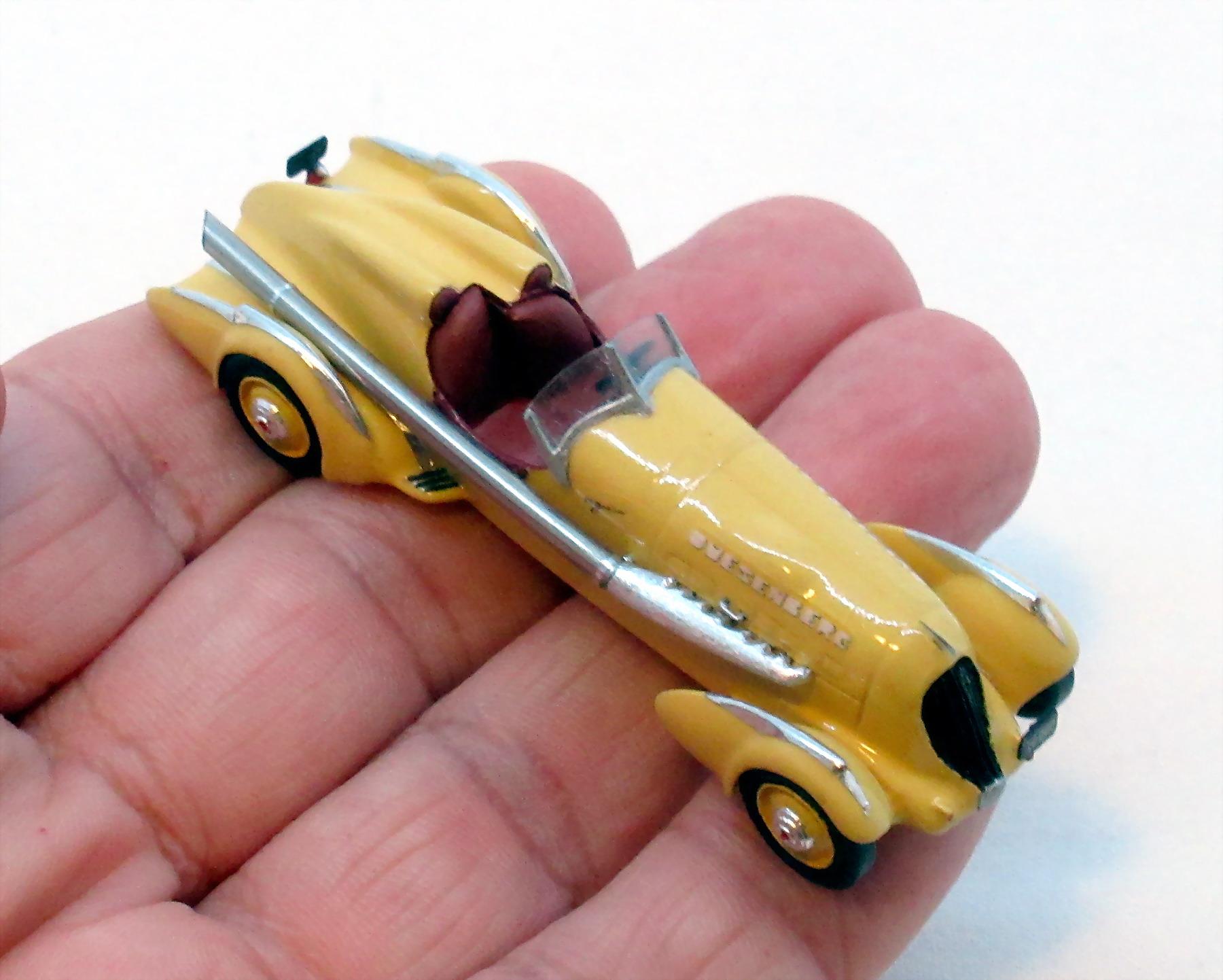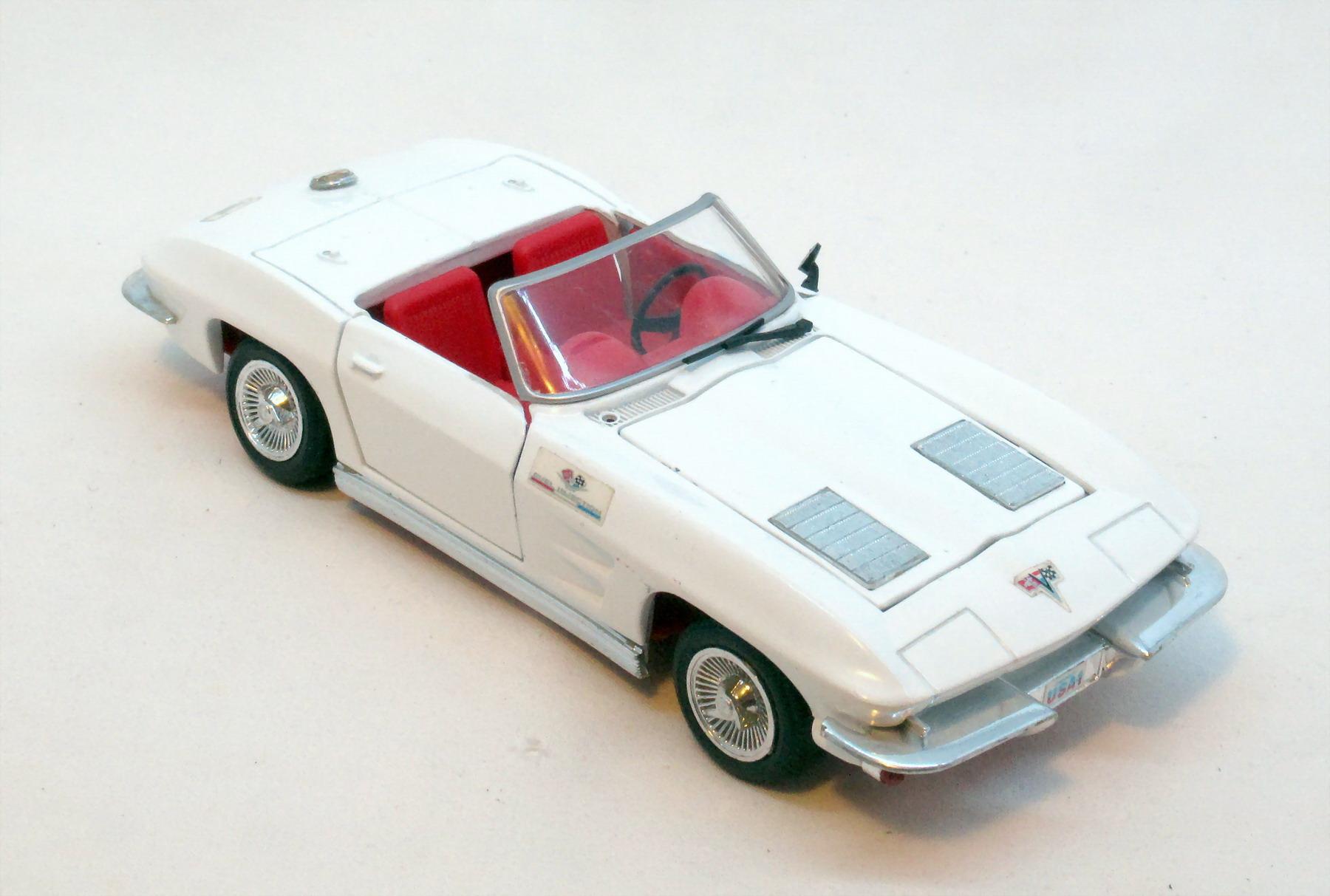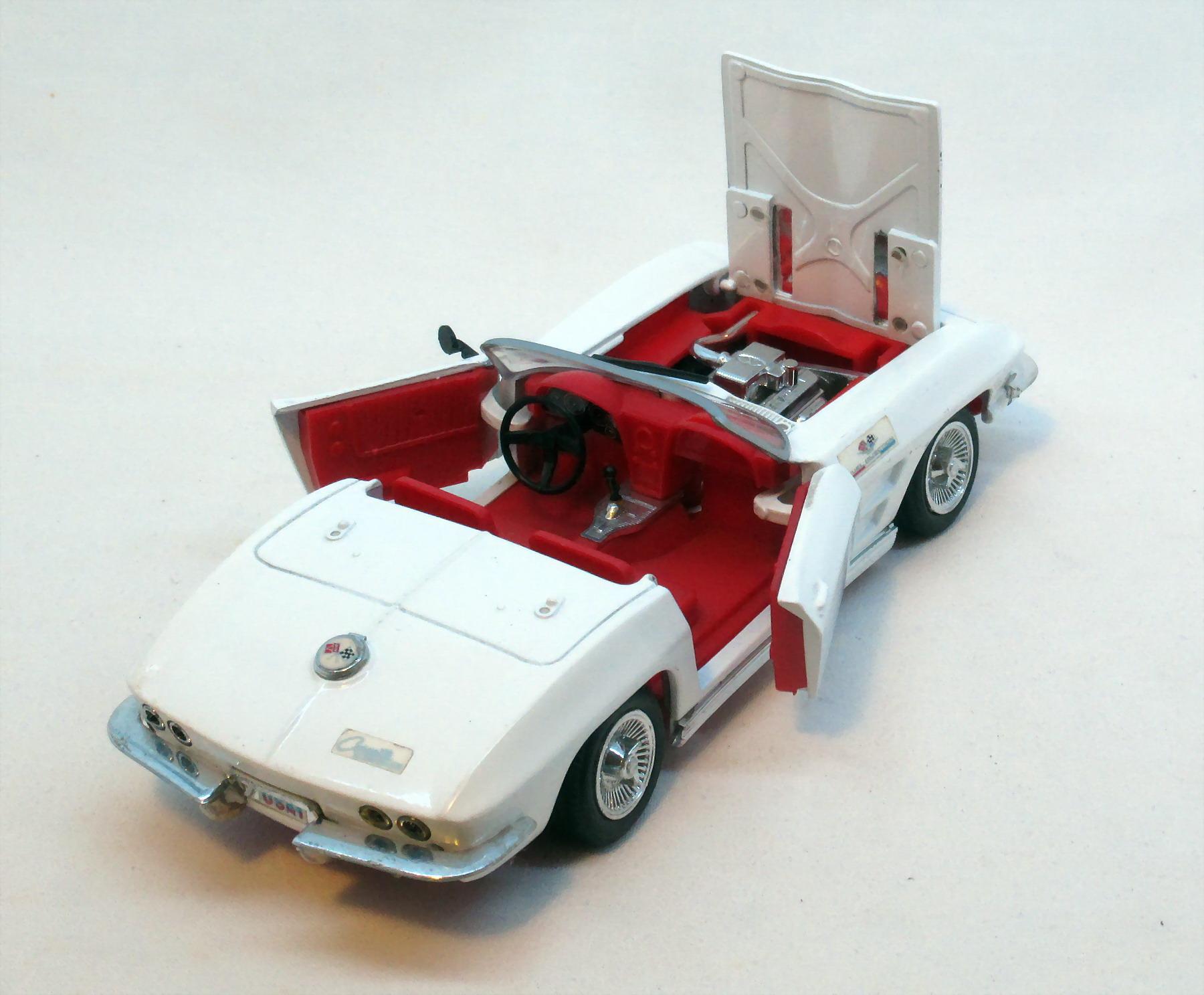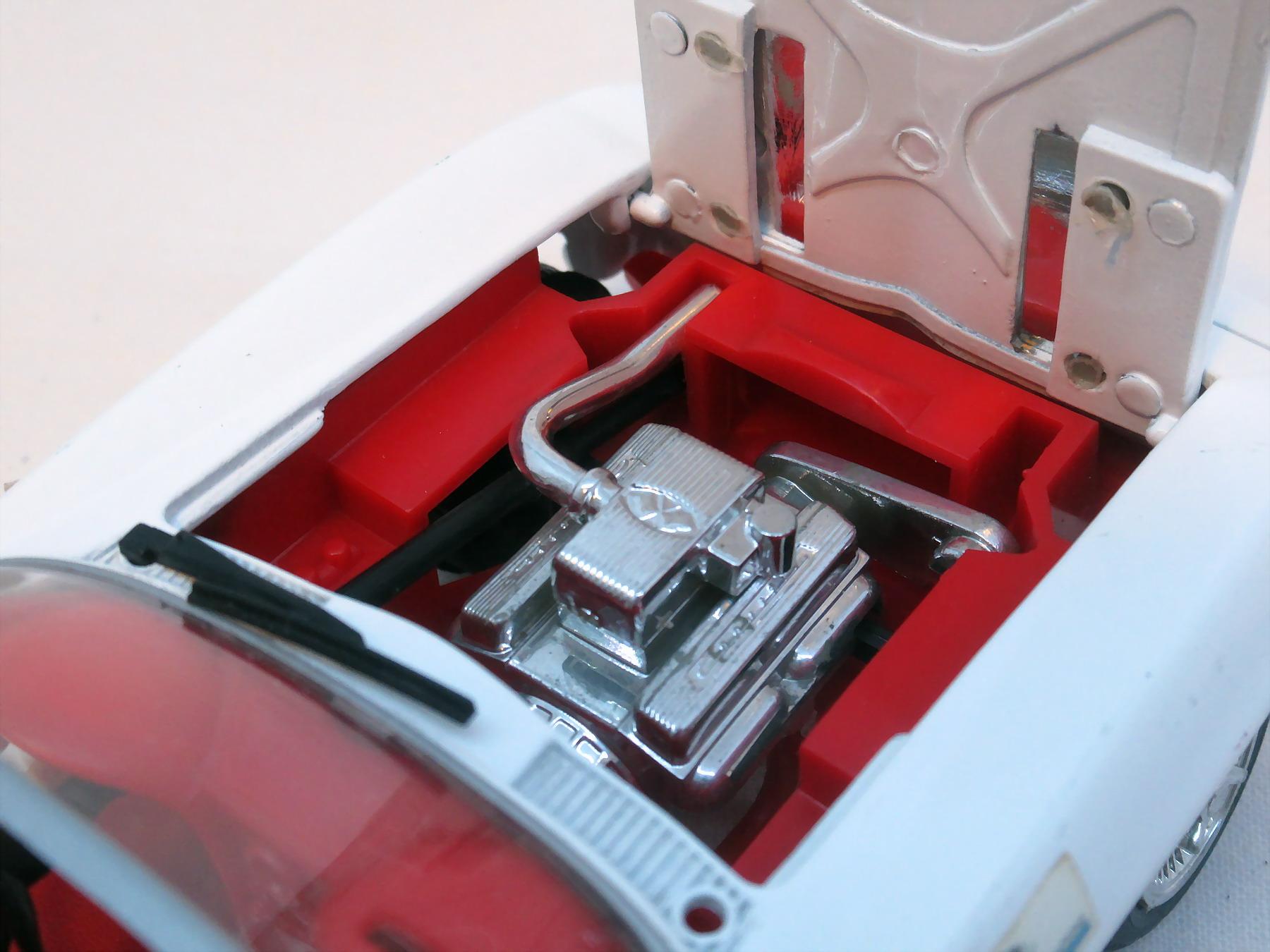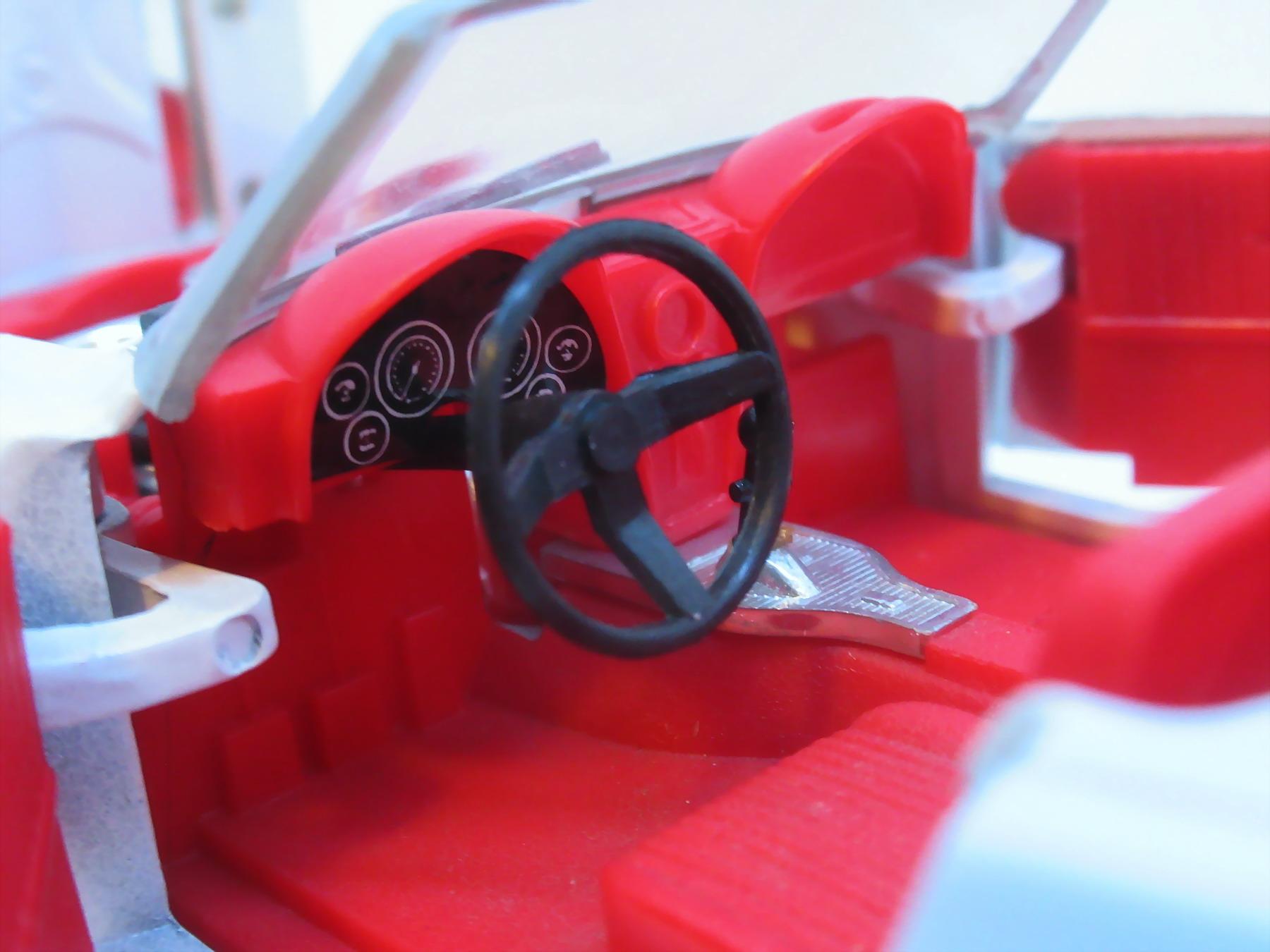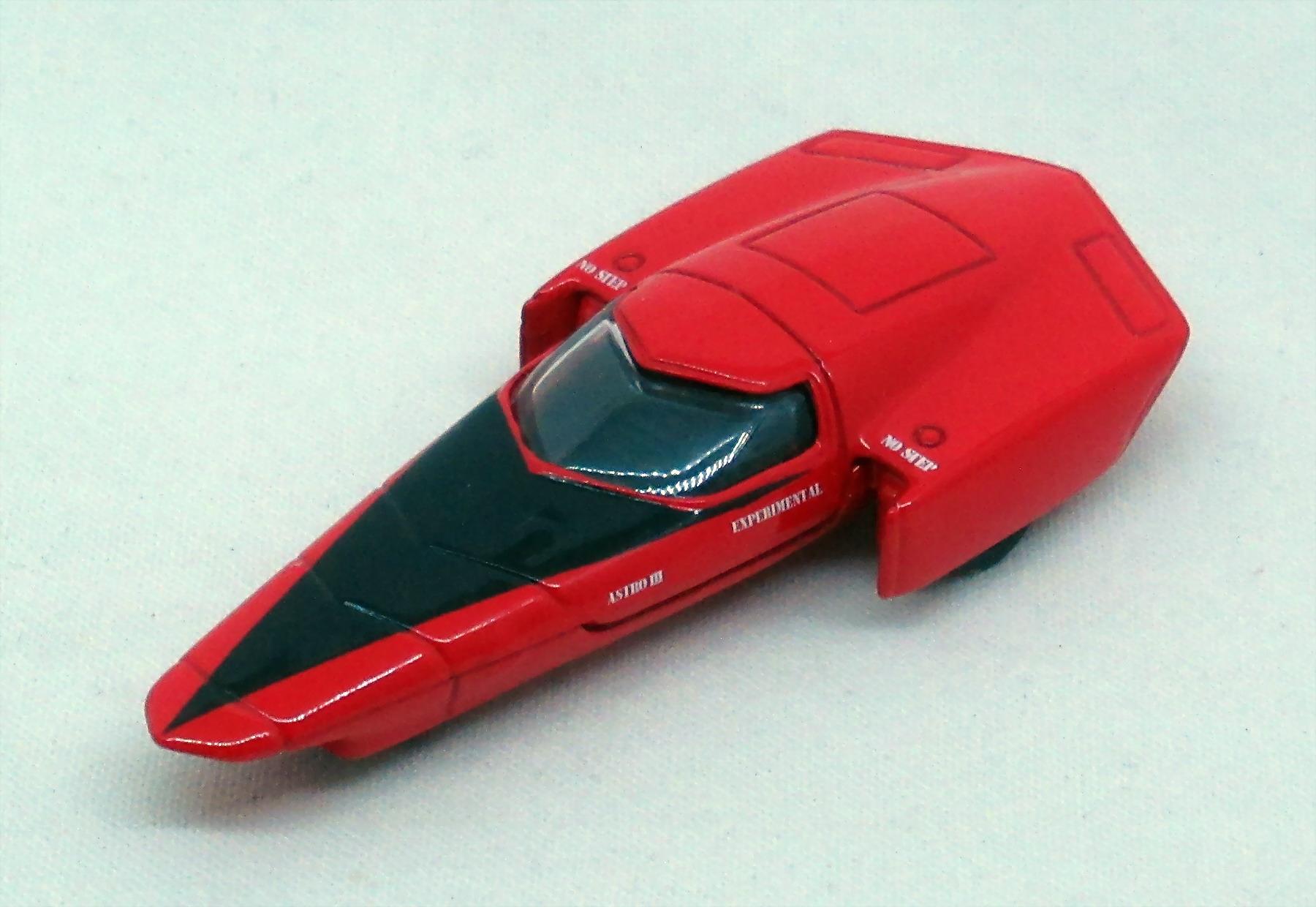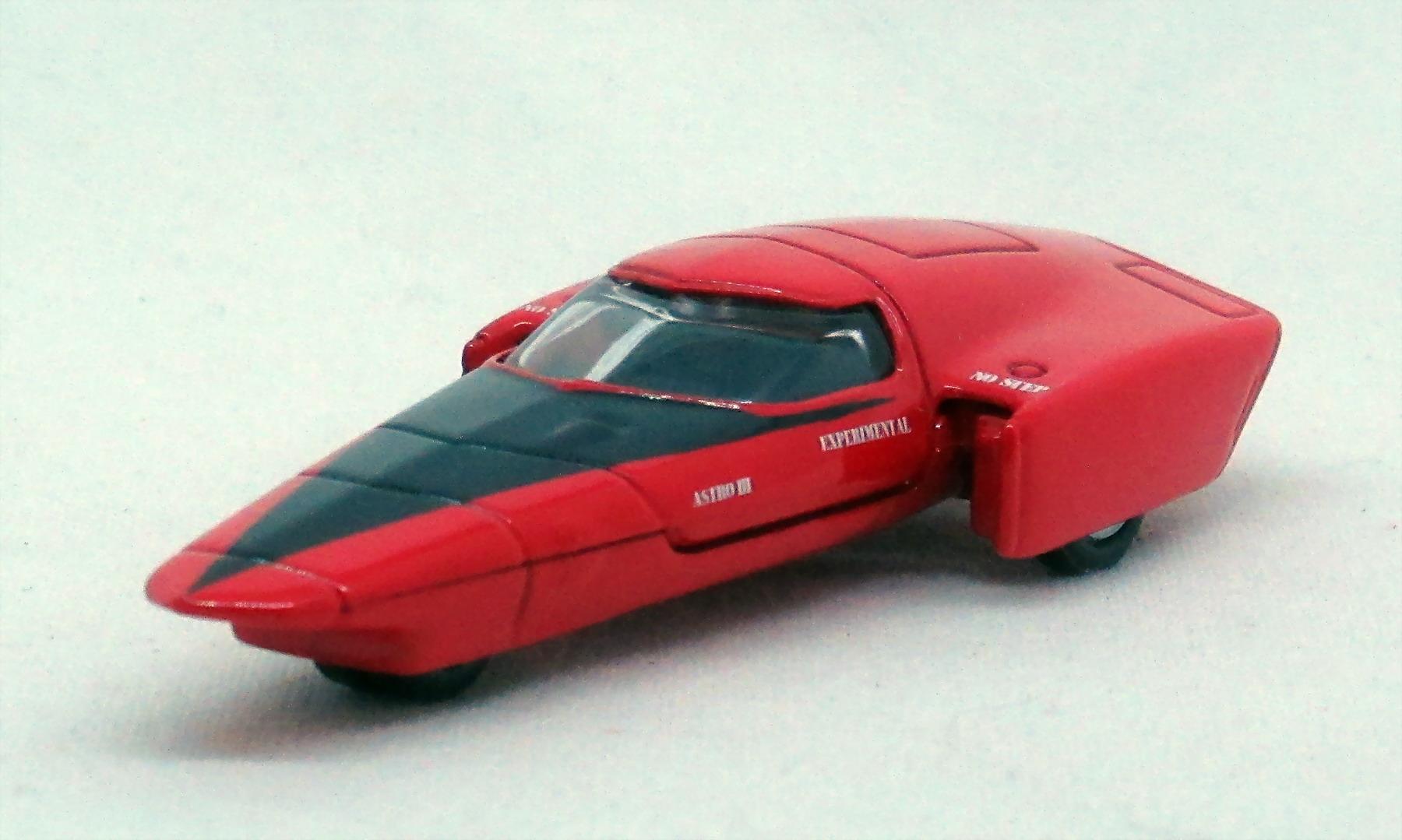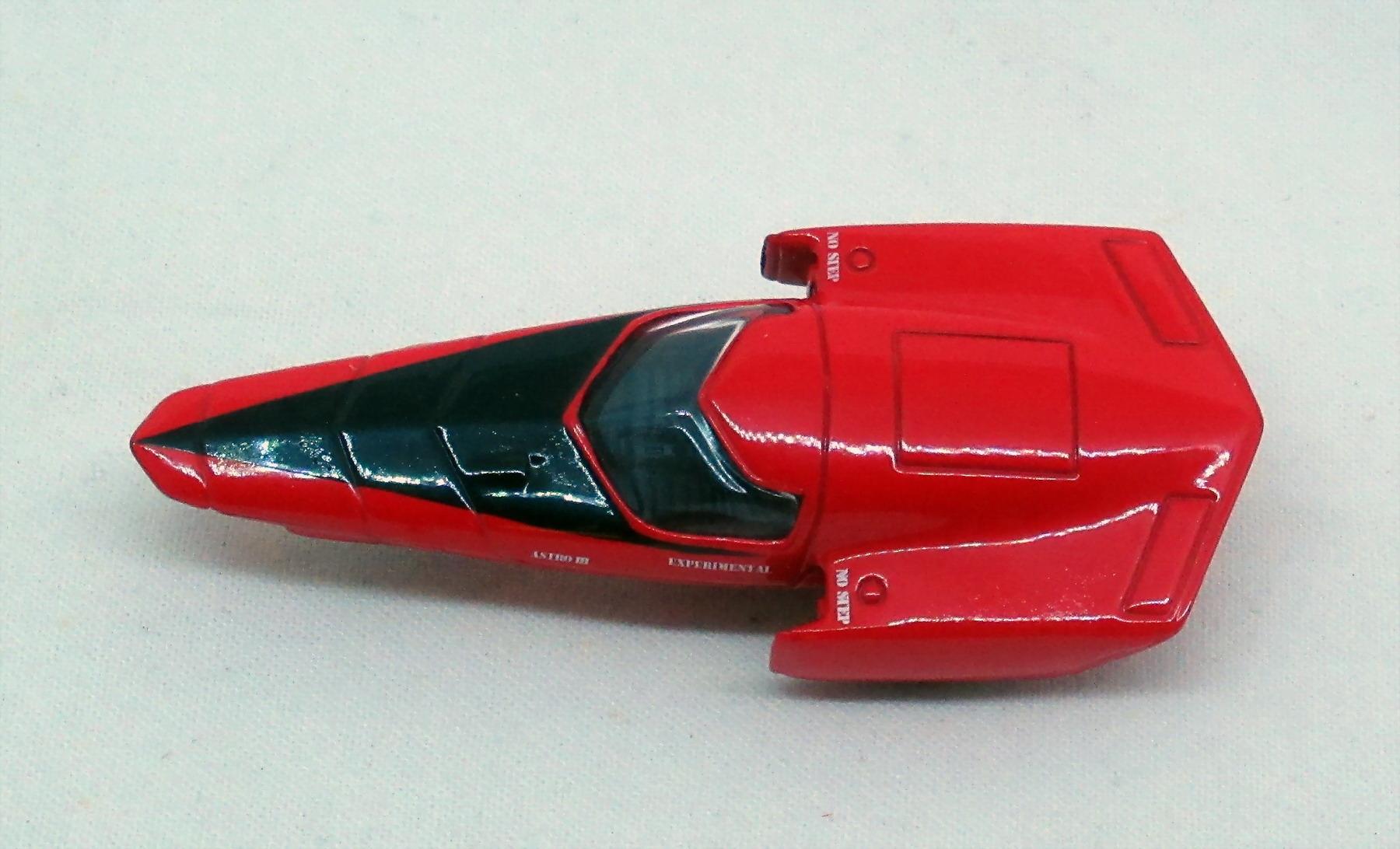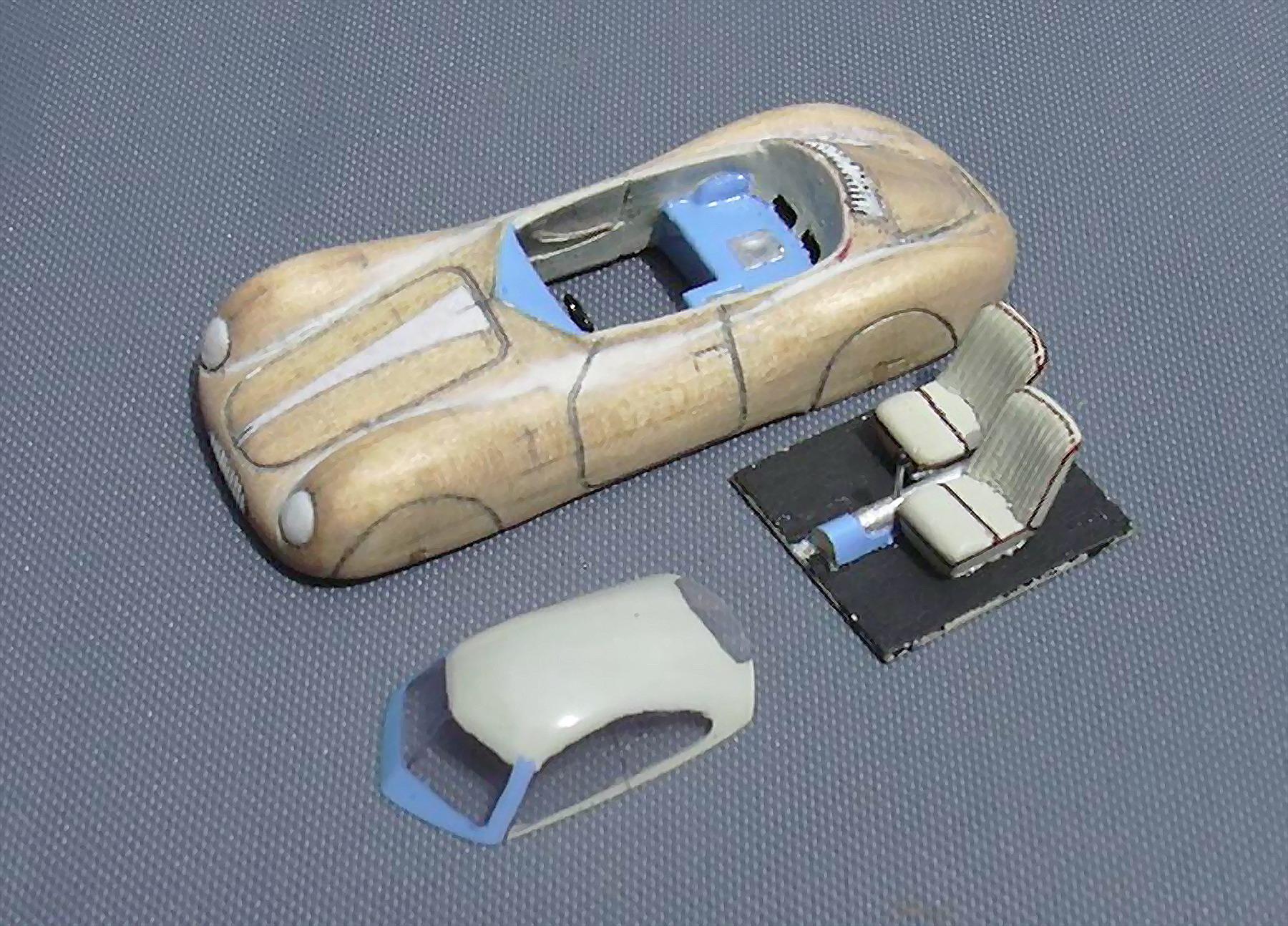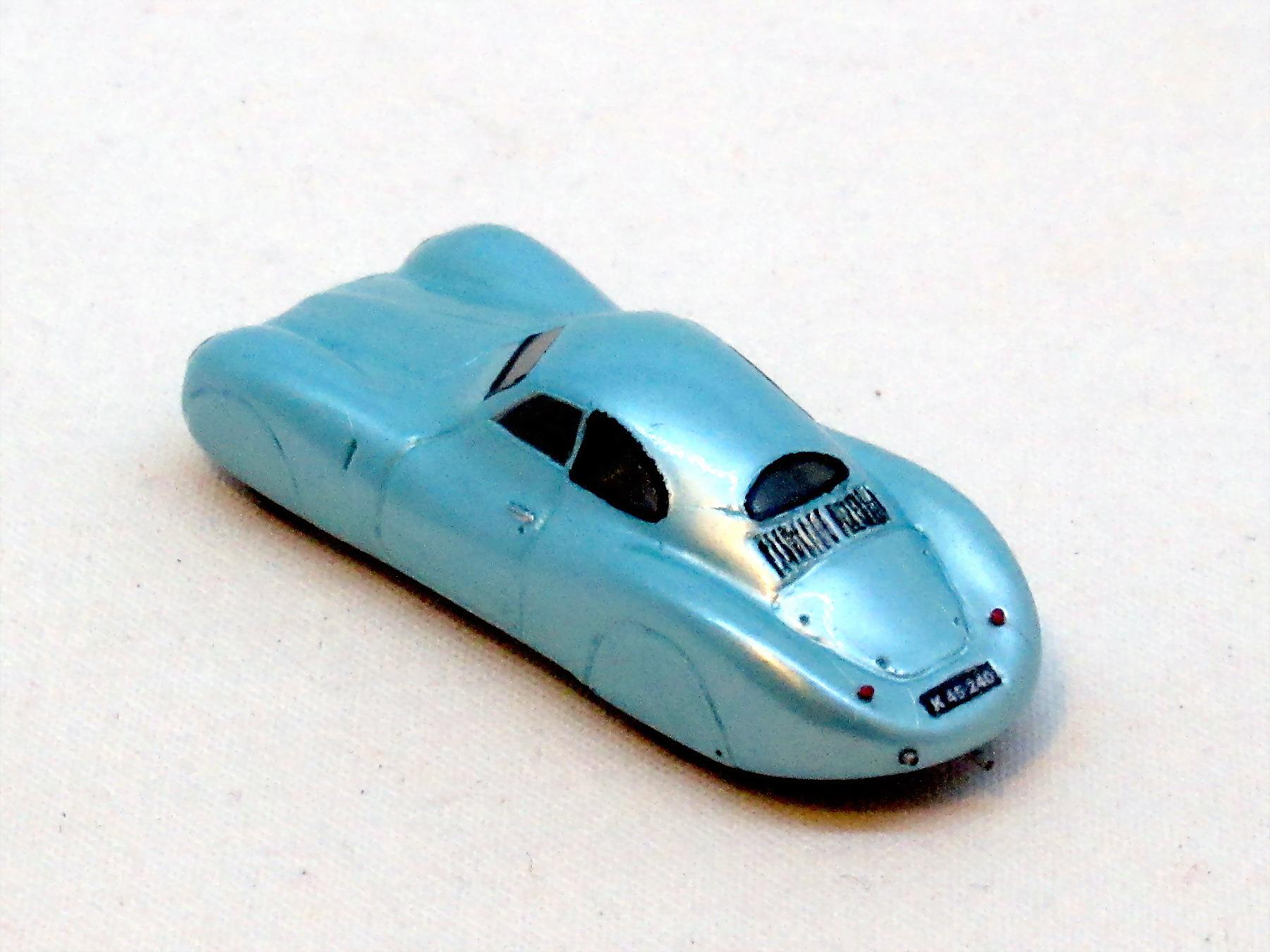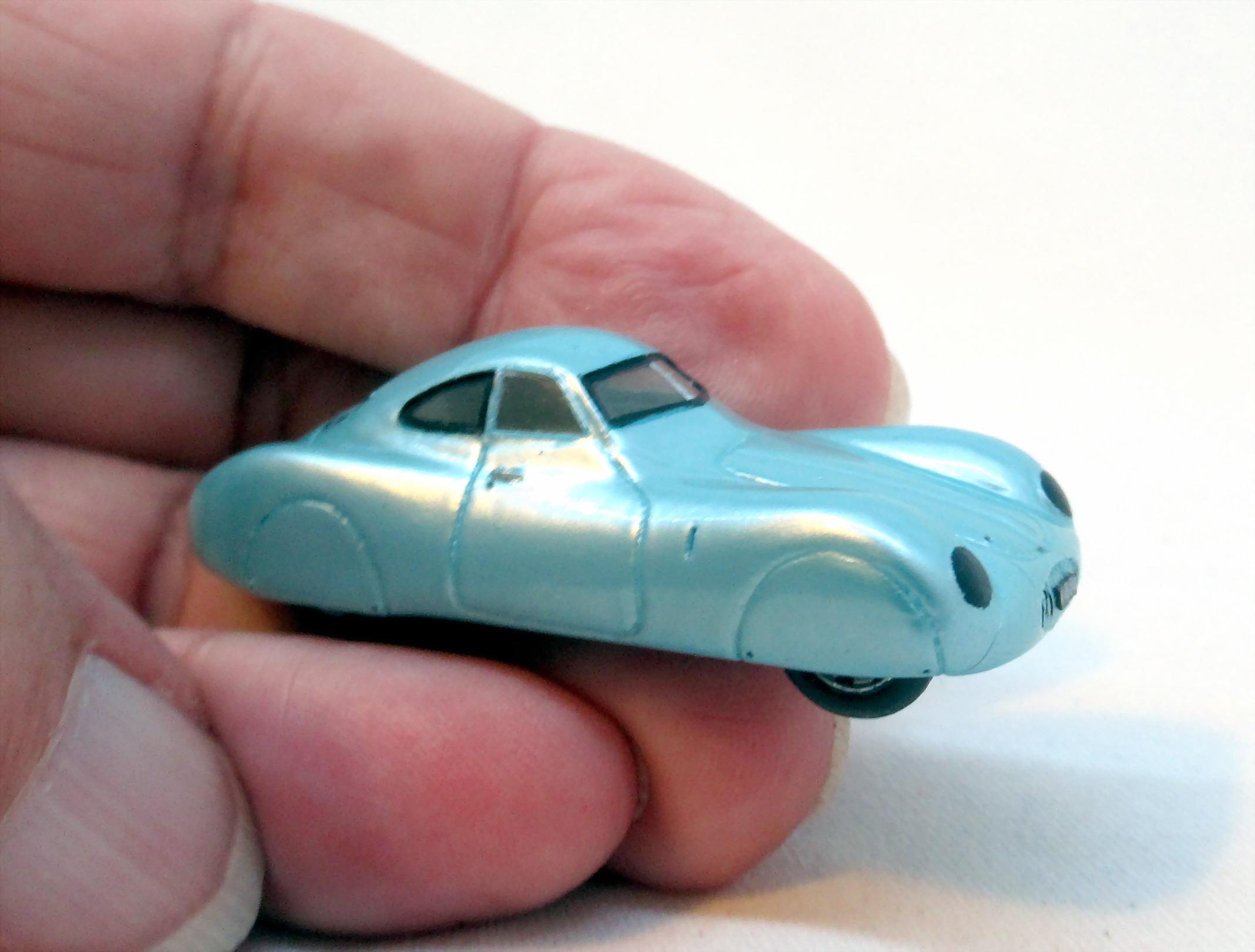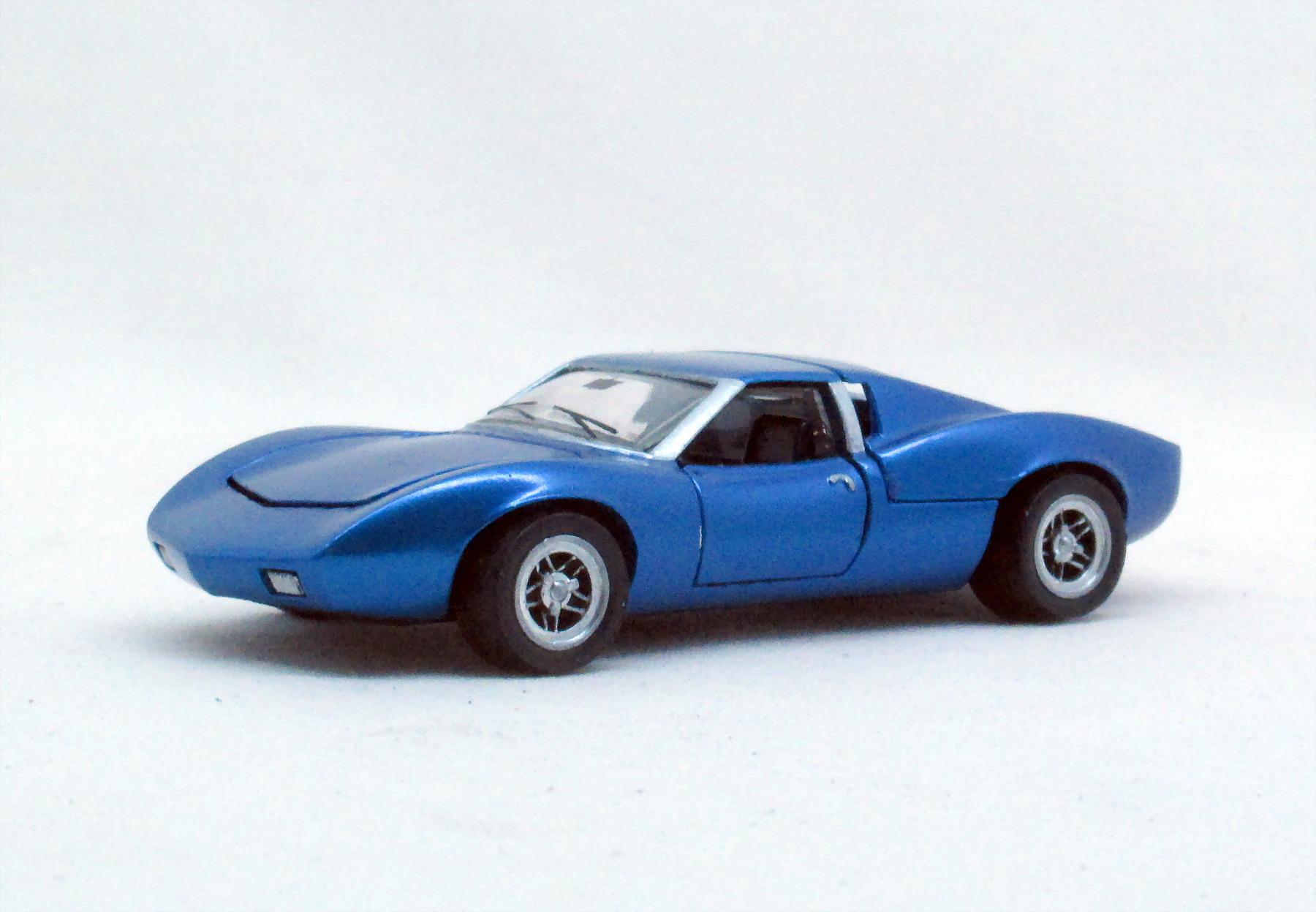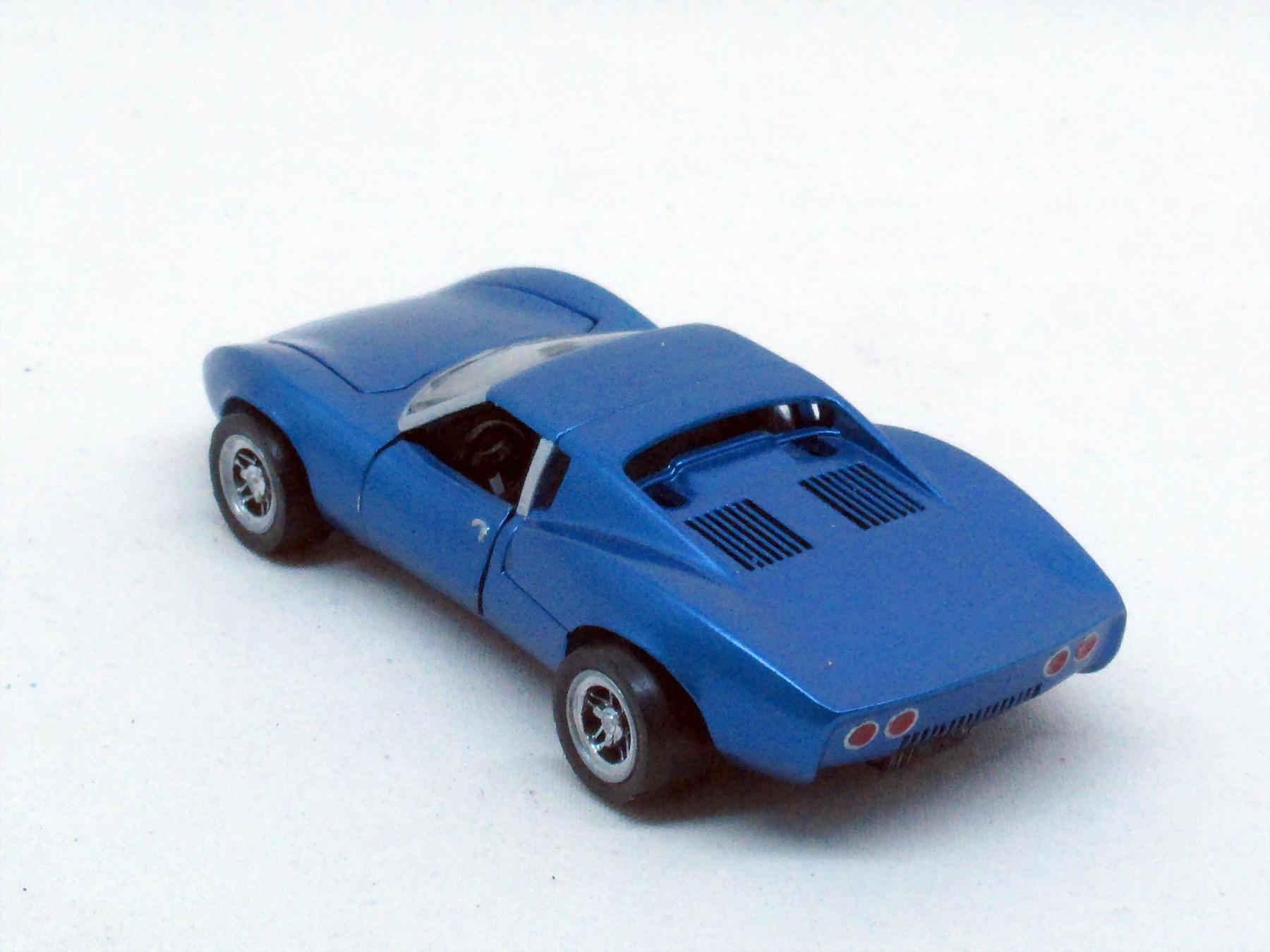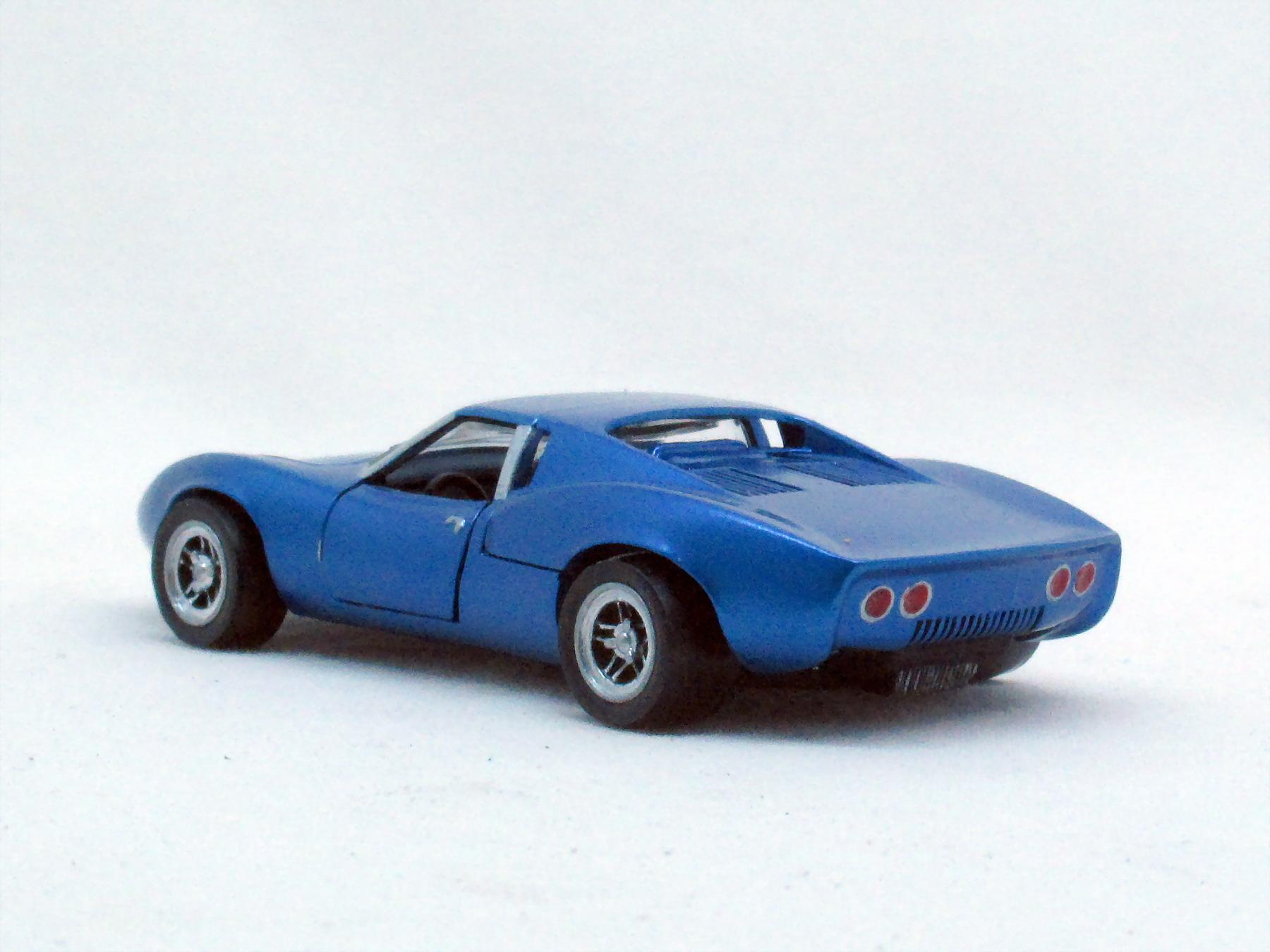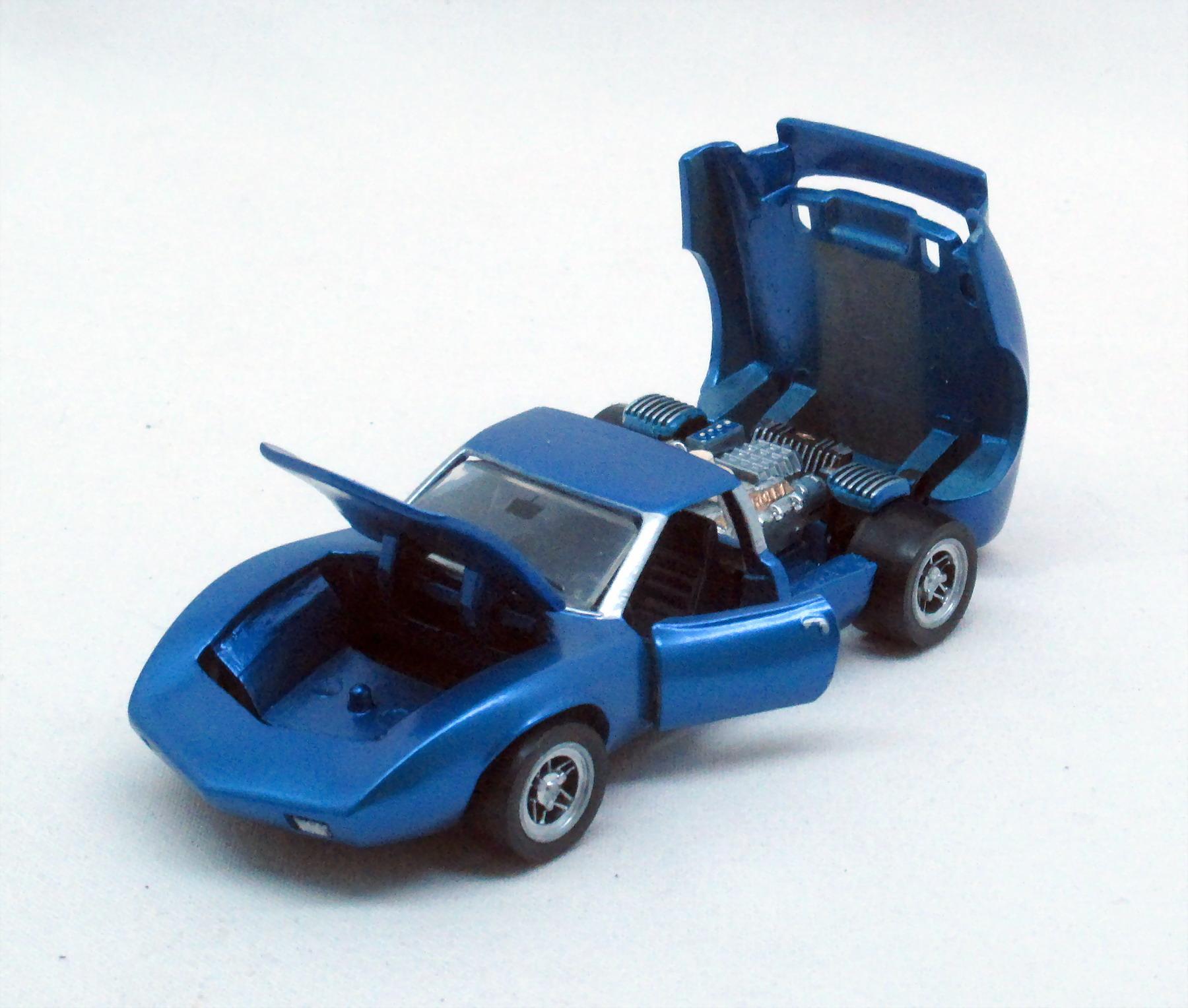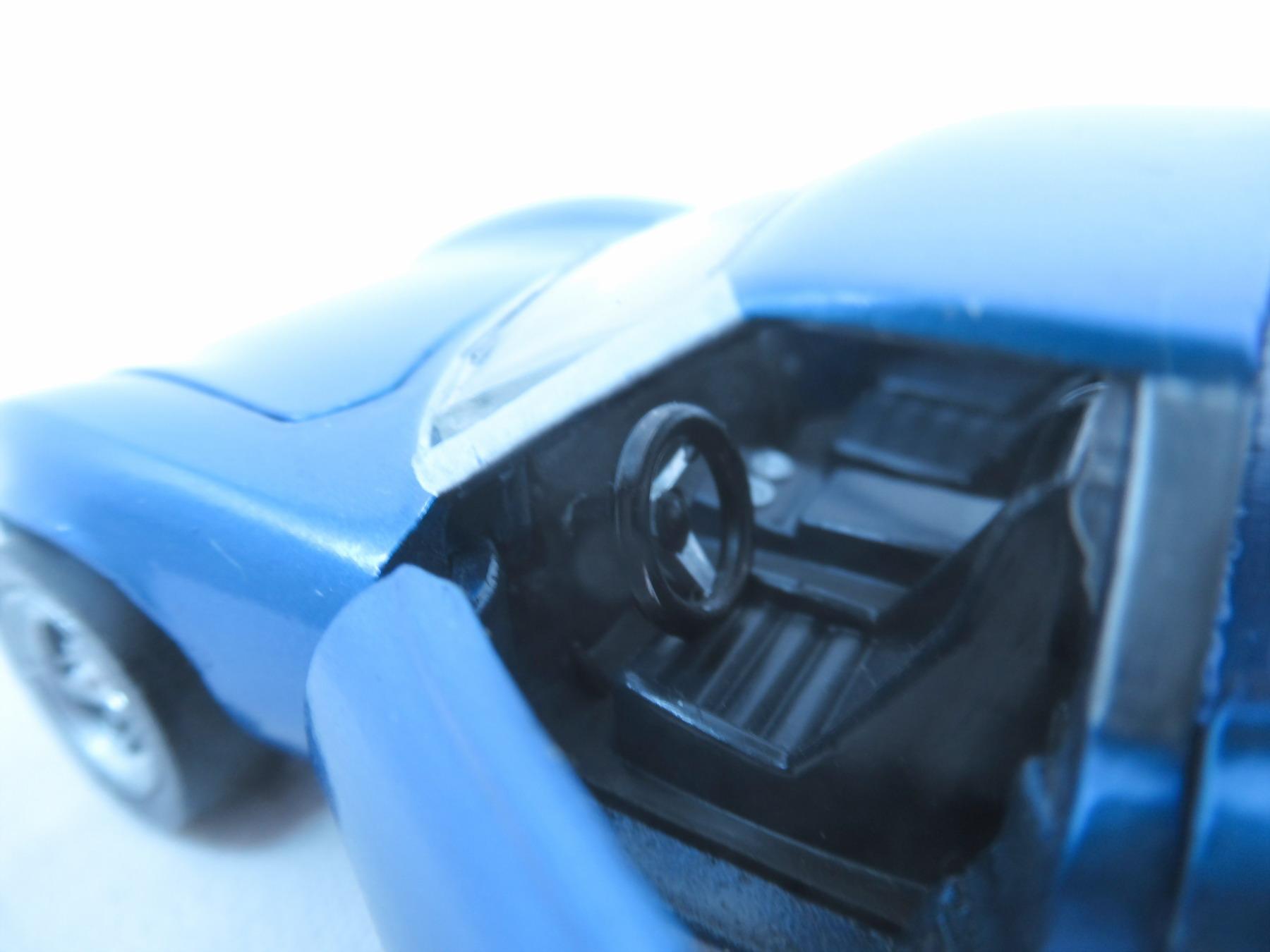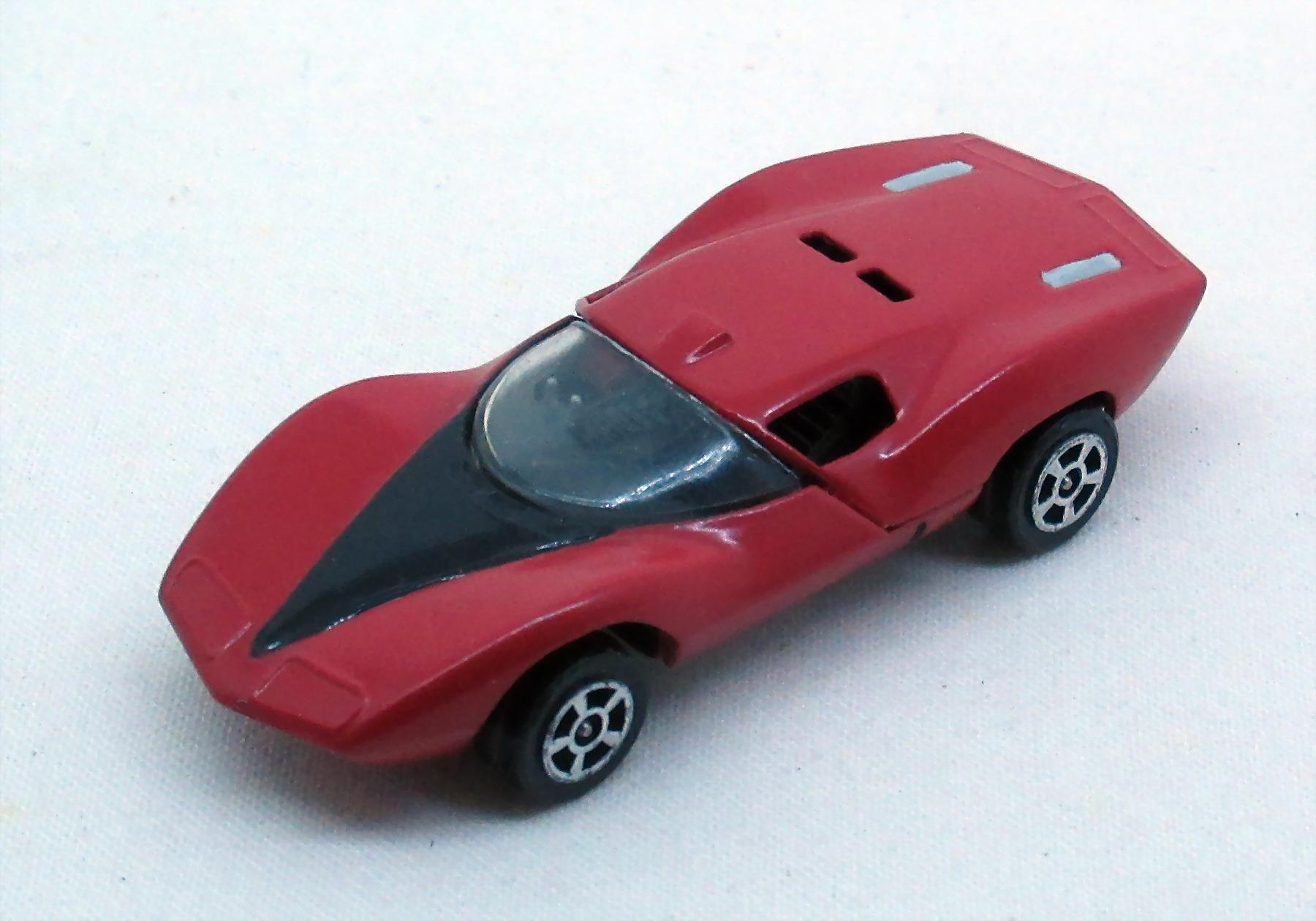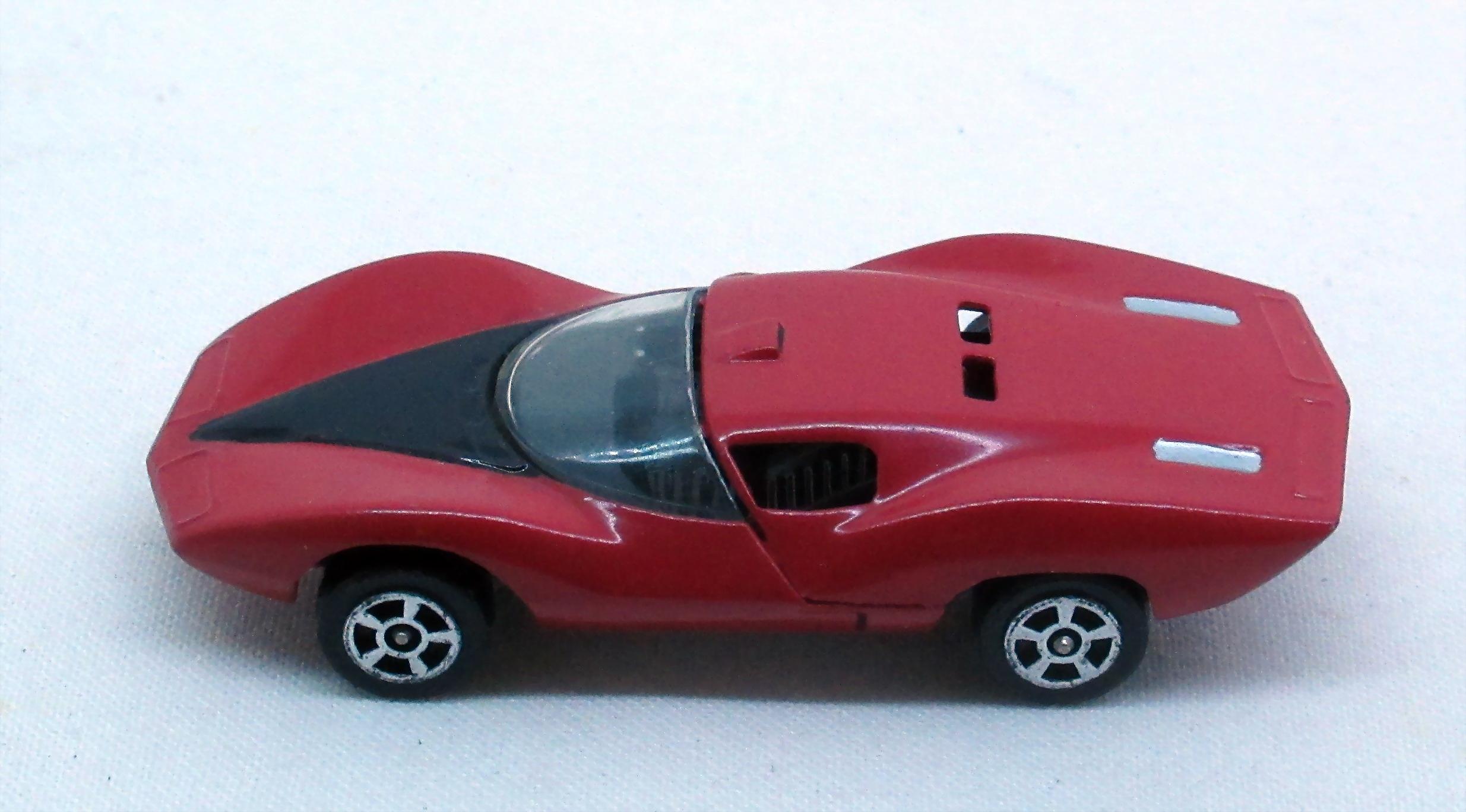-
Posts
477 -
Joined
-
Last visited
Content Type
Profiles
Forums
Events
Gallery
Everything posted by caapa
-
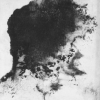
3D Printing........Scratch Building or Not?
caapa replied to Bugatti Fan's topic in General Automotive Talk (Trucks and Cars)
IMHO we should start with the origin of the term: - scratch is a manual activity with a tool in hand. - building is no doubtfull. While holding the workpiece and/or tool in your hand we can be sure it is scratchbuilding. If the tool is power tool in your hand the work is a scratchbuilding. This applies to hand-operated/controled lathes, milling, drilling, sanding macines because the workmanship is the result of your hands. This machines are giving power and accurarcy to your hands but they don't work without them. But if you set up a machine to make a part, the result is not the result of the work done by your hands, but by the machine. And of course by your brain with the special knowledge to control and program the machines and even write your own program for a specific component. This kind of building models isn`t scratch building but building by a high level of knowledge in machine programing, program writing and design for such programmed preparation. If I would build a model this way I would say: done MbM. (Made by Machine) And everybody know that your equipmenrt was a machine and not your hand. -
- 443 replies
-
- conceptcar
- showcar
-
(and 1 more)
Tagged with:
-
Pagani Huayra Dinastia 2019 Pagani Huayra Dinastia was built exclusively for China. The story began in Beijing’s Forbidden City where Pagani boss Horacio saw the ‘Nine Dragons Wall’. He was smitten with the dragons and at home he sketched a dancing dragon across the sides of the Huayra supercar’s body. They built only 3, the first is a blue carbon Huayra, the second in purple and the third in gold. It’s only a trim special, and Pagani tells all three are mechanically identical to the ‘standard’ Pagani Huayra – if such a thing can be called standard. The model is made by Double Horses/China 1:24 scale. The gold one has a privat owner and it seems that a 100% modeling was not allowed. So for example the dragon is missing from the side of the car. Enjoy the pictures.
- 443 replies
-
- 2
-

-
- conceptcar
- showcar
-
(and 1 more)
Tagged with:
-
Mirage Gulf Group7 1974 John Wyer was back on his own in 1972 after the successes with Ford GT 40, Mirage 1 and Porsche 917 . The team was renamed Gulf Research Racing Company and began to build a new Mirage the 6. The Formula 1 sourced Cosworth engine and Hewland gearbox served as fully stressed members of the chassis. The V8 was de-tuned for reliability reasons but still produced well over 400 bhp. The car was not competitive enought so the M6s were rebuilt as the Gulf Mirage GR7s for the season 1974. Much of the work concentrated on getting the weight down to the Le Mans winning Matras. This was mostly achieved by using titanium for many parts. The aero package was also tweaked by lengthening the nose and moving the wing further back. Derek Bell set the fastest lap in the season opening Monza 1000 km race, grabbed the pole at Spa and finished third in the final three rounds of the World Championship. At Le Mans, the Mirage also survived and claimed fourth. Unfortunately the pace and reliability could not be converted in victories. The model made by Polistil in 1:55 scale. I repainted and decaled the livery of the car . Enjoy the pictures.
- 443 replies
-
- 1
-

-
- conceptcar
- showcar
-
(and 1 more)
Tagged with:
-
Pagani Huayra Roadster 2017 This is the first roadster lighter than the coupe version. A twin-turbocharged Mercedes-AMG V12 engine is installed in the opened body, the same as in the coupé. But it now has a total power output of 764 PS. The new car incorporates active aerodynamics by flaps in front and rear . This is intended to achieve minimal drag coefficient or maximum downforce depending on the situation. (car's speed, lateral acceleration, steering angle and throttle position) Pagani states that the car produces 816 kg of downforce or 1.8 lateral G-force. However, this figure is unproven, but if true, Pagani sets a new record. Only 100 will be made, all of which have already been sold before the production start. The model is made by Motormax in 1:24 scale. Enjoy the pictures.
- 443 replies
-
- 1
-

-
- conceptcar
- showcar
-
(and 1 more)
Tagged with:
-
Nissan GT-R Le Mans Nismo 2016 October 1, 2015, Yokohama - Nissan announced that the innovative Nissan GT-R LM NISMO will return to race in the FIA World Endurance Championship in the LM P1 class in 2016. The same team of contrarians who developed the equally provocative DeltaWing worked on the new project, but now they made a seemingly obsolete front-engine layout and relying on front-wheel drive. The basic idea was that the engine puts weight on the front wheels, meaning more traction for the tires to harness the twin-turbo V-6's power. An off-the-shelf energy recovery system (ERS) should have boosted total output to well past 1,000 hp, but it didn't work as advertised and Nissan raced with a deficit of several hundred horsepower. In Le Mans practice and qualifying Nissan's three prototypes were 20 seconds off the pace of the class-leading Porsches. A critic asked "If I had a car as slow as that, I wouldn't go racing; I'd go testing." Amazingly, on race day the GT-R LMs lapped faster even after 20 hours than they did during qualifying. Only one of the three cars reached the checkered flag, though it was 153 laps behind the race-winning Porsche 919 Hybrid. The model made by Spark in 1:64 scale. Enjoy the pictures.
- 443 replies
-
- 1
-

-
- conceptcar
- showcar
-
(and 1 more)
Tagged with:
-
- 443 replies
-
- 3
-

-
- conceptcar
- showcar
-
(and 1 more)
Tagged with:
-
Delahaye 165 Figoni&Falaschi 1938 The Delahaye 165 Figoni&Falaschi Cabriolet is one of the world’s most sexy supercars, with its sweeping design was first released at the 1938 Paris Motor Show. Than in 1939 it was loaded onto an ocean liner before its high-performance V-12 engine could be installed. While the car was in New York on the World Fair show stand, World War II was escalating in Europe, keeping the engine in France and the car in America. Following its show stint, the Delahaye was impounded by US Customs for the duration of the war and was then sold at public auction. The new owner put a Cadillac engine in place and sold the car for $12,000. The car somehow washed up on a used car lot in Honolulu. It was bought by an enlisted man, who then abandoned it at a garage in Fresno, California where the dramatic fenders were serving as a slide for neighborhood kids. There, Jim Hull and new owners Merle and Peter Mullin found the weathered survivor in 1985. Mullin soon received a call from Europe. Count Hubertus von Doenhoff informed Mullin that he had the car’s original V-12 engine. The collectors arranged for the Delahaye to be made whole more than four decades after the motor and car were separated. There was built only 10 of this design. A 1939 Delahaye 165 Figoni & Falaschi Cabriolet was a best-in-class winner at the 2023 Pebble Beach Concours d’Elegance. The model made of wood in 1:75 scale. The windscreen can be lowered, but not all the way down, because then it would not be possible to lift it up again.(pull it out) Enjoy the pictures.
- 443 replies
-
- conceptcar
- showcar
-
(and 1 more)
Tagged with:
-
Nissan Deltawing Le Mans 2012 The Deltawing is the 21st century`s most daring race car designed by Ben Bowlby. The basic idea was: half the weight, half the fuel, half the power, half the drag, all the speed. And Bowlby could convincingly demonstrate the advantage of the delta form: he put a hammer head on the floor and said: “Pretend the head is the back of the car and now move it and look how easily it turns.” Dan Gurney, Duncan Dayton and Don Panoz and finaly Nissan were convinced. They built the car and began to test it but it didn`t worked perfectly. The elder Gurney had the realization that the DeltaWing had a very similar shape to the innovative 1981 Eagle Indy car. So they copied the floor design and the vortex generators and suddenly the DeltaWing was working in the wind tunnel as expected. More over the development driver said: „within three laps, the balance felt right, and the corners were flat. It were great.” Despite its name, the car lacks any front or rear wings – downforce comes from the underbody. The engine was a four-cylinder turbocharged direct injection one producing 300 bhp. In 2012 Le Mans 24h the car arrived laptimes between LMP1 and LMP2 level. But after six hours of the race, a Toyota LMP1 car knocked him off the track and into a concrete wall. The DeltaWing was the most original race car to run Le Mans since Jim Hall’s 1967 Chaparral 2F. The model is made by Spark 1:64 scale. Enjoy the pictures.
- 443 replies
-
- 3
-

-
- conceptcar
- showcar
-
(and 1 more)
Tagged with:
-
Ferrari Testarossa Spider 1985 There is only one official convertible variant of the Testarossa, commissioned in 1986 by the then-Fiat chairman Gianni Agnelli to commemorate his 20 years of chairmanship of the company. This Testarossa Spider has an Argento Nürburgring exterior, a white magnolia leather interior and a white electronically operated soft top that could be manually stowed away. It had a solid silver Ferrari logo on the hood instead of the regular aluminium one. The spider had a standard 4.9 L flat-12 engine with a power output of 396 PS, though the top speed was reduced because of the excessive weight arising due to the reinforced chassis. The vehicle was delivered to Agnelli in four months. Despite many requests from interested customers, Ferrari refused to produce the car as a regular production variant. Pininfarina and some aftermarket firms such as Straman, Pavesi, Lorentz and Rankl, and Koenig Specials offered unofficial Spider conversions on special consumer requests. So all further spiders are one-offs too. The model is made by Revell in 1:24 scale. I found a ref picture with the white rear end and repainted the car accordingly. Enjoy the pictures.
- 443 replies
-
- conceptcar
- showcar
-
(and 1 more)
Tagged with:
-
Thank you very much the nice comments. If I think back to my initial models there is some qualitative improvement indeed.
- 443 replies
-
- conceptcar
- showcar
-
(and 1 more)
Tagged with:
-
Duesenberg Mormon Meteor Special 1935 For Fred and Augie Duesenberg, it had always been about the racing. Fred kept his hand in the racing program, located across the street from Duesenberg Inc. Three years after Fred’s death in July 1932 - Augie led the way in setting a land speed record at Bonneville with driver Ab Jenkins and the remarkable supercharged Duesenberg Mormon Meteor Special. A centrifugal supercharger, designed by Fred, ran at six times the engine speed, increasing manifold pressure 7,5:1 at 5000 rpm and boosting engine output to a remarkable 390-400 horsepower, according a Duesenberg dynamometer test. It was August 31, 1935, scorching nearly 49°C heat was radiating off the glistening white salt flats. The Meteor run ghost like out the vortex of thermal reflection and hurtling past the timers at nearly 160mph. A new land speed record ! But it was not enought. The car run 24 hours long on a 10 mile ovel track and set an other record: an average of 233 km/h. The distance travelled is nearly the equivalent of driving USA coast-to-coast in one day. The model made of wood with vacuum formed fenders in 1:75 scale. Enjoy the pictures.
- 443 replies
-
- 1
-

-
- conceptcar
- showcar
-
(and 1 more)
Tagged with:
-
Chevrolet Sting-Ray Convertible 1963 For the first time in the Corvette's history the wind tunnel testing influenced the final shape of a new model. Underneath the bodywork, the technology has gone new too: a rear transaxle, an independent rear suspension and four-wheels disc brakes with the rear brakes mounted inboard. The new convertible had nearly twice as much steel support in its central structure as the 1958–62 ones. The resulting extra weight was balanced by a reduction in fiberglass thickness, so the finished product actually weighed a bit less than the old roadster. New for the 1963 model year was an optional electronic ignition, the breakerless magnetic pulse-triggered Delcotronic and the engine was good for 356 horsepower. Production was divided almost evenly between the convertible and the new coupe – 10,919 and 10,594. In 2004, the Sports Car International named the Sting Ray number five on the list of Top Sports Cars of the 1960s. The model is made by Revell in 1:24 scale. The model is incorrectly marked on the chassis as type 1965. Enjoy the pictures.
- 443 replies
-
- conceptcar
- showcar
-
(and 1 more)
Tagged with:
-
- 443 replies
-
- conceptcar
- showcar
-
(and 1 more)
Tagged with:
-
Chevrolet Astro III. Concept 1969 The Astro III concept was only three feet high, making it the lowest concept model ever created and designed by GM. Developed under the leadership of Bill Mitchell, the car was an experimental two-passenger turbine model at the Detroit Auto Show 1969. It was a realy unusual car: two frontwheels closly, easily be steered by power-assisted pistol-grip lever controls, powered by a 250-C18 gas turbine engine, the view to the rear is by a closed-circuit television viewing screen. The lift-up canopy for easy access for the driver and passanger is inspired by aeroplans. Although the public and the profession are admired the design, the acceptance of a 3-wheeled car was no option for the buyers. Today, the Astro III concept model still exists and is part of the GM Heritage Collection. The model is made by Hotwheels about 1:64 scale. Enjoy the pictures.
- 443 replies
-
- 2
-

-
- conceptcar
- showcar
-
(and 1 more)
Tagged with:
-
VW Type 64 Berlin-Roma 1939 In 1937 began the organization of a road rally from Berlin to Rome. Because of the Sudeten Crisis the race was postponed to 1939. In September 1938 a project was started to create KdF’s (aka VW Beetle) Berlin-Rome competition car. The car using type 60 KdF-Wagen’s mechanicals with design from Porsche 114 project. (a V10 mid-engined layout) The engine was 1131 cc, 4 cylinder boxer with 39 bhp. The well streamlined bodywork helped the poorly powered car to a top speed of 140 km/h but the race did not take place due to the outbreak of World War II. There were 3 units built, the first was built and later dismantled, chassis probably used for car no.3. The second was ready at end of 1939 and during 1945 the roof was cut off by US soldiers. Later parts of the car were sold for the owner of the third car. The third car was completed in summer of 1940. Ferry Porsche used it and had the car rewamped in 1947, supposedly at Carozzeria Pininfarina in Italy. In 1949 the car was sold to Otto Mathé – an austrian motor racer who raced with the car regularly. (in the 50`s Otto Mathé was Niki Lauda’s childhood idol) The model made of wood and the uper part of cocpit vacuum formed from transparent plastic. The scale is 1:75. Enjoy the pictures.
- 443 replies
-
- 2
-

-
- conceptcar
- showcar
-
(and 1 more)
Tagged with:
-
Hi John, very nice two models. The Miller is a metal kit ? And which scale ? Looks with mutch details. The Bugatti got a good paint combo I like it ! (as all of the Bugattis) Thank you for sharing with us.
- 443 replies
-
- conceptcar
- showcar
-
(and 1 more)
Tagged with:
-
Chevrolet Astro II Concept 1968 In the 1960s Arkus-Duntov was totally convinced that mid-engine was the only way to go for Corvette to compete effectively in styling, image, and performance against the top European sports cars. The idea was first explored publicly with the Astro II mid-engined concept car in April 1968 at the New York auto show, penned by Larry Shinoda the design guru of Corvettes. A 400 hp 7 liter big-block V8 was mounted backward, with its starter and ring gear under the seatbacks. The car was rolling on spoked cast-aluminum wheels, it boasted four-wheel-disc brakes and could generate an incredible 1.00 g of cornering grip - on street tires. While showing mid-engined concept Corvettes excited the press and public and created interest, the idea of actually investing in converting the Corvette to a mid-engine layout was strongly opposed as a major production cost-increasing risk. The project was finished. But two design features were later applied to production Corvettes. For ’73, when new bumper requirements have entered into force the Corvette got an attractive, body-color Astro treatment. Then for ’74, the Corvette’s tail was restyled to look like the Astro II’s. The model made by Politoys in 1:43 scale. The painting was in very bad condition so I repainted and detailed it. Enjoy the pictures.
- 443 replies
-
- 1
-

-
- conceptcar
- showcar
-
(and 1 more)
Tagged with:
-
Chevrolet Astro I Concept 1967 Long before the name was stuck on a minivan, the Astro I was the sleekest thing on wheels: a concept car created in 1967 by Larry Shinoda. The extremely low build of the car required special solutions. The entire body aft of the windshield was one piece and tilted up and back with a large screw mechanism. At the same time, the two bucket seats lifted out of their normal positions to aid ingress and egress. A V8 engine would have been too big so they installed the enlarged Corvair flat-six engine 2.9-liter and rated at 240hp mated to a production Corvair Powerglide transaxle. The planned top speed was 318,7 km/h. A three-element periscope was used in lieu of a rear-view mirror. It gave the driver a wider field of view and compensated for the lack of rear glass. Although the car was completely built it was never a runner. The model made by Corgi 1:64 scale. I repainted the heavily play worn car with some details by painting. Enjoy the pictures.
- 443 replies
-
- conceptcar
- showcar
-
(and 1 more)
Tagged with:
-
Yes, Helmut - I use magnifier since longer time. My eyes are old so they are not the old ones anymore. I am of the opinion that what I see as good under the magnifying glass is certainly good for the good eyes.
- 443 replies
-
- conceptcar
- showcar
-
(and 1 more)
Tagged with:
-
Pontiac Stiletto XP-759 1964 and Cirrus 1969 The GM-X, aka Pontiac Stiletto was one of the stars at the 1964 New York World`s Fair. The concept car was an advanced, high-performance car with styling strongly influenced by aerospace design. It featured aircraft-type steering, 29 toggle switch controls, 31 indicator lights, 16 gauges all spread across the roof and dashboard console. There was a three-way speaker system for inside/outside communications too. Imagine the advantage during voicing a bad opinion of a fellow road user and having them hear every word without to open a window. A fascinating opportunity. The passengers entered through a side opening hatch which included the roof too and passed between the aircraft-style bucket seats. After the exhibitions GM relegated the car to long-term storage. But in a surprising twist, GM then resurrected the Stiletto by giving it a new, even more sleek nose and a silver paint job. This is when the car was branded as a Pontiac and renamed Cirrus. The Cirrus has also completed the exhibitions tour and was back in storage again until the ‘80s. During a GM`s little house cleaning it was sent to the crusher. The models are in 1:75 scale and made of wood with vacuum formed plastic roof and resin wheels. Enjoy the pictures.
- 443 replies
-
- 1
-

-
- conceptcar
- showcar
-
(and 1 more)
Tagged with:
-
Apollo Project Evo 2021 Bet you felt even more intense emotions when you saw this car. Two years after the Intensa Emozione Apollo Automobili came to the 2021 International Import Expo in Shanghai, China with the very cool looking Project Evo convincing us that otherworldly design isn't out of style just yet. The car comes with an engine twin turbo, V12, 6,6 litre and 1550 ps. Accelerating from 0–97 km/h in 2.7 seconds, with a projected top speed of 335 km/h. Rumors suggest that the car will have a price tag of about $3 million. An Evo was seen in Croatia in orange-black paint combo a few weeks ago. The model is made by XHD/China in 1:24 scale Enjoy the pictures.
- 443 replies
-
- 1
-

-
- conceptcar
- showcar
-
(and 1 more)
Tagged with:
-
You can open. Only remove the blocking elements inside and it works. BUT there is no "engine" and "luggage-box".
-
Apollo Intensa Emozione Hypercar 2019 This car has an organic elegance that other modern hyper-cars strive for, but are unable to deliver. The design is all about manipulating the air around and through the vehicle with the highest aerodynamic efficiency. The chassis is a carbon monocoque with front and rear subframes and has a total weight of a mere 105kg. The engine is a Ferrari derived 6.3-liter V-12 that delivers a total of 780 horsepower. It accelerates to 100 km/h in 2,7 sec and able to hit a top speed of 333 km/h. Only 10 examples will be built, each with a starting price of 2,3 million Euros. It's all supposed to be sold. The model is made by Siku in 1:64 scale (about). Enjoy the pictures.
- 443 replies
-
- conceptcar
- showcar
-
(and 1 more)
Tagged with:
-

1970 Opel GT 1900 - the "Baby Corvette" (1/24)
caapa replied to 1959scudetto's topic in Diecast Corner
Oh YES ! One of my all time favorite. Very nice models. I had one in 1:66 Schuco the GT version but my little son lost it. Many years later I could replace it.

